AWARENOW
THE AWARENESS TIES™ OFFICIAL MAGAZINE FOR CAUSES
CHRISTINA CHONG
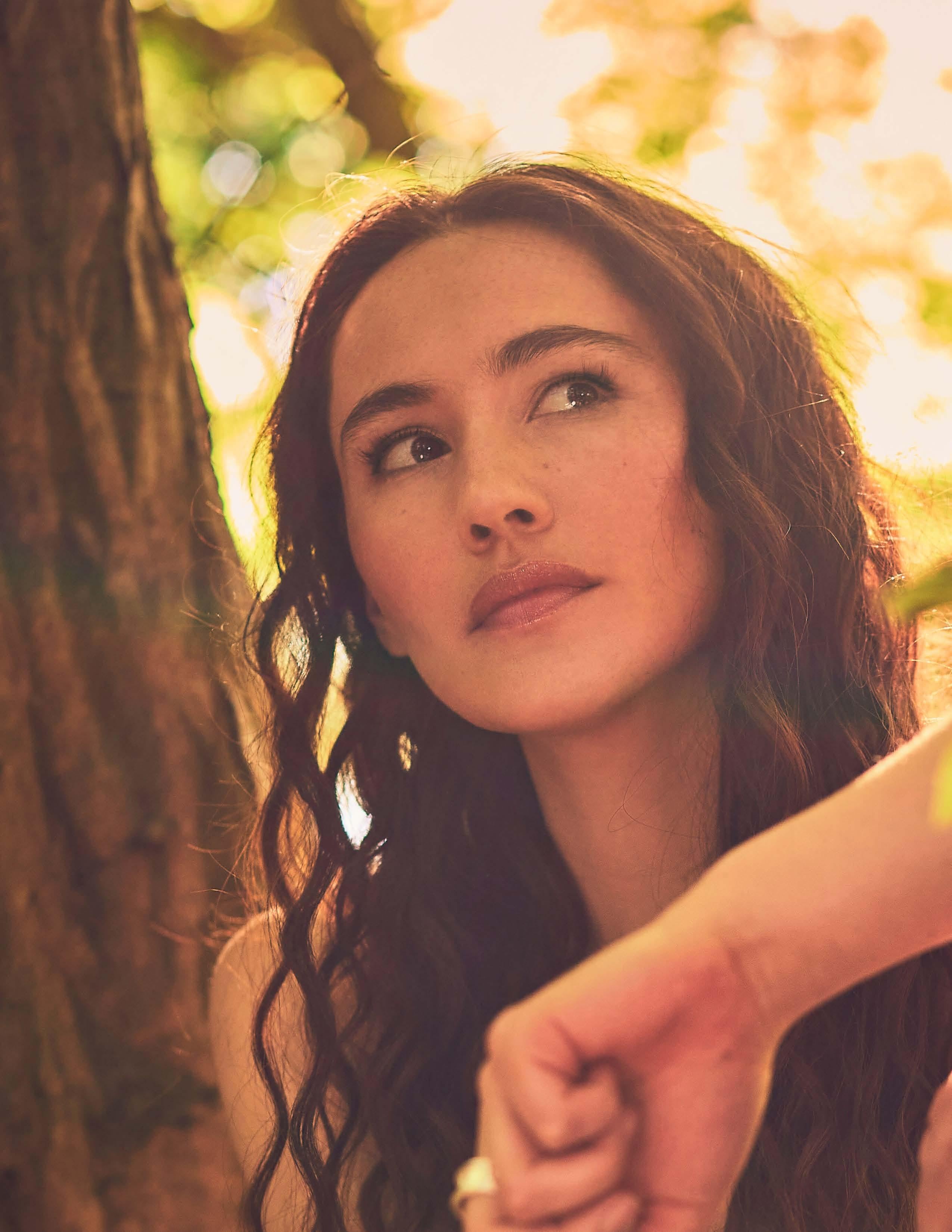
EXCLUSIVE INTERVIEW ‘TWIN FLAMES’
CALY BEVIER
‘HEAD HELD HIGH’
DR. KATYA ARMISTEAD
‘YOU BELONG HERE’ W/SONJA MONTIEL
PAUL S. ROGERS
‘YOUR GREEN ROOM’
ELLE SELINE
‘GETTING & STAYING’
DR. TODD BROWN
‘IT’S NOT ME’
KATHERINE WINTER-SELLERS
‘IN SEARCH OF ALUMINUM’
DARREN MARGOLIAS
‘IT TAKES A BEAST’ W/ALEXANDER TAYLOR
PHOEBE COLES
‘A HUMAN RIGHTS HERO’ W/TANITH HARDING
THE COMPASS EDITION ALIGNED WITH INTENTION

















ISSUE 41
PROUDLY SUPPORTED BY OFFICIAL EDITION PARTNER ARTISTS FOR TRAUMA




THE COMPASS EDITION
AwareNow Magazine is a monthly publication produced by AwareNow Media™, a storytelling platform dedicated to creating and sustaining positive social change with content that inspires and informs, while raising awareness for causes one story at a time.
IT’S NOT ME
SUBSCRIBE FOR FREE: WWW.AWARENESSTIES.US/SUBSCRIBE

3 www.IamAwareNow.com
ON THE COVER: CHRISTINA CHONG PHOTO BY: ALEX JAMES
CHIEF OGIMAA
CREATOR’S CALLING
ARTISTS ELIZABETH BLAKE-THOMAS
FLAMES CHRISTINA CHONG YOUR GREEN ROOM PAUL S. ROGERS INTENTION INDIVISIBLE ARTS/VICTORIA WHITE GETTING & STAYING ELLE SELINE ACCESSIBLE ADVENTURE KYLE KRANICH 006 012 016 028 032 040 044 HEARTCHARGED BETHANY & HANNAH KEIME COURAGE REQUIRED GABY MONTIEL
HELD
CALY BEVIER/AWARENOW MUSIC EVERY PIECE TELLS
ABBIGAIL WADE/LAURA SHARPE IT TAKES A BEAST DARREN MARGOLIAS/ALEXANDER TAYLOR THE BECKONING ROAD BURT KEMPNER TIMES OF GREAT INJURY PHIL EICH 048 060 062 072 078 082 084 IN SEARCH OF ALUMINUM KATHERINE WINTER-SELLERY ART STREAMS AWARENOW
WE ARE ALL
TWIN
HEAD
HIGH
A STORY
DR. TODD BROWN
KIDS BRIAN MARTINDALE
KIDNEYS FOR
DR. KATYA ARMISTEAD/SONJA MONTIEL BLESSED MICHAEL PINGLE A HUMAN RIGHTS HERO PHOEBE COLES/TANITH HARDING 090 094 098 102 110 114 122
YOU BELONG HERE
AWARENOW / THE COMPASS EDITION


Our intention creates our reality.
Wayne Dyer
Beside me now are the parts I’ve come to know But never fully understand And stand I will
For something more than I’ve become With change my constant And direction my variable
My compass has evolved
Still so many problems to be solved
With no path at all
Here I rise or fall
But it’s not the win that matters
It’s my intention



I’ve yet to mention Or even comprehend

Here now we start or end
Last but not lost
This breath I hold in And let out to believe again.
ALLIÉ McGUIRE Co-Founder of AwareNow Media
Allié started her career in performance poetry, then switched gears to wine where she made a name for herself as an online wine personality and content producer. She then focused on content production under her own label The Allié Way™ before marrying the love of her life, Jack, and switching gears yet again to a pursue a higher calling to raise awareness and funds for causes with AwareNow Media.
McGUIRE Co-Founder of AwareNow Media

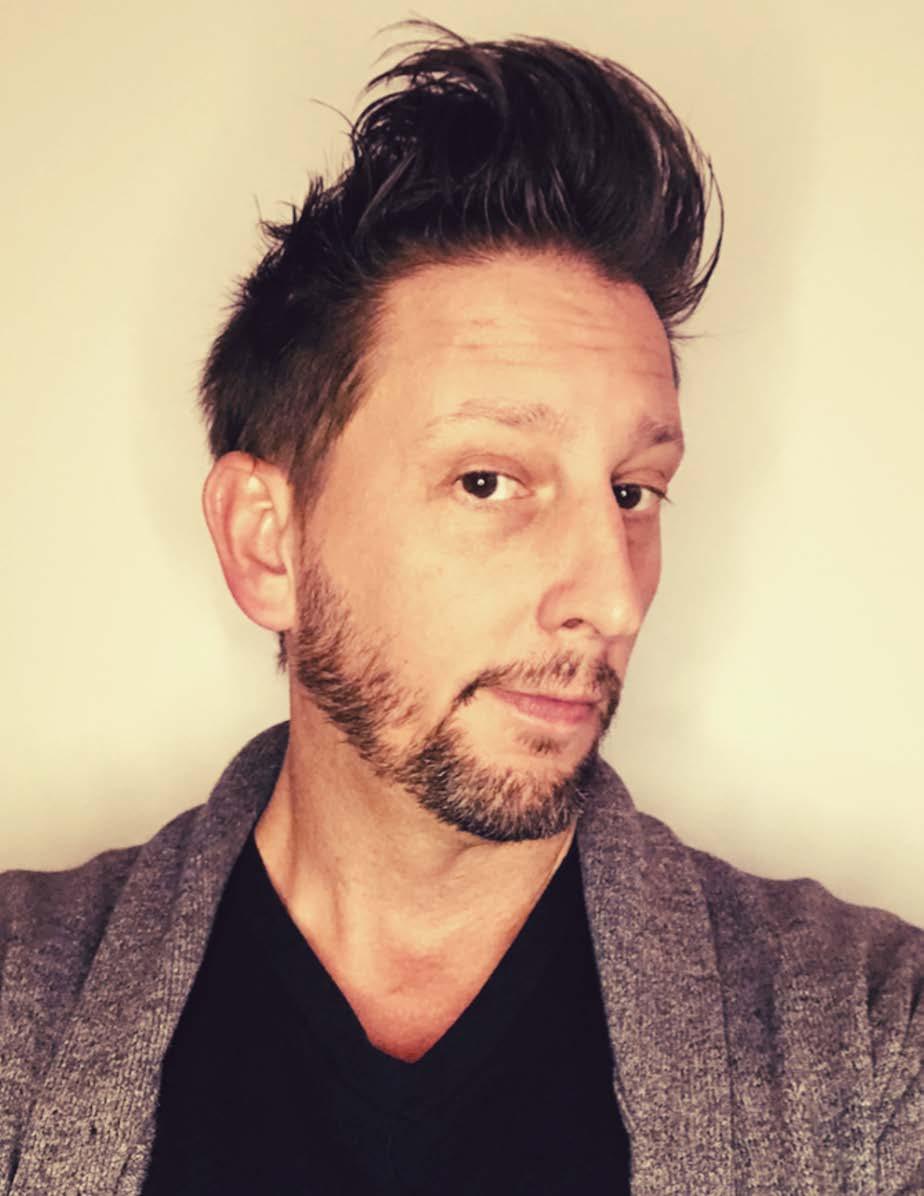
Jack got his start in the Navy before his acting and modeling career. Jack then got into hospitality, focusing on excellence in service and efficiency in operations and management. After establishing himself with years of experience in the F&B industry, he sought to establish something different… something that would allow him to serve others in a greater way. With his wife, Allié, AwareNow Media were born.
DISCLAIMER: The views and opinions expressed in AwareNow are those of the authors and do not necessarily reflect the official policy or position of Awareness Ties. Any content provided by our columnists or interviewees is of their opinion and not intended to malign any religion, ethnic group, political group, organization, company, or individual. In fact, its intent is not to vilify anyone or anything. Its intent is to make you think.
www.IamAwareNow.com

@AWARENESSTIES
@AWARENESSTIES
@AWARENESSTIES

5
www.IamAwareNow.com
AWARENOW / THE COMPASS EDITION
JACK
CHIEF OGIMAA



6
www.IamAwareNow.com
When you understand natural compass, you never get lost.
AWARENOW / THE COMPASS EDITION
ANISHINAABE KNOWLEDGE KEEPER, CHIEF OF FOOTHILLS OJIBWAY ON TURTLE ISLAND
BEGINNING

 CHIEF OGIMAA
CHIEF OGIMAA
CREATOR’S CALLING FROM THE BEGINNING TO NOW: LESSON 18 (NATURAL COMPASS)
Ogimaa, or 'Jim' as he’s called, is an Anishinaabe Runner & Knowledge Keeper. He is Chief of Foothills Ojibway on Turtle Island. Hidden and protected from the colonized world in his youth, even in his childhood, Jim has lived a life in a legacy of service to his people and to Creator. He holds and preserves sacred knowledge that has been passed down for generations. It is this indigenous knowledge that must be protected for the safety of his people and the preservation of their culture.
We need to think about the natural world.
The natural world includes everything… has everything we need. Everything is there for purpose and reason. That’s the reason for us to get to know the connectedness to the natural world. We are part of it.
As long as we live in this world, nothing is going to change… unless we change it…but we must know the effects of what is going to happen… when we change things on top of it.
It’s not going to be the same natural order of everything…natural instructions, natural guidance and directions… these directions are part of the natural Spirit guidance. That is the guidance we come to be born with. The guidance we must know is what is already here. Our guidance comes through our mothers, our parents, our grandparents.
Compass is everywhere. People need to be guided with the spirit intact. People have started to change something and it is time to get it back. I'm going to do an example:
If you take out someone’s language, the spirit is not intact. That person will be so lost. Like putting a baby in the middle of an ocean or in the bush. It has no way to have the guidance of spirit.
That's how we came to be when we started replacing something that's supposed to guide us…. to direct us in the right direction.
In my world, as a runner, I ran. Many of us were little boys and we didn't carry an instrument… what I mean by an instrument is what they call a compass. I didn't carry that… but I did kind of figure out there's spirit.
One day I was helping my grandfather build a birch bark canoe. My grandfather, I thought, was a very fussy grandfather. But later I knew he wasn't… It was that he was choosing the right trees to use when you build a birch bark canoe. These trees always take you back to where the roots are… The same as the geese come back to where their spirits connect them with spirit knowledge, to where they came from.
7 www.IamAwareNow.com
‘FROM THE
TO NOW’ EXCLUSIVE COLUMN BY
AWARENOW / THE COMPASS EDITION
Everything is there to guide you back.



8
www.IamAwareNow.com
AWARENOW / THE COMPASS EDITION
CHIEF OGIMAA ANISHINAABE KNOWLEDGE KEEPER, CHIEF OF FOOTHILLS OJIBWAY ON TURTLE ISLAND
“There will be no changes in the constellations.”

We need to think about the natural world because the natural world has everything we need and has a purpose. Sometimes when there are trees floating around in the ocean, they go back to where they are taken from. The natural order is already there.
Spirit guides through the first part when we were making the birch bark canoe… some of them are very huge. We use the birch tree that we take the bark from. We use the tree to bend and put that canoe together but we need Tamarack roots (vines) for the birch bark canoe as well. The vines from the Tamarack tree are very strong… and used to sew the canoe together. With my grandfather, I got to learn how to do that. Using moose bone we made our needles…
These things were all alive…. like us. You never forget where you are born. It's a compass so it will bring you back. Your mind will always be aware of where you were raised… where you grew up, and your natural spiritual compass is already there.
You never forget. You can almost picture in your mind what was there and what is there… but if it isn't anymore, you're going to miss that.
A long time ago when we traveled in the Great Lakes of Ontario, people used to travel with those canoes and they could go far out into the Great Lakes and come back exactly to where they began.
They never got lost either with the constellations up there at night (I mean like the Big Dipper, Little Dipper, Arrowhead). All these things are part of the directions like a compass, but these are the things that are very natural. You cannot erase those. You cannot change them. There will be no changes in the constellations.
If it was cloudy, we used this:
My grandfather would put the head of a loon at the front of the canoe because I'm from the loon clan. When it is cloudy, and we would be traveling, at nighttime sometimes, the moon would come out and we could see the light on the water. There would be a shadow on the water in front of us. When I would wake up from sleeping, my grandfather would be pulling that canoe into shore. We would be at our tipi home.
Later I started asking my grandfather about this. When we were out there, why were you speci fic in what kind of tree to use?
“First of all, Tamarack roots are very strong,” he said. “Second, they are connected to the water and moss land. They only grow there and it guides them back to where they are from. A Tamarack and birch tree are both connecting to moss land… When you understand natural compass you never get lost. Everything is there to guide you back.”
My grandfather would break a little branch and put it with the wood. That's where we were from… sticks float around and stay near. They come ashore somehow…. that spirit connection is in that place. So the wood has that place and connects to that moss land. If the sun is out, you can put the stick in front of the boat. The wind will come from a direction based on the time of year. Things grow where they're meant to be. The natural compass will help you grow things… They're always going to be connected as intended. The compass is everywhere… unless you change the natural order.
9 www.IamAwareNow.com
AWARENOW / THE COMPASS EDITION



10
www.IamAwareNow.com
What is natural is going to be there for a purpose and for good...
CHIEF OGIMAA
AWARENOW / THE COMPASS EDITION
ANISHINAABE KNOWLEDGE KEEPER, CHIEF OF FOOTHILLS OJIBWAY ON TURTLE ISLAND
“Pretty soon we’ll lose everything that’s natural order, because we’re going to paint over everything.”
Is it easy to be lost in the city? That's like painting over something…. When mankind says he knows more than the natural creation…. Pretty soon we'll lose everything that's natural order, because we're going to paint over everything. Like clear cutting a forest, it's gone. It's changed…
Our white brothers got a lot of trees to make ships when they came. When they came back, the trees guided them back to their roots…. to the same place they came from.
Everything has roots. It's like the lineage network. The trees find their roots. The tree was alive. It grew. So it will return to its roots. The lineage network is spirit. That's one way of looking at compass.
Today geese land on houses. It's because the house is built where the moss land was. Same even with rabbits. Same with all kinds of living things. There is compass even with the trees.
When you change something, you're taking things off course. So the Spirit doesn’t recognize the lineage, network, and fit of things. Today we rely on technology. We don't use the natural compass so you can see the shadow in the water to guide you… the shadow directions… come from the trees… you don't get lost. And the wind also helps.
With Anishinaabe, we have no compass and no technology. We want to keep that strong even if the government wants to erase that knowledge. What is natural is going to be there for a purpose and for good...
It is the reason for us to know the connectedness to this natural world because as long as we are part of it… we have the natural spirit guides and that guidance that we were born with. ∎
As told to and submitted by Kathy Kiss
Please watch for more teachings.
CHIEF OGIMAA (ACHA-KOOH-WAAY)

Anishinaabe Knowledge Keeper, Chief of Foothills Ojibway on Turtle Island

www.awarenessties.us/ogimaa
I am Ogimaa (Acha-Kooh-waay), I begin with words from my own language to say hi to everybody. My identity… which is… because God put me in this part of the world is my Annishinaabe language and name. That means “leader” for people and environment here. So I am not saying I am the leader of Turtle Island but that’s what that means. It is an individual’s name, which is a spirit name that we carry on from our traditional culture and lineage in this part of the world. We were put here on this Turtle. This Turtle Island is massive.
11
www.IamAwareNow.com
AWARENOW / THE COMPASS EDITION
Say it out loud, “I’m an artist.”



12
www.IamAwareNow.com
AWARENOW / THE COMPASS EDITION
ELIZABETH BLAKE-THOMAS STORYTELLER, PHILANTHROPIST & OFFICIAL AMBASSADOR FOR HUMAN TRAFFICKING AWARENESS
‘MEDICINE


WITH WORDS’
EXCLUSIVE COLUMN BY ELIZABETH BLAKE-THOMAS
WE ARE ALL ARTISTS CONNECTING DEEPER THROUGH ARTISTRY
Everyone is already an artist, even if society doesn’t categorize them as such. A grandparent is an artist when they tell a grandchild a story about when they were growing up. That story is a piece of art that has the ability to be passed down through generations. When a mother or father teaches their friend or child how to cook a favorite recipe, that is art. Art cannot be clearly defined as a Picasso or Rembrandt. Being an artist is an expression of human creative skill and imagination, with art taking a variety of forms.
Everyone is capable of making art. Everyone is capable of expressing their innate creativity in some way. We don’t need to wield a paintbrush or a camera to be called an artist. We all have the ability to create, and we actually already do it every day. We are artists when we cook, when we run, when we inspire. We are all born with a creative spirit, unique to our own passions. Expressing ourselves in a focused, meaningful way is being an artist. Being passionate and purposeful about a career or our family is creating art. What we put into the world becomes our art, whether that is fixing up cars, writing a screenplay, or raising a family. Embracing those passions, thus creating art, forms the beautiful, ever-changing painting of life.
No matter the form, country of origin, or culture, art has the power to affect all of us. We can experience the art of others and we can share our own art with others. The power of sharing our own art with others can be immense. Art binds. It strengthens communities. It brings people together emotionally and physically. Through art, stories might be shared as people interact and bond. Art generally expresses important ideas or feelings. There is a chance of learning something new. A chance for reflection. A chance for connections that transcend differences. Every day may not be about creating our own art, but instead experiencing someone else’s art. Taking the time to experience someone else’s art often causes you to feel something, such as getting emotional watching an opera or finding a taste of food absolutely delicious and unique. It is just as important to support other people’s visions and artistry, causing us to naturally listen and look at the world around us through other people’s eyes.
As we get older, the artist in each of us, that passionate, creative spirit to express and emotionally affect others, might alter and change, maybe even become suppressed.
Don’t let the practicality of life keep you from expressing yourself. Whatever your medium of passionate expression is, keep sharing it with others. We all have a unique way to look at the world, so embrace your art!
13
“We are all born artists, the problem is to remain an artist as we grow up”. - Pablo Picasso
www.IamAwareNow.com
AWARENOW / THE COMPASS EDITION


14
www.IamAwareNow.com
AWARENOW / THE COMPASS EDITION
Ignite
or reignite an emotional state in others as well as ourselves.
ELIZABETH BLAKE-THOMAS STORYTELLER, PHILANTHROPIST & OFFICIAL AMBASSADOR FOR HUMAN TRAFFICKING AWARENESS
WE ARE ALL ARTISTS
Written and Narrated by Elizabeth Blake-Thomas https://awarenow.us/podcast/we-are-all-artists


Say it out loud, “I am an artist”.

Let’s express our inner selves, our perception of the world, and who we are. Create. Maybe that’s keeping a journal, drawing, painting, sculpting or playing an instrument. Maybe that’s solving a new math equation, making the perfect cup of coffee, or designing a new software program. Whatever it is, decide today to create. Ignite or reignite an emotional state in others as well as ourselves.
When we embrace our unique ability to create art and when we use that art to positively affect and impact others, we are able to connect deeper as a community.


So let’s encourage each other and share our art. ∎
ELIZABETH BLAKE-THOMAS
Storyteller, Philanthropist & Official Ambassador for Human Trafficking Awareness
www.awarenessties.us/elizabethblakethomas
Elizabeth Blake-Thomas is a British award-winning storyteller and philanthropist based in Los Angeles. She is the founder and resident director of entertainment company Mother & Daughter Entertainment, whose motto is “Making Content That Matters”, putting focus on each project starting a conversation amongst viewers. She is also the creator of the healing methodology Medicine with Words which is designed to help “spring clean” your mind and help free yourself from unnecessary noise so that you can live a more purposeful, peaceful life. She is the author of Filmmaking Without Fear which is a multi-medium resource curated for indie filmmakers. Her FWF podcast is available on all streaming platforms, and the book of the same name is available on Amazon. She is a regular on panels at Sundance, Cannes and Toronto International Film Festival, Elizabeth mentors wherever possible, ensuring she sends the elevator back down to all other female storytellers.

www.IamAwareNow.com AwareNow Podcast
TAP/SCAN TO LISTEN
AWARENOW / THE COMPASS EDITION
CHRISTINA CHONG ACTRESS & SINGER


16 You’ve got to be prepared to
you want to win. www.IamAwareNow.com
lose if
AWARENOW / THE COMPASS EDITION
Photo Credit: Alex James
EXCLUSIVE INTERVIEW WITH CHRISTINA CHONG

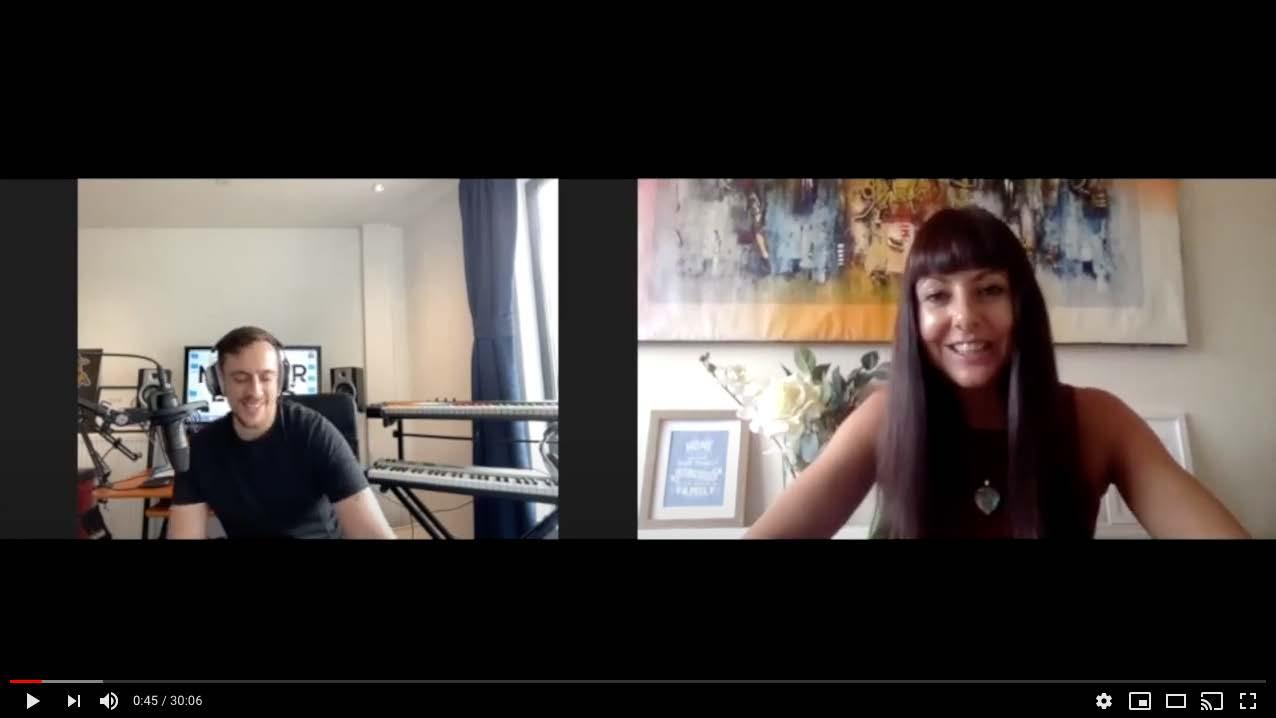


TWIN FLAMES CHALLENGING & HEALING WITHOUT GETTING BURNED

International television and film actress, Christina Chong, has been a dancer since the age of 3. Today, she is also a singer releasing her first EP, titled ‘Twin Flames’. For the past decade and a half, Christina has been rediscovering herself in Hollywood both personally and professionally. Through exploring rejection, adversity and personal development, she’s been writing and producing original content to orchestrate hope.
ALLIÉ: Surviving and thriving in Hollywood is hard work. Committed to making a name and a place for yourself in television and film, you've succeeded and starred in Black Mirror, Dr. Who, Line of Duty, and so many more. I'd like to begin by talking about work ethic. To begin this conversation, let's talk about your father. Can we start there?
CHRISTINA: So, it's funny. You say, "Oh, you've succeeded..." But there's still a part of me that feels like I haven't. I mean, obviously, I'm upfront and I’m out there, but at the same time... It goes back to roots. I'm currently writing a project that I can't talk too much about. But it's based on my family's story. It's based on my dad actually, and I had to do a lot of research over the last few years into his history. His family, his father, who I never met, who died quite young. When my father, whose name is Chick Chong... What a cool name, Chick Chong. When he died... He'd
CLICK, TAP OR SCAN TO WATCH NOW AWARENOW / THE COMPASS EDITION
CHRISTINA CHONG ACTRESS & SINGER





18 There’s
fine
www.IamAwareNow.com
a
line between working hard and trying to prove yourself.
AWARENOW / THE COMPASS EDITION
Photo Credit: Alex James
“You have to work hard for the joy of it and the passion of it.”
CHRISTINA: (continued) respected businessman in Hong Kong, coming to the UK where there was no support for them at all... like none of them could speak English. He kind of... Well, my dad watched it -- his demise essentially. A few years after being here, he died of a stroke. And on his deathbed my dad kind of said to himself, "I'm gonna do what you couldn't do. I'm going to live out what you should have been able to live out had you not been forced to flee from your country and come to the UK." And so my dad's mentality that comes culturally with Chinese work ethic... it's like, you know, we work. We work, we work, we do until we drop down. It's that kind of thing. And that comes from the cultural revolution, the Mao Zedong era. That's embedded in generational trauma. And so I realized, I connected the dots. My dad was trying to make his dad's life mean something, and therefore he passed onto me the pressure, unknowingly, the pressure of "I have to prove myself, I have to do this for my dad." Because in some ways I feel like my dad didn't fulfill his promise to his dad. He felt, I think, a failure, although not necessarily on the outside looking in, but I know deep down he probably feels like he didn't succeed. It passed onto me.
From a kid, I was constantly trying to prove myself, working hard, and it was only sitting down and having to really look at why these blocks in my career, back in the day, kept repeating. I kept getting the same pattern. I would get down to the last two, or I would get a job, but it wouldn't be the lead. It would be a small character. I wasn't getting to the place I thought I should have been getting to after all these years. I was like, "Why is it not working?" And I'm going back and realizing that actually, although that is a great mentality, and his slogan was, "If you work hard, you can do anything." And so I had that in my mind. So I was like, "Okay, I've gotta work hard. I've gotta work hard." But then actually, I learned probably only in the last five or six years, and not all in one go, kind of like slowly unpeeling the layers... There's a fine line between working hard and trying to prove yourself. It's what is the difference between I need to work hard, but you can't work hard to get something. You have to work hard for the joy of it and the passion of it. And also then researching my show, I realized that that's what I was doing for my dad, for his dad, essentially for my granddad who I'd never met. And that really helped as well to unlock a lot of things for me. So although I have that built in me, I now know how to kind of harness that and not feel... Although I do catch myself sometimes trying to maybe prove myself in certain areas. I mean, I think it was quite normal, but the majority of the time I kind of have a handle on it now.
ALLIÉ: It's really fascinating how you talked about the fact that there is an element of the work ethic being sustained, or almost even a byproduct of generational trauma. And then to recognize it for what it is, and then redirect with the intentionality behind it. Right? Thank you so much for sharing that. But here's the thing, we can't talk about dad without talking about mom. So when it comes to work ethic, that's required of course to bring home a paycheck to keep the lights on, but it's also required to bring up kids. Six children your mom brought up in government housing and on welfare. Your mother not only supported you and your brothers and sisters, but she supported your dreams. My question for you now, Christina, is how did her faith in you help you find success in the arts?
CHRISTINA: I get quite emotional when you say that actually, because I had a conversation, I think it was last... the end of last year. I had a bit of a cry with my mum because I said to her, "You made this all possible, mum." And I thanked her because I couldn't have done it without her. Obviously, there was so many people involved, and it takes an absolute village to get here. But I, as a kid, just remember watching my mum. She'd take me, I think it was dance classes, at least three or four times a week. She would drive me in her little beat up Ford Fiesta car and wait for me with the other kids in the back. She’d wait for me outside. We were all eating like sandwiches, banana sandwiches. Or what else did we used to have? Like chicken and coleslaw sandwiches and a French baguette in the car. We'd have our dinner in the car while she was waiting for me to do my dance class or whatever. Then drive half an hour home.

19 www.IamAwareNow.com
AWARENOW / THE COMPASS EDITION



20
www.IamAwareNow.com
I was bullied practically every day.
CHRISTINA CHONG ACTRESS & SINGER
AWARENOW / THE COMPASS EDITION
Photo Credit: Joanne K
“My curse was being Chinese.”

CHRISTINA: (continued) So, it wasn't just my mum. It was my whole family. You know, my brothers and sisters had to go through a lot as well in order to support me, like as you say as a byproduct. My mum was doing this, but it meant that then maybe certain other siblings couldn't necessarily do... And I do feel guilt in that in some ways... that my mom did spend a lot of time with me. But she, again, they both had the same stance. If you work hard, you can do anything. That was my inner voice. "If I just work hard, I can do anything." And then having the softer side of her, when I got too stressed, my mum was there for the hugs and the helping me sew my dance costumes and just believing in me. She actually told me that when I was a baby, she said to my dad, "You know, Christina's gonna be famous." When I was a baby, she just had this feeling. She was like, "Christina's gonna be famous." And he was like, "No, no." He didn't believe her. And you know, she revels in that. She was like, "I was right. You see, I knew it from the beginning, from a baby." She was never a pushy mom either. I was the one who led. I was the one who pushed her to allow me to do things. She just had to find a way to make it work.
The biggest challenge my mum had, as well as obviously the day-to-day, the emotional energy, and finding the time... I got into a performing arts school at the age of 14, and the fees were astronomical compared to what we had coming in as a family. And she found a way. She built this little portfolio folder of all the awards I'd ever won, all the newspaper clippings of me with my awards and sent it off to local businesses in the area, in this little village. And we had two weeks to find the money to get me to this school. And she did it. She found a company that would sponsor me to go to this school. And then we all had to move from the north of England to London in order for me to go to the school. So that's how I feel like my siblings... they were uprooted. They came out of school, and they had to move schools so that I could go into performing arts, which is kind of like a Juilliard type of school.
ALLIÉ: My goodness, there was so much. It was a whole family affair that everyone played into the reality that's become. So, beyond our parents and what they give us, there's a lot that we get on our own along the way in life. One of those is adversity. It's a blessing, often disguise as a curse. Christina, can you share a personal story about adversity in your life that started out as a curse, but then became a blessing?
CHRISTINA: Yeah... I was bullied as a kid for being Chinese. And this, in a sentence on it own, "My curse was being Chinese." It sounds awful, but at the time, it felt like that because I felt shamed. I was bullied practically every day. And you know my name... Your name's called out, "Christina Chong". It's a reminder for everybody that I am Chinese. And then, I'd be stood in assembly with kids, like pulling their eyes out while I'm showcasing my artwork or whatever. I was made to feel like I wasn't good enough. I really felt less than. And when my dad would come and pick me up from school, I would be absolutely... I'd really dread it because the next day I knew the bullying would get worse because they'd see him. They were doing that even when in front of him... as we walked through the school playground. So, that was that time, schooling years. Then when I went to Italia Conti, which is the performing arts school, that was the first place where I felt welcomed and I felt like I could be an equal. People welcomed me with open arms. There was lots of different ethnicities there and cultures. And I remember a singing teacher, I don't remember his name, but I remember him saying to me in a singing class, there was a group of us, probably like 20 of us in the class, and he was talking about people who will get work when we leave. And he pointed to me and he was like, "You are gonna get a lot of work because you have Chinese heritage." And I remember thinking at the time, "Really? Because that's not... I don't feel like..." Especially in that era, it was more about Caucasian actors and actresses being leads. There wasn't much of the diversity out there, especially in the UK. I really thought, "No. No, that can't be right." And then it turned out to be right. Years later, I was like, "Wow, the world's changed." It still needs changing more. But it's now a blessing, and obviously I've learned to accept it and love it. Now, absolutely, it's a part of me. It's about self-love essentially, isn't it? And so now that thing that I thought was a curse is probably one of the things that I am most proud of -- being a part of my Chinese culture and involving myself in it more. Also, now writing this TV show, which as well has helped me learn more about it, enabled me to embrace it more as well.
21 www.IamAwareNow.com
AWARENOW / THE COMPASS EDITION


22
www.IamAwareNow.com
What will be will be.
CHRISTINA CHONG ACTRESS & SINGER
AWARENOW / THE COMPASS EDITION
Photo Credit: Alex James
ALLIÉ: So, just as adversity is unavoidable, rejection is as well. Now as an actor, it's an integral part of the profession. How do you deal with it though, Christina? How do you find a win amidst a loss?
CHRISTINA: For me, I have been working with a life coach because I struggled with that. I really did at the beginning my career. It took it personally. And it was only probably 2010 or 2011 that I started working with him. And I still work with him now. Michael James, his name is. He bases his work on the law of attraction and creating positive mindset. So one of his exercises that I do now regularly, whenever I'm feeling anxious or frustrated or stressed about something, I literally write out a list. Good things about not getting the job, for example. Right? This would be the rejection. First of all, you write about the feeling behind it. So good things about feeling upset and frustrated. Everyone feels that, it's a normal feeling. Who says that feeling is a bad feeling? It's an opportunity to embrace that feeling. It is a bad feeling because we call it a bad feeling, right? But if you just embrace it, it dissipates. It's an opportunity to evolve and grow past this. And then once you're more okay in the accepting of the feeling, then you then go into the second exercise, which is good things about the actual situation. What's the good things about not getting the job? Well, I wasn't supposed to get the job because I didn't. Maybe there's something better around the corner. It gives me more time to do X, Y, Z. And rather than just thinking about it, the writing actually makes it go in however many times more because you're thinking it, you're writing it, you're seeing the writing, and you're reading the writing. So, it's like it goes in four more times. Now that's how I deal with it.
There’s something that my gran used to tell me, "What will be, will be." It's almost like giving it up to a higher power as well, whether that's your higher self, the universe, God, angels, or whatever you want to call it. I do believe there's a universal energy that's more than us. And by giving it up, giving up whatever it is that you feel like you should get or want or need or desire, giving it up to that energy, this or something better. This really helps me as well because I genuinely believe there's a unique divine path for all of us. When we look at other people, we compare because we think we want that thing. I don't believe anybody else's path will make us genuinely happy. Our unique divine path is the only path that will make us happy. And that is revealed in the right time.
ALLIÉ: Thank you for sharing how you personally deal with rejection. You shared the multiple touch points, to say it, to write it, to then read it how that just helps us to work through it. And again, to your point, things happen for a reason, but things don't happen for a reason and that divine path that we can't deter from, even if we try, we can't. Yeah. So we might as well be on for the ride. I want to switch gears a little bit. I want to talk about flames, 'twin flames' to be exact. An intense soul connection with someone thought to be a person's other half, sometimes called a mirror soul, a twin flame relationship. Let's talk about that can be both challenging and healing at the same time. When it comes to music, your music, 'Twin Flames' is the title of your debut EP, and it's the name of one of the four original songs that is amazing. I'd love to hear this story behind the song.
CHRISTINA: I met my twin flame. I think it was in 2016, and it was one of those instant connections. It was in an acting class. And we'd been put together in this scene, which was a romantic scene. It was a scene from Blue Jasmine where Sally Hawkins and I forget the actor's name, but the character's name is Chili. With Sally Hawkins and Chili, and it's kind of like a makeup scene. They've broken up, they're coming back together, and it's kind of like a seduction, flirty scene. Anyway, so I'd been put together with him, and I saw him for the first time.
I'd been out of a relationship for almost a year at that point, and I was so happy to be single. I was in that place where I didn't want a relationship. I was very happy with my group of friends and what I was doing with my life. And then I

23 www.IamAwareNow.com
“I genuinely believe there’s a unique divine path for all of us.”
AWARENOW / THE COMPASS EDITION
CHRISTINA: (continued) saw him and it was an instant like... Whoa. Shut that down, whatever that was. Shut that right down. Anyway, in the scene we had to kiss. And with the technique that I do, the Chubbuck technique, you kind of have to do it, otherwise... That's the whole point, right? You actually need to kiss, otherwise it's gonna break the whole scene. It's not gonna make sense. But I kind of kept that bit. I was like, "Let's just do that on the day. Let's just, we'll just figure that out on the day, you know?" The night before the scene I was like, "Hang on a minute. That's not gonna make sense. That's gonna put us right out of the scene. We're supposed to have been lovers for years, and it's just gonna be really awkward doing that for the first time." I said to him, "Let's maybe rehearse it the day just before class." And he was like, "Okay, yeah, I'll come to yours." So, he came to mine, and we kind of both sat there. I was so awkward... And he's like, "Can I try something?" And I was like, "What?" And he just came to me and kissed me... It was like a zip. I felt a physical zip opening inside... and I could not shut it down after that. I was like, "What was that?"
We started dating, and it very quickly became a thing. I'd been to a psychic, and I look back. She'd actually predicted him very precisely. She'd said things which... there's no way it could not have been him. I thought it was way ahead in the future, but it had come in quicker. It was an amazing, intense, passionate connection. But then I was also having extreme abandonment issues within the relationship. Fear, you know, because that's kind of what Twin Flames is about, right? You can have this passionate, incredible relationship, but the stronger it is, the more passionate it is, the more you have to lose. So you're kind of like walking the tightrope between keeping the passion alive and losing it forever because of the fear of something so amazing burning out. Anyway, so she (the psychic) said, "You guys have been in several lifetimes together. The last lifetime was in the 1800s and you were both in a little village town in Sicily… I think it will help you (me), if you go to Sicily together. I think it'll be very healing for you.” So, obviously I get home and book Sicily, and I'm like, "We gotta go! We gotta go to Sicily."
We arrive in Sicily, to this tiny little fishing village, and I was like, "Okay, well nothing's really happening. I mean, what's supposed to happen? I dunno." We go to sleep that night, and I wake up in the middle of the night in this hotel room and the panic, fear... I couldn't breathe. I thought I was gonna die. I had this panic attack. You know when you get really upset and you can't breathe? It was like that. I genuinely thought I was going to die that night. I got out of the room. He was still asleep. I went out onto the balcony, and I was literally looking out going, "There's nobody here. This is where I die... I don't have my phone. I can't go back in that room to get my phone... In any minute, I'm gonna lose the ability to breathe."
Eventually he came out and said, "What's wrong? What's wrong?" I was like, "I can't." I couldn't talk. Anyway, he was there and just him being there... I was like, "Okay, I'm a bit safer now." And I managed to get my mind back and settle my breath, but I couldn't go back in the room. He made a little bed for us outside on the balcony, and all I can think was that was trauma coming out. She (the psychic) said when we were in the 1800s together, he left for some political reason, but he was always supposed to come back. But he died at a distance and never returned. So, I sat waiting for

24 www.IamAwareNow.com
“Fear, you know, because that’s kind of what Twin Flames is about, right? You can have this passionate, incredible relationship, but the stronger it is, the more passionate it is, the more you have to lose. ”
AWARENOW / THE COMPASS EDITION
CHRISTINA: (continued) him to come back, and I felt this huge abandonment, and I didn't know why. It was like my body was replaying that emotion, which was the weirdest thing ever. So, that's kind of referenced in the song... It's about the beginning of a twin flame relationship. The whole EP is about that relationship really. It's the meeting of the passion, the love. The second song is then about the breakup. The third song is about the healing. And the fourth song is about being on the other side of it. I kind of a rebirth of myself.
ALLIÉ: Wow. Okay. So, I literally...I wish... I mean, you can't see, but I have goosebumps on my legs still from that story that you just shared. That is so wild. it must have meant so much to be able to pour that experience into a song that you could then share.
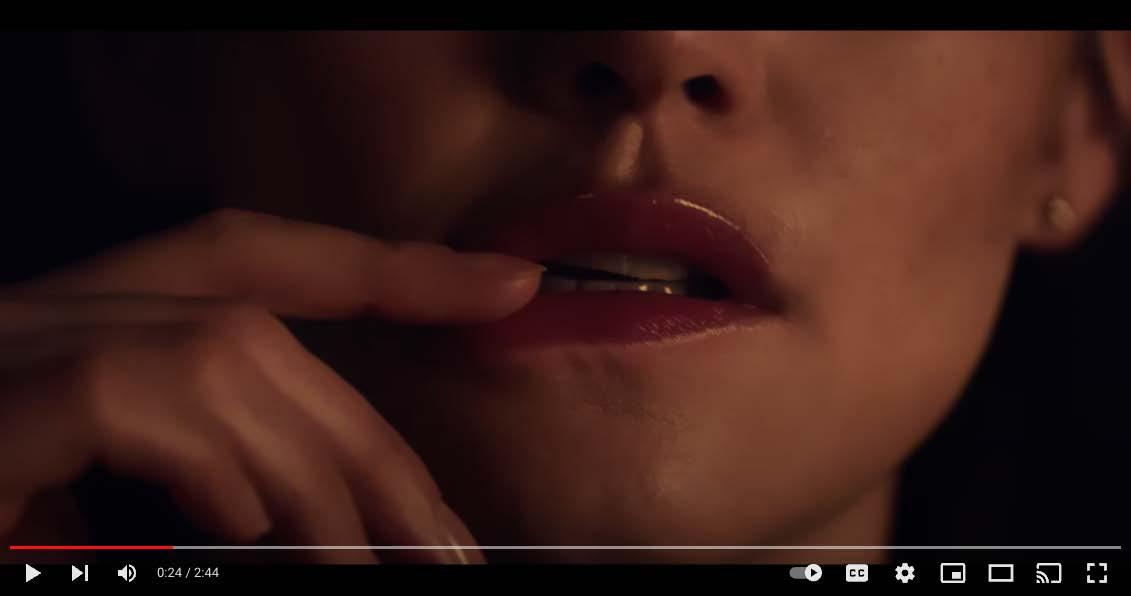

CHRISTINA: It was very cathartic. Also, I don't think... If we hadn't have broken up, I don't think I would've done this whole singing thing because I wouldn't have had the need to express from my authentic place. Although it's always something I've wanted to do, I genuinely believe we were supposed to break up. We weren't supposed to be together, but this is what came from it, you know? And like they say, twin flames... It's not often that they can stay together, but they help each other grow and evolve. And this is a huge thing where he helped me.
ALLIÉ: Let's end our conversation this way, with a bit of advice perhaps. For those who dare to dream as you have, but who don't pursue that dream because they're afraid of being burned, what advice do you have for them, Christina?

CHRISTINA: So the first thing that comes to my head is something my dad told me. You've got to be prepared to lose if you want to win. That really stuck with me. A poker game, a love situation work, you've gotta be in it, and you've got to be willing to not get it in order to get it. I think it's that thing of non-attachment, right? If you're attached to the outcome or the expectation of what it will be, you are too needy. You are grabbing. You are holding onto it... If you just hold sand in your palm without squashing it, just let it be whatever it's supposed to be... but if you squeeze and tightly hold it, the sand goes through your fingers. That really helped me. I think that was to do with love that specific time... I think it was actually work as well. And it really helped me in a way of my actual acting.

www.IamAwareNow.com CLICK, TAP OR SCAN TO WATCH NOW
AWARENOW / THE COMPASS EDITION
CHRISTINA CHONG ACTRESS & SINGER


26
www.IamAwareNow.com
I think you can only really create from a place of love.
Photo Credit: Joanne K
AWARENOW / THE COMPASS EDITION
Exclusive
 Interview w/Christina Chong https://awarenow.us/podcast/twin-flames
Interview w/Christina Chong https://awarenow.us/podcast/twin-flames


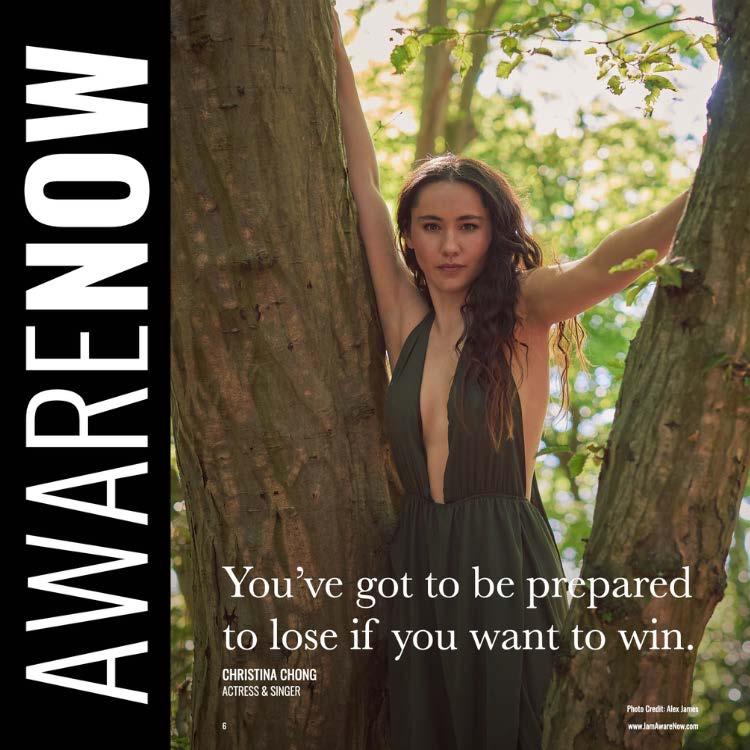

CHRISTINA: (continued) Now, before a scene, I go, "Do you know what? This could be really shit. (Sorry, excuse my French.) I could really mess this up. And so what? Because if I want a really good performance, I've got to be pre prepared for it to be really rubbish as well. And that place of freedom... I think love, and creation comes from love, right? I think you can only really create from a place of love. Needing something, pushing for something, trying to prove something, it comes from a place of fear. I think if you just love and be in the moment, that's where the creation comes from. That's where things can grow and build, I think.
ALLIÉ: Well, I'm in love with this moment and with this conversation, my goodness. Christina, thank you so much for sharing your story, for sharing your music, for sharing your advice, for helping all of us just become a bit more aware now. Thank you so much.
CHRISTINA: Thank you. So lovely to talk to you. ∎
27 www.IamAwareNow.com AwareNow Podcast
TWIN FLAMES
TAP/SCAN TO LISTEN Follow Christina on Instagram: @christinachongx
“…trying to prove something, it comes from a place of fear.”
AWARENOW / THE COMPASS EDITION
PAUL S. ROGERS


28
www.IamAwareNow.com
Maybe your internal compass is showing you a different direction…
AWARENOW / THE COMPASS EDITION
TRANSFORMATION EXPERT, AWARENESS HELLRAISER & PUBLIC SPEAKER
PAUL S. ROGERS
YOUR GREEN ROOM REMEMBER YOUR KNOWINGS
Release The Genie Fact: A genie knows how a dragon blows out its candles.
Everyone holds a set of internal knowings. These are very different to beliefs, which were handed to us by other people when we were first born. We eventually adopt these to be our own set of beliefs. These beliefs can change, usually through time, and by greater awareness. Whereas, the internal knowings of what you truly are never change.


A knowing is different from a belief. A knowing can only be obtained through experience, whilst a belief does not require any experience. It is at our core of knowings that we process and build a framework to interact with the external world. Anything which is in alignment with these inner knowings is felt at a far deeper level than what can usually be described in words. Inner knowings are unique to a person, and they are the reasons why one person loves one thing, and to someone else it is their worst nightmare.
This invisible and unremembered centre is our own internal compass. Our very own Green Room. Green Room is surfer slang for the inside of a barrel that is produced by a wave. This term was coined due to the colour of light reflected into the barrel. In white water rafting, it is the deep area below the rapids, and in show business, it is a room in a theatre or television studio where performers can rest.
When the going gets tough, the most violent of storms may cause the ocean surface to boil, seethe and thrash against itself and any object in its way. In this midst of such a storm, even the most reliable of compass and intention is of no use. Survival becomes the only objective.
However, beneath the surface of life turbulent storms, the deeper level of the ocean remains completely untroubled. In this green room, beneath the surface where all remains serene and perfectly clear, our internal compass still points in the direction of our inner knowings.
I have come to see that adversity, whatever its form, is a challenge to see how much you actually want something. Do you fold at the first hurdle? Or are you able keep going and stay on target, despite the challenges, knowing that your Green Room is still intact?
I mentioned before that the knowings are unremembered. This is what I mean by that; it is very similar to the well known phrase “an aha moment” which was originally coined by Oprah Winfrey. It is when you hear something, and it suddenly makes sense and clicks. It is not something new you have learned. It is unlocking the door to an inner knowing of how the pieces of a puzzle fit together.
The Japanese have a word which relates to this: Ikigai. It has no direct English translation but roughly means as to that which makes life worth living. We are all familiar with the Venn diagram showing three circles labelled “What you're good at”, “What you love doing” and “What you can make a living out of”. If you are able to get a positive indication from all three areas, then you know you have found your Ikigai. It is no coincidence that the Okinawa culture, where Ikigai is to have originated from, in is a blue zone region where people are healthier and live longer than anywhere else in the world.
29
www.IamAwareNow.com
‘RELEASE THE GENIE’ EXCLUSIVE COLUMN BY
AWARENOW / THE COMPASS EDITION
YOUR GREEN ROOM
Written and Narrated by Paul S. Rogers https://awarenow.us/podcast/your-green-room
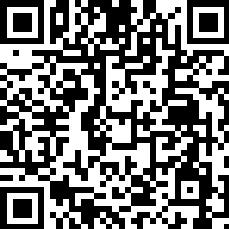

Like all others, I have had my share of adversities which, although may sound dramatic, are fundamentally the same as any other adversity. My continued recovery journey has been the hardest journey I've ever taken. Without being overly dramatic, it has been a direct flight between life and death. It is easy, at this stage, to lose sight of The Green Room and focus only on the violent surface.

Until now, my intention has always been to get better and recover fully. However, I have recently come to a life changing realization. Maybe it was never about getting better. Maybe it has always been all about transformation.

I therefore urge those of you who, at the moment, may feel lost, at the mercy of life’s violent storm, spinning their wheels and wasting precious time trying to tame the elements, just press pause and take a deep breath. Maybe your internal compass is showing you a different direction; a voyage through life’s great mystery to discover, and remember your knowings. Knowings you have had from very the start. ∎
PAUL S. ROGERS Transformation Expert, Awareness Hellraiser & Public Speaker www.awarenessties.us/paul-rogers
PAUL S. ROGERS is a keynote public speaking coach, “Adversity to hope, opportunity and prosperity. “ Transformation expert, awareness Hellraiser, life coach, Trauma TBI, CPTSD mentor, train crash and cancer survivor, public speaking coach, Podcast host “Release the Genie” & Best-selling author. His journey has taken him from from corporate leader to kitesurfer to teacher on first nations reserve to today. Paul’s goal is to inspire others to find their true purpose and passion.

AwareNow Podcast
TAP/SCAN TO LISTEN
www.IamAwareNow.com
“Maybe it was never about getting better. Maybe it has always been all about transformation.”
AWARENOW / THE COMPASS EDITION



32 Our
to
of
www.IamAwareNow.com VICTORIA WHITE ARTIST & EDUCATOR AT INDIVISIBLE ARTS
students learn
harness the power
their focused thoughts…
AWARENOW / THE COMPASS EDITION
Photo Credit: Indivisible Arts
PERSONAL STORY BY VICTORIA WHITE FEATURING INDIVISIBLE ARTS
INTENTION CORE CURRICULUM AT INDIVISIBLE ARTS

My life looked very different, if not quite opposite, just six years ago. For the decade spanning from 2007 until 2017, I was a successful corporate lawyer, first practicing in Silicon Valley, and then moving back to my hometown of New Orleans, where I was promoted to partner with a prominent firm at a young age. It had been my dream to be a successful lawyer, and I was very good at it. I was paid very well, and I mostly enjoyed my legal practice.
My life took on an unexpected trajectory, however, when I faced a serious health struggle resulting from prolonged exposure to black mold. After many confusing, painful years of progressively worsening physical and mental suffering, I became completely debilitated. I made the difficult decision to leave my legal career and devote myself to healing full-time.
It was clear my recovery was going to be long and uncertain, and that I needed to develop a new life plan. Not only did I want to heal, but I want to create a new life purpose. I wanted to structure my non-working days in such a way that I would not be wasting time on things that did not bring me immense joy. I wanted to live intentionally. Using the same practices that helped me accomplish so much in my legal career, I became very intentional about how I would use my time. My goals were (1) to heal myself mentally and physically and (2) to eventually restart a professional life, this time in a creative field.
THE INDIVISIBLE
ARTS CORE CURRICULUM

“If my mind can conceive it, and my heart can believe it, then I can achieve it.”
Muhammad Ali’s way of intentional living was the premise of a lesson I recently taught at Indivisible Arts, a non-pro fit creativity and consciousness education program based in Hermosa Beach, California, founded by Rafael McMaster in 2016. In our after-school program at Indivisible Arts, we begin each class with a powerful classroom lesson on what we call the “Creative Wisdom Tools,” the basic principles and virtues that we encourage our students to put into practice to foster wisdom, strength, and resilience.
Indivisible Art’s core curriculum includes lessons on the topics of awareness, acceptance, intention, compassion, forgiveness, gratitude, and connection. We teach fun, practical, and simple lessons so that kids can learn how to adopt these principles into their own thinking, develop their own coping mechanisms, and eventually make the application of these principles habitual attributes that define their character. We show them how adopting these virtues can help them to be more resilient, accepting, and peaceful.
33
— Muhammad Ali
www.IamAwareNow.com
AWARENOW / THE COMPASS EDITION


34 www.IamAwareNow.com
AWARENOW / THE COMPASS EDITION
Photo Credit: Indivisible Arts
A creative wisdom tool lesson is preceded by a kids’ yoga class and followed by an hour of free creative time in the creative lab, where students are paired with volunteers, usually one-on-one, with whom they can explore any combination of a variety of creative modalities, from sewing and fashion design, to singing, piano, guitar, and drumming in the music studio, painting, drawing, and sculpting, resin pouring, photography, spray painting, 3-D printing, AI creation, virtual reality painting, etching, and more.
The lack of structure around the allotted creative time allows each student to exercise autonomy around their creative expression, which fosters a liberated experience for the student, where he or she can be vulnerable while being individually supported.
Combining learning, fun, and the freedom to pursue one’s individual inspiration is the secret combination that we have found transforms kids into joyful, courageous, loving, connected people. In short, the curriculum at Indivisible Arts is fostering the development of good human beings. And we have a good track record.
INTENTIONAL LIVING, SIMPLIFIED
When we teach the Creative Wisdom Tool lesson on Intention at Indivisible Arts, we focus on helping children set and reach their goals using a three-step process. The three steps are simple enough for seven-year-olds to easily remember and effectively implement:
1. STEP ONE: SET A GOAL.
Do you want to do well on your math test? Make a new friend? Be funnier? Have a good day? Or even just a good morning? Become an astronaut? Or a professional rock-climber? Have a better relationship with your sibling? Or make a rad piece of art? Step one is to define your goal, because if we don’t identify our bullseye, we can’t hit it.
2.

STEP TWO: ENVISION THAT GOAL AS REALITY.
Close your eyes and envision in 3-D what it will look, feel, taste, smell and sound like when this goal becomes a reality in your life. Try to make your vision so real that it is as if you were experiencing it already and imagine every detail. Do it from your own perspective, as if you are actually experiencing it from your own eyes.
3. STEP THREE: FALL IN LOVE WITH IT.
What high vibration emotions will you feel when this goal becomes a reality? Gratitude, pride, joy, love of each moment? Embrace that high vibration feeling while you are envisioning your goal becoming a reality. Our bodies do not know the difference between these feelings resulting from our imagination as opposed to reality. So do your best to really believe it and feel the feelings that come up, knowing that gratitude for our future is the most powerful creative force.
After setting explaining to our students these three simple steps regarding Intention, we provide real-life examples, and then allow our students time to explore their own goals. We lead a meditation in which the students envision their goal as a reality, both physically and emotionally. Through this process, our students learn to harness the power of their focused thoughts in a simple and practical way.
35 www.IamAwareNow.com
AWARENOW / THE COMPASS EDITION


36
www.IamAwareNow.com VICTORIA WHITE ARTIST & EDUCATOR AT INDIVISIBLE ARTS
Fall in love with it.
AWARENOW / THE COMPASS EDITION
Photo Credit: Indivisible Arts
ONE DAY AT A TIME
In working towards a future creative career, my initial intention was this simple: create one thing every day. I wanted to get into the habit of creating and exploring my creativity every day. I certainly had the time. And so, I allowed myself to explore any creative impulse that came up.
I would draw and write in my sketchbooks; paint silly watercolor paintings of unicorns and plants and cats; learn a song on the guitar while sitting in my garden; plant a succulent or even an entirely new garden; write a few pages of a story, a prayer, some poems, and what amounted to hundreds of letters; artfully photograph the sunset or the neighborhood or a beautiful friend or child; collage old magazines and Polaroids; paint a portrait of Sitting Bull, my godson, and an acoustic guitar player I heard at a bar in Agoura Hills; buy some pretty silk and sew a kaftan, and then buy some even prettier silk and sew another; make pour paintings; make hanging sculptures out of driftwood and sand dollars I collected on the beach; paint an old chair new again; make graphic t-shirts with iron-on letters; regularly redecorate my home with my own photography and unusual objects from the flea market; create beautiful transcripts of my favorite passages from my reading in my journal.
Then I paid close attention. Which of these things lit my heart up the very most? Which could I envision myself doing endlessly, effortlessly? I paid attention to what felt like something I could do forever, and what people commented on and complimented. And after much reflection, I found that what I loved most, out of all of these beautiful, creative acts, was painting portraits in oil.
THE BIG PICTURE

Gradually, I had developed step one: my goal was to be a portrait painter. Pablo Picasso said something I inherently knew was true: “If one is master of one thing and understands one thing well, one has at the same time, insight into and understanding of many things.” I knew I had many strengths and many options in the realm of creativity, but I had to focus on one thing and learn that craft well.
I wasn’t very good at portrait painting when I first started, but I decided to commit myself to exploring it as my single craft with devotion and enthusiasm. Becoming a portrait painter did not seem probable at the time. I had no formal training. I was a recently retired corporate lawyer, after all. I had gone to law school, not art school. I had no idea how it was going to happen, but I knew where I wanted to go. I knew my bullseye.
Step two came naturally, of course. What did I want my life to look like? I imagined every detail of how I would spend my time. I wrote about it in my journal regularly. I envisioned the portraits I would paint and their sizes and colors. I envisioned the large studio I would paint in, the painting clothes I would wear, all of the legendary people I would eventually paint, all of the people that would see and enjoy my artwork. I imagined what I would sell, where I would sell it, and the joy and inspiration that it would spread. And what often came up in that vision was me passing on my knowledge and joy by teaching children how to explore their own creativity.
Step three followed intrinsically as my vision for my future developed. The future I imagined made me feel hopeful, excited, and grateful to have found my calling. I felt in-flow, authentic, powerful, and proud. Most of all, I felt completely in love with my future life.
37
www.IamAwareNow.com AWARENOW / THE COMPASS EDITION



38 www.IamAwareNow.com
AWARENOW / THE COMPASS EDITION
Photo Credit: Indivisible Arts



AWARENOW / THE COMPASS EDITION
Photo Credit: Indivisible Arts
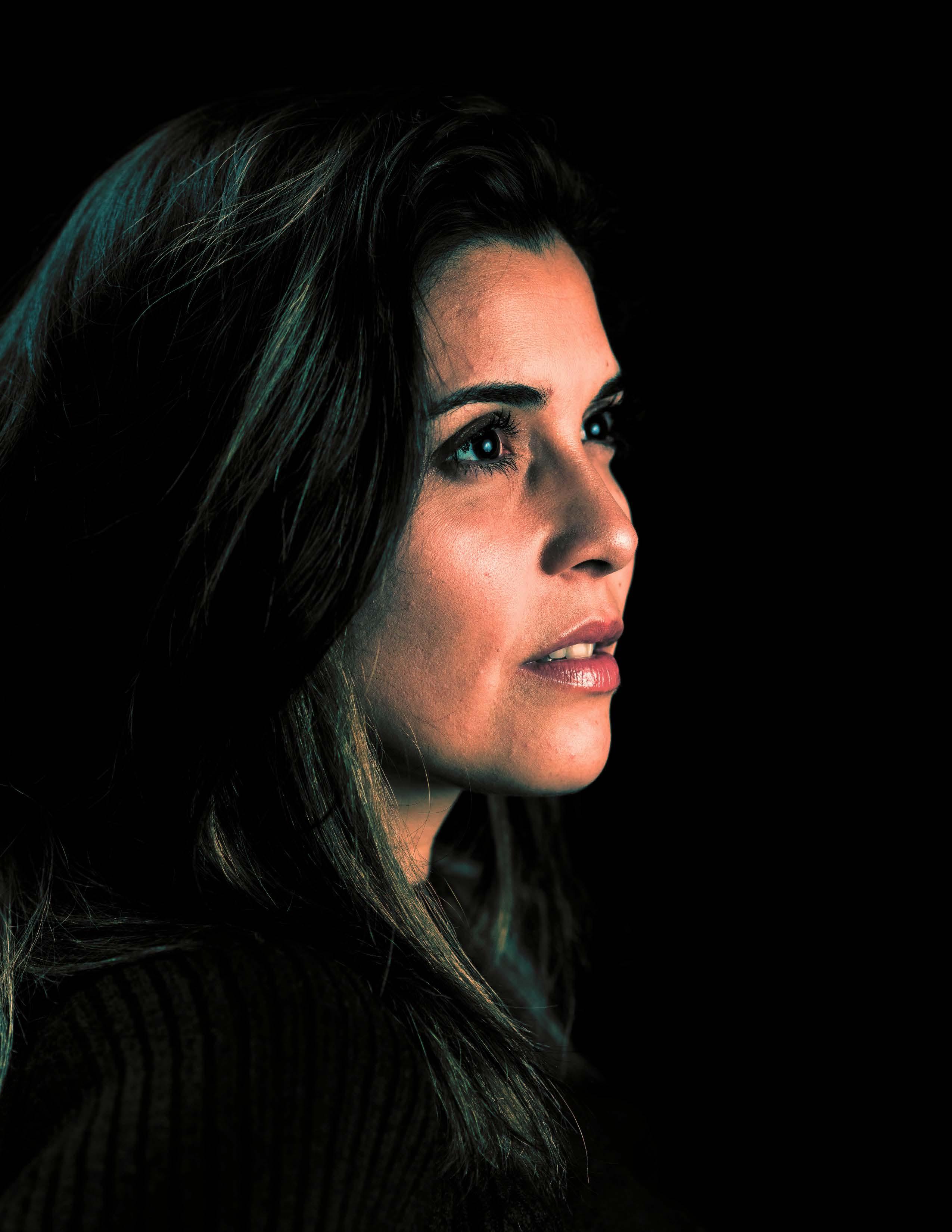



40
www.IamAwareNow.com
I was left with a reflection of a girl I did not recognise.
ELLE SELINE MUSICIAN & MENTAL HEALTH WARRIOR
AWARENOW / THE COMPASS EDITION
Photo Credit: Liam Anderson
EXCLUSIVE INTERVIEW WITH ELLE SELINE GETTING & STAYING A SOBRIETY STORY
Between getting sober and staying sober, which is more difficult? The answer is different for everyone. Everyone has a different story. This is Elle’s. After getting sober, the work of staying sober followed. When it comes to drug and alcohol addiction, it’s a journey, and it’s not always an easy one.

ALLIÉ: Let’s start at the very beginning, as it’s a very good place to start. Let’s begin with the when and why regarding alcohol. When and why did you start drinking?
ELLE: I started drinking alcohol at the age of 13. I believe I began drinking for a number of reasons, to feel accepted, to feel part of the culture but to also block out a lot of sexual trauma and my reality.
ALLIÉ: When it comes to drugs, what did you used and how often?
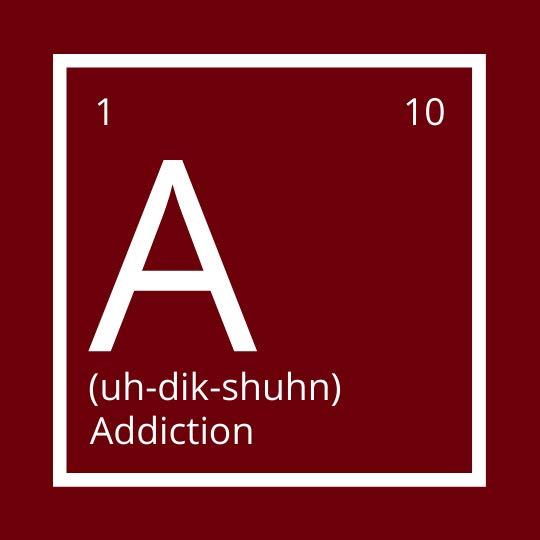
ELLE: I used weed, coke, mcat, MDMA. I used it whenever I could in social situations and when I was alone.
ALLIÉ: Behind every decision we make in life, there’s a story to be told. Elle, please tell me the story behind your decision to get sober.
ELLE: Getting high like I did will only take away the pain for a certain amount of time, like a painkiller. The pain does not actually go away. I was addicted to uppers because they made me feel like someone else, like a better version of myself, one with no trauma or hangups. However, no one tells you that the more you chase the high, the worse the come down is. Well, for me, this was the case for sure. The more I would try and self medicate the worse I would feel and behave. I would lie and steal from shops and friends to afford my next fix to the point where I began dealing drugs to feed my own habit. Like the old fashioned saying goes, what goes up must come down, and come down I did. I was not the same person. I ditched my friends for drugs. They did not know how to help me. I sold items given to me by valued people in my life for drugs that I can never get back. I risked my own freedom and future for drugs. What I was taking, mixed with alcohol, was dangerous. I recall a couple of times after doing mcat mixed with alcohol my whole body convulsing in the night and waking up with heart palpitations. Slowly but surely I felt my health deteriorate and I knew deep down if I continued that this was going to kill me, or I would end up behind bars. The thrill slowly wore off, and I was left with a reflection of a girl I did not recognise. I knew I needed help so I reached out to my family in desperation. My mother who lives overseas knew there was an issue and came to the UK to help me through it. I sought help through my GP too and began a recovery group and program through the NHS. It wasn’t easy, I relapsed more times than I want to admit. Going cold turkey was not an option, so I slowly cut down — taking away the class As and replacing these with energy drinks and weed. It was a long process with ups and downs and uncertainty but I am grateful for the people who stood by me. Being around other people who understood and who I could relate to hugely helped too. If I was given an option to go back and do things differently, I wouldn’t take it because I would have never met the people I did through this part of my journey who are still my friends for life. I believe the will to survive, the help from my mother, and the community are the reasons I am able to write this today, and I am hugely grateful.
41
www.IamAwareNow.com
AWARENOW / THE COMPASS EDITION
“Addiction doesn’t go away, but we learn to manage it and work side by side with it.”
ALLIÉ: Once getting sober, there’s the issue of staying sober. For you, how much of an issue was ‘staying’ sober? Was it easier or harder than you thought it would be?

ELLE: Staying sober was difficult due to the unresolved trauma I was still dealing with. It tried to come bubbling up to the surface and, if I am honest, I used some very unhealthy coping skills. Even after starting to get sober, I continued to bury my demons. Recovery isn't linear. Even now, I get days where I feel like doing class As, or drinking, but I remember the come downs, the huge empty feeling after the party is over, how far I have come, and what I would have done in the past to be where I am now.
ALLIÉ: There’s a saying that goes,“I chose sober because I wanted a better life. I stay sober because I got one.” For those who are considering to get and stay sober, from your personal experience, Elle, what can you say about the value you’ve found in sober living?
ELLE: Sober living has given me my physical health and years to my life that I may not have seen. It has also given me the ability to tackle the issues that made me want to pick up the bottle or pill in the first place. I am in Psychodynamic Psychotherapy, where I am delving into the key traumatic moments in my life, talking about the kind of things that would have made me feel the need to turn to drugs and alcohol in the first place. This isn't easy but I am not scared anymore. I tell myself every morning that I am safe. I am in 2023, and those skills I learned to survive do not serve me anymore. I am still learning new skills. I wasted a lot of my youth on my addiction, but I am enjoying life now and making up for those years I missed out on, believe me! I wholeheartedly blame my addiction on the trauma I endured, but I can't go backwards; I don't have a time machine. What happened to me was not my fault, but it is my responsibility to give myself the best quality of life I can because I deserve that. I am worthy of that. I will always have an addictive personality but as long as I find healthy ways to support myself and my addictive tendencies, I am winning. Addiction doesn't go away but we learn to manage it and work side by side with it.
I am 8 years sober this year, and I am grateful to still be alive. To anyone going through addiction reading this, please know you are worthy of sobriety, you are worthy of help and the life you want to live. Please don’t give up the journey to sobriety. It might be tough, but you are tougher. Please give that inner child the healing it craves through healthier means and remember you are not a failure because you have an addiction. To anyone supporting someone with an addiction, keep your head up. You are doing the best you can, and the people you are supporting love you and are grateful for you. Even if they are unable to show you that right now, they see you and are glad you stuck by them. ∎
42 www.IamAwareNow.com
Follow Elle on Instagram: @elleselineofficial AWARENOW / THE COMPASS EDITION



44 Adventure is still accessible. www.IamAwareNow.com KYLE KRANICH MS WARRIOR
AWARENOW / THE COMPASS EDITION
Photo Courtesy: Kyle Kranich
PERSONAL STORY BY KYLE KRANICH
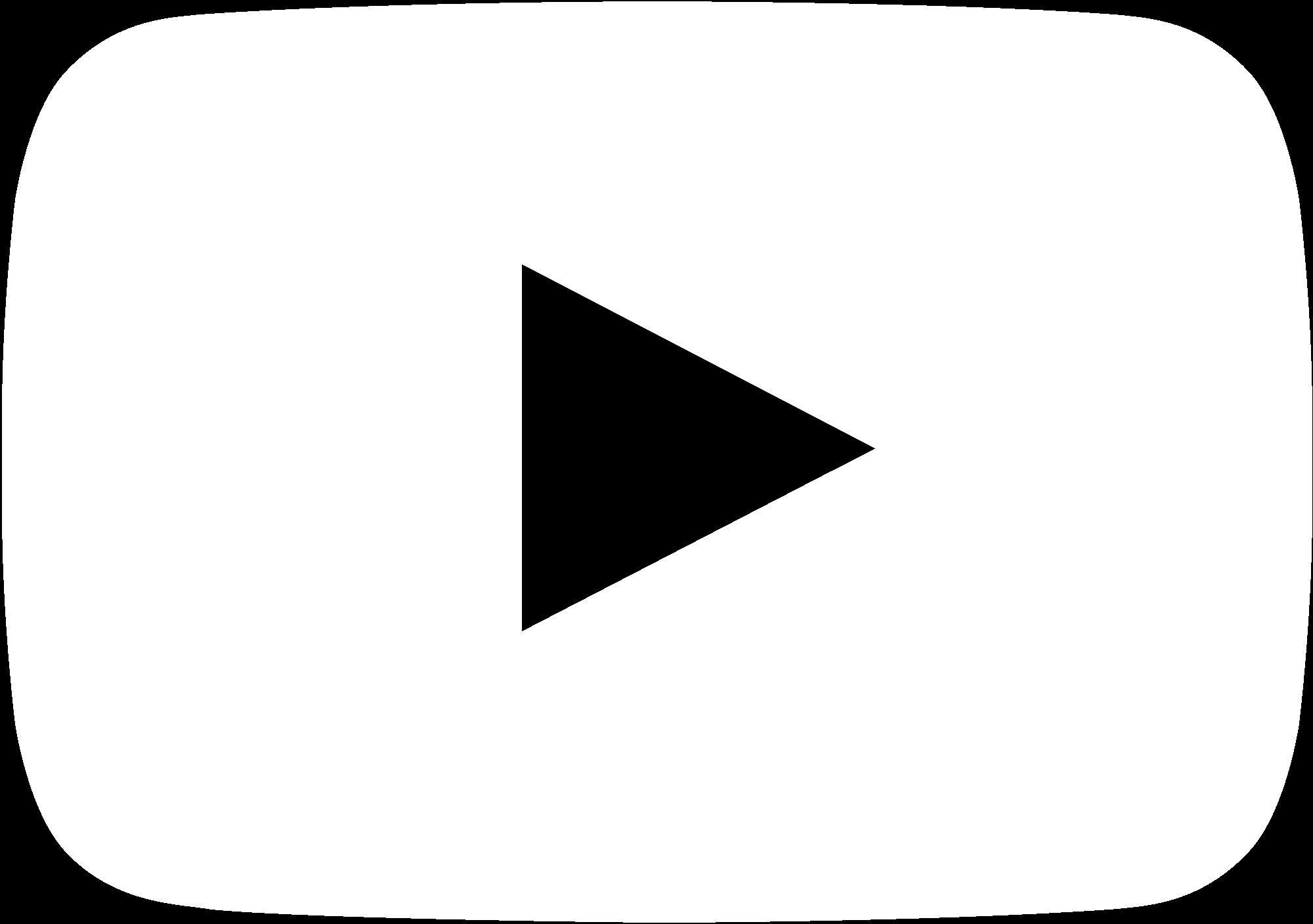


ACCESSIBLE ADVENTURE MASTERING THE SKIES WITH MULTIPLE SCLEROSIS

I first went skydiving on my 18th birthday.
I was able-bodied and unaffected yet by Multiple Sclerosis. After going the first time, I wanted to do it again and again.

Upon being diagnosed with aggressive MS at 21, I did not think they’d let me skydive. My physical state had declined considerably.

Thank goodness for the crew at Piedmont Skydiving (@piedmontskydiving) near Charlotte, NC. They were more than accommodating and made my skydive experience accessible and enjoyable.
I was an adventure-seeker, and I thought chronic health issues had taken a lot of adventure away from me. I want to encourage other adventure-seekers that have been set back by chronic health problems. Adventure is still accessible. ∎
Follow Kyle on Instagram: @gottakeepgoing_
CLICK, TAP OR SCAN TO WATCH NOW
AWARENOW / THE COMPASS EDITION
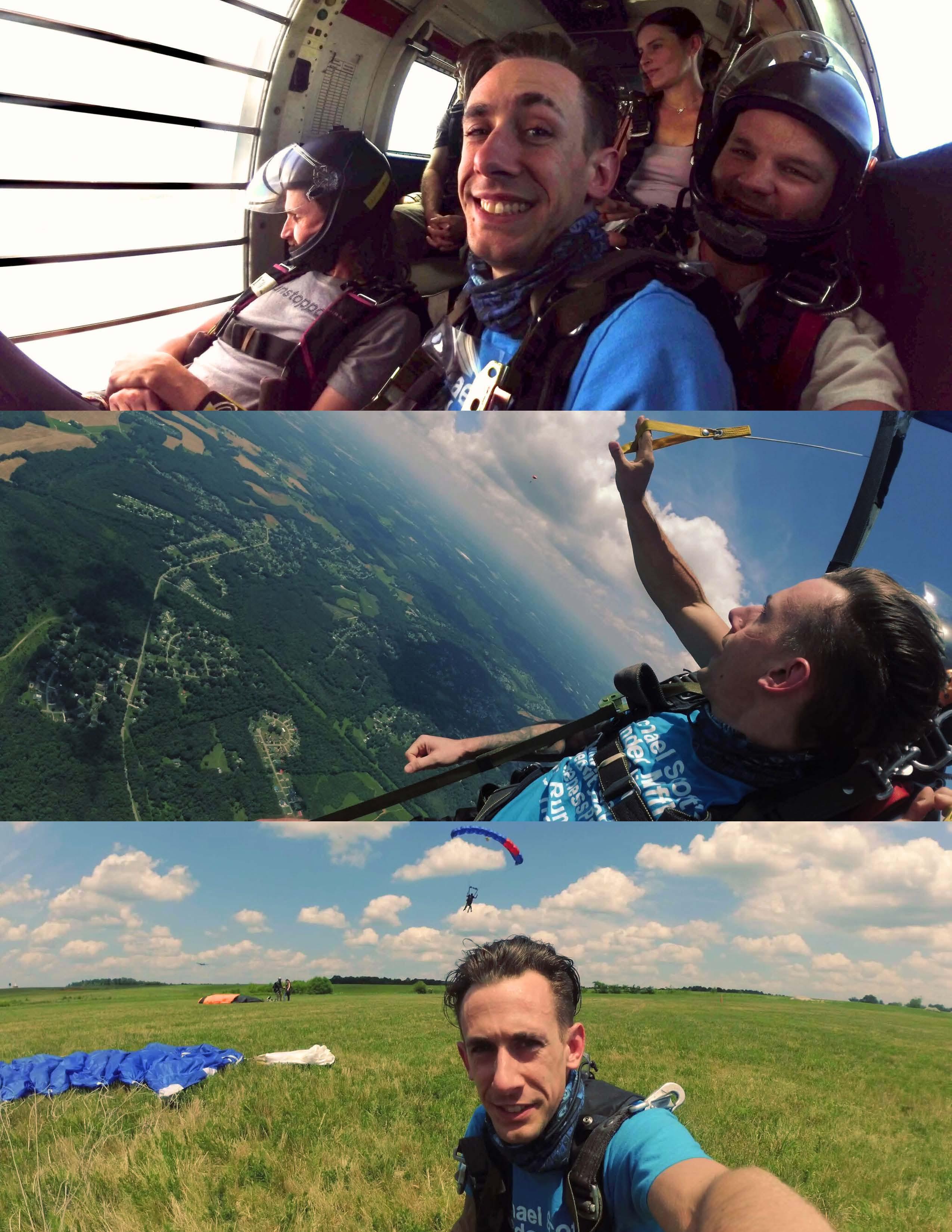
46 www.IamAwareNow.com
AWARENOW / THE COMPASS EDITION
Photo Courtesy: Kyle Kranich





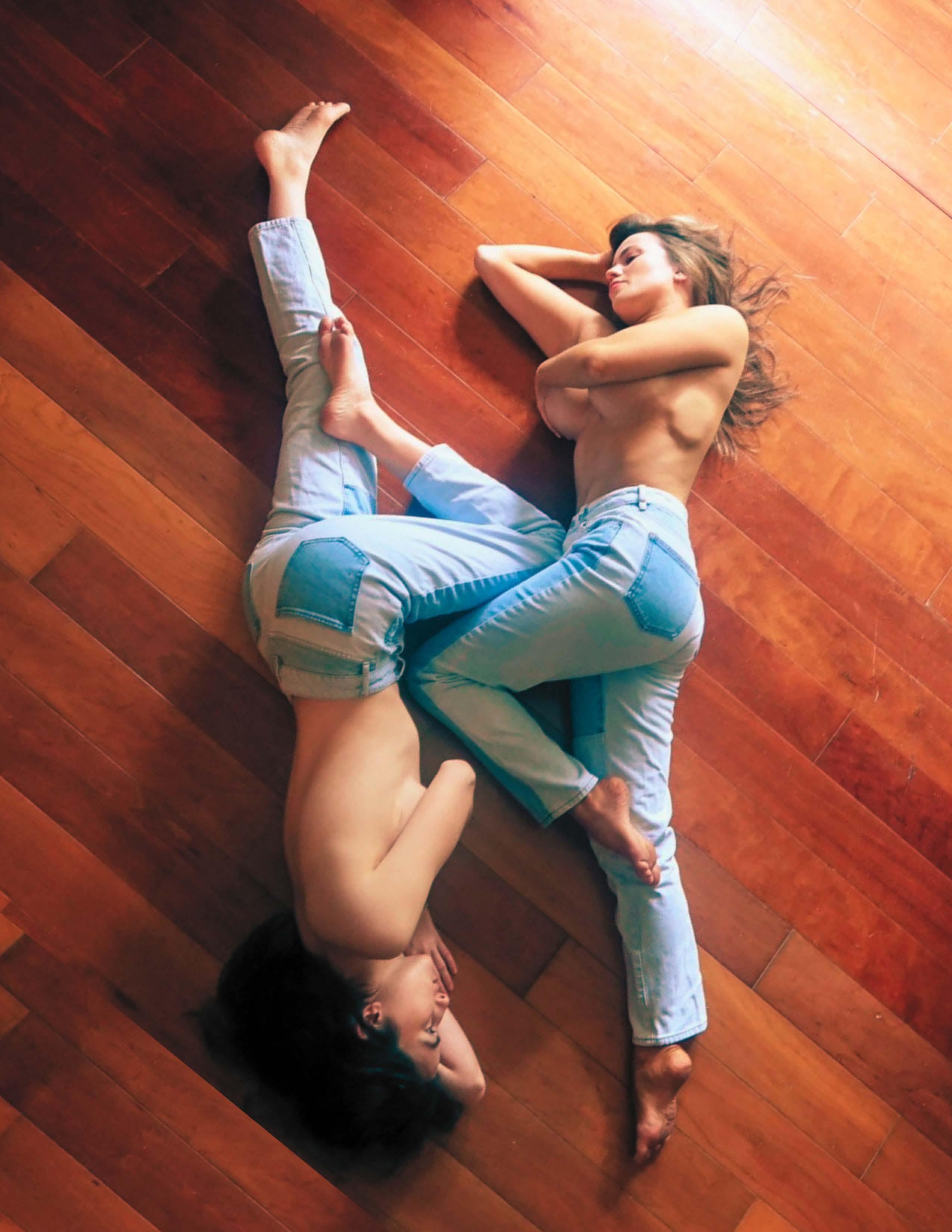

48 www.IamAwareNow.com
AWARENOW / THE COMPASS EDITION
Photo Courtesy: Bethany & Hannah Keime
EXCLUSIVE INTERVIEW WITH BETHANY & HANNAH KEIME

HEARTCHARGED A HEART-TO-HEART ON HCM
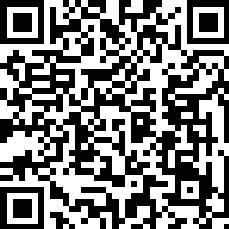
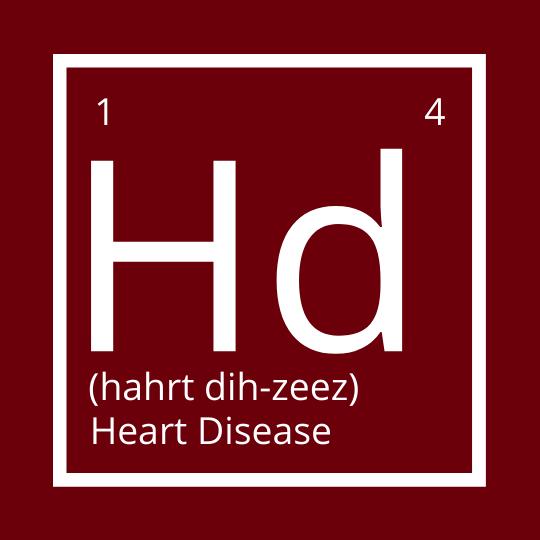
Once upon a time they were average high-school girls, until Bethany and Hannah Keime were diagnosed with hypertrophic cardiomyopathy (HCM), the #1 killer of student athletes. Asymptomatic, HCM most often kills without warning. Both extremely athletic, they were immediately put on medications and made life-style changes. However, their condition got worse and those precautions weren’t enough. Bethany and Hannah had defibrillators implanted, to shock their hearts when needed. Grateful to discover and manage their conditions, they are dedicated to warn the world about undiagnosed heart conditions.
ALLIÉ: Let's begin this way. Bethany, you were and are a dancer earning your BFA in dance performance. Through dance, you communicate with your body. My question for you is, how has your dancing had to change since being diagnosed with HCM?

BETHANY: My dance journey changed as my condition changed. When I first got diagnosed, I was dancing full-time, six days a week, eight hours a day in a pre-professional program. Unfortunately, while being diagnosed, they were like, "Well, we don't know how dancing is affecting your heart, so we're going to go ahead and put a heart halter on you." So I would go with these huge heart halters on my chest with all the wires. They've changed a lot, but I would go

AWARENOW / THE COMPASS EDITION
CLICK, TAP OR SCAN TO WATCH NOW



50 It hurts. I’m not going to lie. www.IamAwareNow.com HANNAH KEIME CO-FOUNDER OF HEARTCHARGED
AWARENOW / THE COMPASS EDITION
Photo Courtesy: Bethany & Hannah Keime
“I explain it like a sledgehammer hitting a home run hit right into your chest.”

BETHANY: (continued) skipped beats so now we're going to up your medication.” Then as my condition worsened and I started having syncope episodes, they were like, "Well, now we're going to put in an implanted de fibrillator, but you still get to dance." So I always got that chance to keep dancing, and I was super grateful for that. As a dancer, because I was really small and petite, I would get thrown and lifted. They were like, "Well, the de fibrillator we have to put in has to match the dancing." So I got a defibrillator that protrudes out my side, but the wire runs up my chest instead of going inside my heart. Then as my condition worsened and I'm in my BFA and I'm finishing it, unfortunately, I was told my heart had worsened and I might need a heart transplant. So the dancing would need to come to a minimum. They said, "Dance at 70%." But how do you tell a dancer to dance at 70%? In no way do you know what that is. So, it definitely changed. I still consider myself a dancer and I dance when I can. In the content that we do for HeartCharged, I think you still see my little dancing abilities where I can. But unfortunately, I cannot be the ballerina I dreamed of because as my condition changed, so did my lifestyle have to change.
ALLIÉ: That is such a good question. How do you tell a dancer to dance at 70%? Is there such a thing? Thank you so much for sharing that journey, Bethany. So, Hannah, shocked, not once, but twice by your de fibrillator while lipsyncing to Celine Dion's ‘All By Myself’ on your high school stage, you went on to finish your performance. Details, please. Will you please replay this scene for us and what you were feeling, and what you were thinking?
HANNAH: Absolutely. I love this question. It's one that I've literally asked myself. There's a little video that I made for film school that we posted online that's an interview with myself where I talk about it. So I was on stage. Celine's song has a special place in my heart now. I was performing this song with my best friend. It was a lip sync. I was coming as a special guest performer because I had just graduated. So I was coming back because she was a senior in high school and I literally drove in that day. We hadn't prepped a lot, so I was a bit nervous. I could feel my heart racing when I got there, like any nerves before going on. I had performed my whole life, so it's like, okay, that's just normal. And then I watched the competition. I was like, "No, I'm good. I'm relaxed now. Whatever happens, happens." So we're on stage, we're doing it, and I remember having a sudden vision issue. We had dim lighting, but I remember my vision going a little bit. But I'm like, "I'm a performer the show must go on. I'm in a competition so I'm going.” All of a sudden, I feel this intense jarring whack to my chest. Then I'm like, "Oh my gosh, I think my friend just hit me." Because being a dancer growing up, sometimes you get hit in the face because people's peripheral version is not great. I was like, "Okay, mental note, I'm just going to step farther away so I don't get hit again.” Then I got hit again. I was like, "Dang. Whatever, let's just keep going, and let's perform." Then we ended the performance, and like any good friend, I confronted her afterward. I was like, "Hey, you hit me really hard during the performance." And she was like, "No, I didn't. I didn't even touch you." I was like, "Mm, I don't know.” Luckily, because it's a high school performance, everybody has their phones out and is videotaping it. So we pulled up a video that somebody had and they're playing it. I remember exactly where it was in front of my school watching it. And then I had the realization, "Oh my gosh, I think my defibrillator just shocked me.” I had been shocked before this, like a year and a half before this event. I went into sudden cardiac rest in my sleep. But because I was in my sleep and deep sleep, I went unconscious when I was shocked so I never felt it. So I had no idea exactly what it felt like. And when people tell you what it feels like, they describe it as a horse kicking you in the chest. I'd never been kicked by a horse in the chest. I would say now, after being shocked, it does feel like it. I explain it like a sledgehammer hitting a home run hit right into your chest. It hurts. I'm not going to lie. It's not a great thing. But the only reason I kept going is because I wasn't thinking, "Oh my gosh, my defibrillator is shocking me right now.” I think in the moment, I definitely would've stopped and been like, "Wait, hold up. What's going on?" But because I thought it was the performance and I had so many other things on my mind, that's how I kept going and kept performing. But then because I'm an unwell person, I texted my doctor like, "Hey, I think I was just shocked by my defibrillator." She was like, "Come in the next day. Let's check that out because that shouldn't have happened.” Everything was fortunate. I guess the biggest loss was that we didn't win that night, even though I kept performing while getting shocked, which no one else was doing in their performance. But it's now water under the bridge.
51 www.IamAwareNow.com
AWARENOW / THE COMPASS EDITION
ALLIÉ: Bethany, in response to your Instagram post titled ‘That's Hot’, where you pair your heart monitor with a very sassy low-cut top, author and patient advocate, Ilana Jacqueline, said, "This is the unconditional advocacy the world needs." And I agree. It doesn't get more unconventional than your flash-the-boobs campaign. For those who did not see you and Hannah in Washington, will you please share how HeartCharged went big for CPR and AED awareness week?
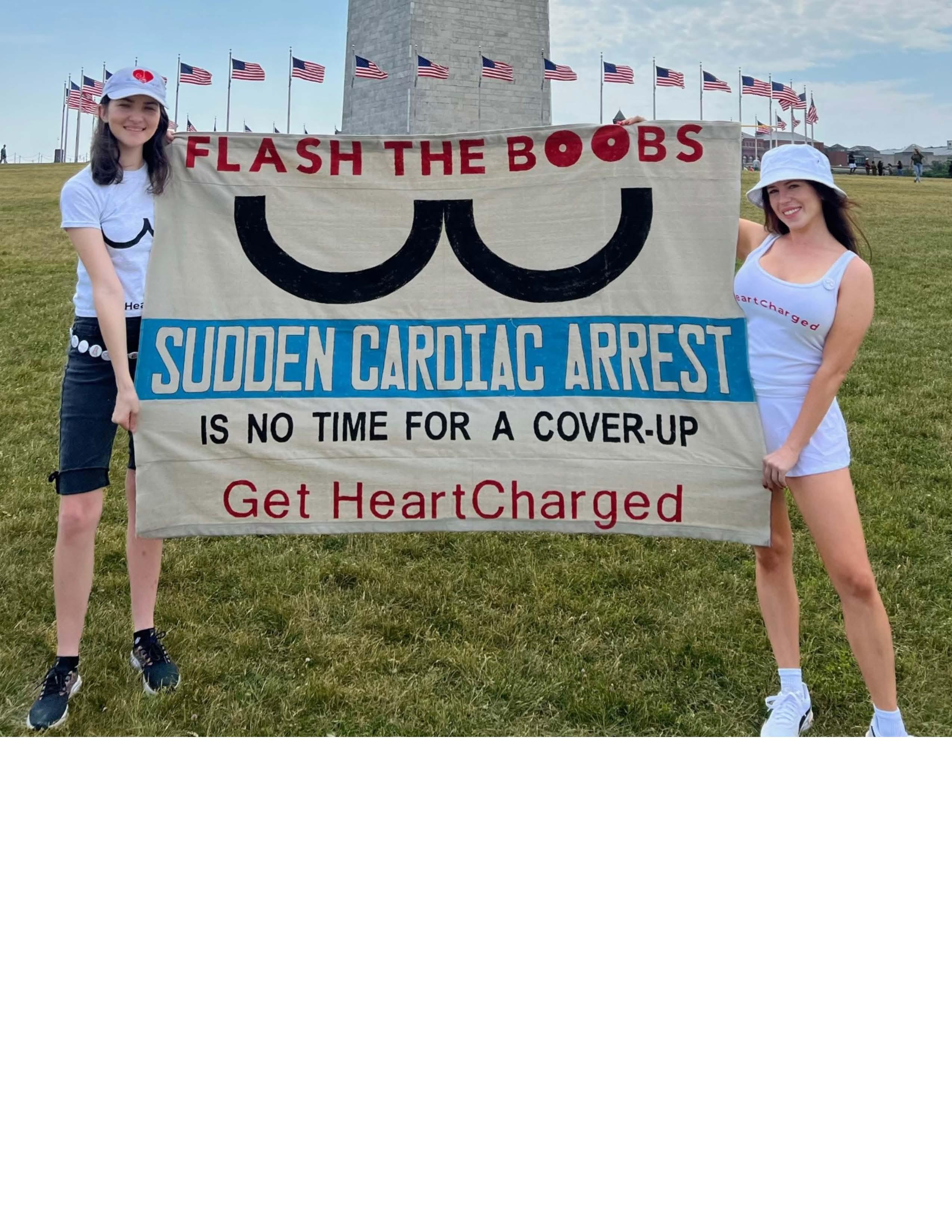
BETHANY: Yeah, of course. And thank you for bringing up my 'That's Hot' post. Definitely touching on that, it's part of our work and we love when we get responses from other heart warriors and other rare patients and chronic disease patients thanking us for sharing our scars, and for sharing our stories. And it's even a beautiful thing when mothers reach out to us and they're like, "Thank you so much because it allows me to feel like my little one can feel normal and this can feel beautiful.” I think that's important, and that's why I always try to show off my bionic bulge. I think it's a beautiful thing that I've come to accept it. But as we do and create our content, we came to the realization that, unfortunately, women are less likely to receive bystander intervention (CPR or a jolt from an AED) when they go into sudden cardiac arrest. Unfortunately, studies have shown it’s because women have breasts. This isn’t okay. We live in a new age. Somebody shouldn't die because they're a woman and because they have boobs. We should flash the boobs to save a life, and that's what we try to touch on. So when we went to DC, we, of course, went with our flash-the-boobs tops -- nude color tops with a little outline of our boobies. Then we had our huge banner that said "Flash the Boobs" on it. We're proud and loud… I think the attention that it received is really awesome and hopefully moving in the right direction because we should not have a less chance of survival just because we have breasts.

52 www.IamAwareNow.com
AWARENOW / THE COMPASS EDITION
ALLIÉ: Right. People are uncomfortable, but get comfortable already. I did see the parody of the Little Mermaid song you did. I watched it a couple of times. It was awesome.
BETHANY: Thank you! We love that one. We show ‘Flash The Boobs’, the Little Mermaid parody, and people get it. It clicks. Now, we go and do free CPR and AED trainings and all of our mannequins have boobs on them. We grew up with all white male mannequins. We can't think they're the only persons that are going to need to be saved. We have to start changing the narrative now.

ALLIÉ: To that point, using music and film projects to create required awareness for needed action, you both use your talents to take on this epidemic of undiagnosed heart conditions. I'd love to hear from both of you, what has been your favorite project thus far with your organization, HeartCharged?


HANNAH: That's a great question. It's a hard question. I went to film school, I'm a filmmaker. You can pretty much see our background with dance and stuff and how that's very much put into our films. But it's almost choosing a child. We put so much love and effort into each video that I can't say. Like children, you have favorites at your moment. Right now, my favorite is Heartspiracy, which is a random teaser that we did. We're going to drop another little one that we shot in DC and only because we haven't explored much what that world is. It is making me and Bethany detectives and agents. We put sudden cardiac arrest as a notorious serial killer because technically it is. We're putting it in the world of true crime and relating it to what's happening. And there's a conspiracy of organizations that say that they're here for people's hearts… But how are they letting these people die? It's almost as if X-Files and Criminal Minds had a cheap baby. We would hope to make it a web series, but because of funding right now… It’s about getting the point across that sudden cardiac arrest can happen to anyone, anywhere, anytime, at any age. It’s then talking about the discrimination that we know in stories we’ve heard of people not being taken seriously. So the creative person in me wants to explore that and do it. Right now, for me, that's one of my favorite projects. I enjoy it because it's a mix of funny, grit, creativity, and being able to play in that world to be able to bring a new message to it.

www.IamAwareNow.com CLICK, TAP OR SCAN TO WATCH NOW
AWARENOW / THE COMPASS EDITION
CO-FOUNDER


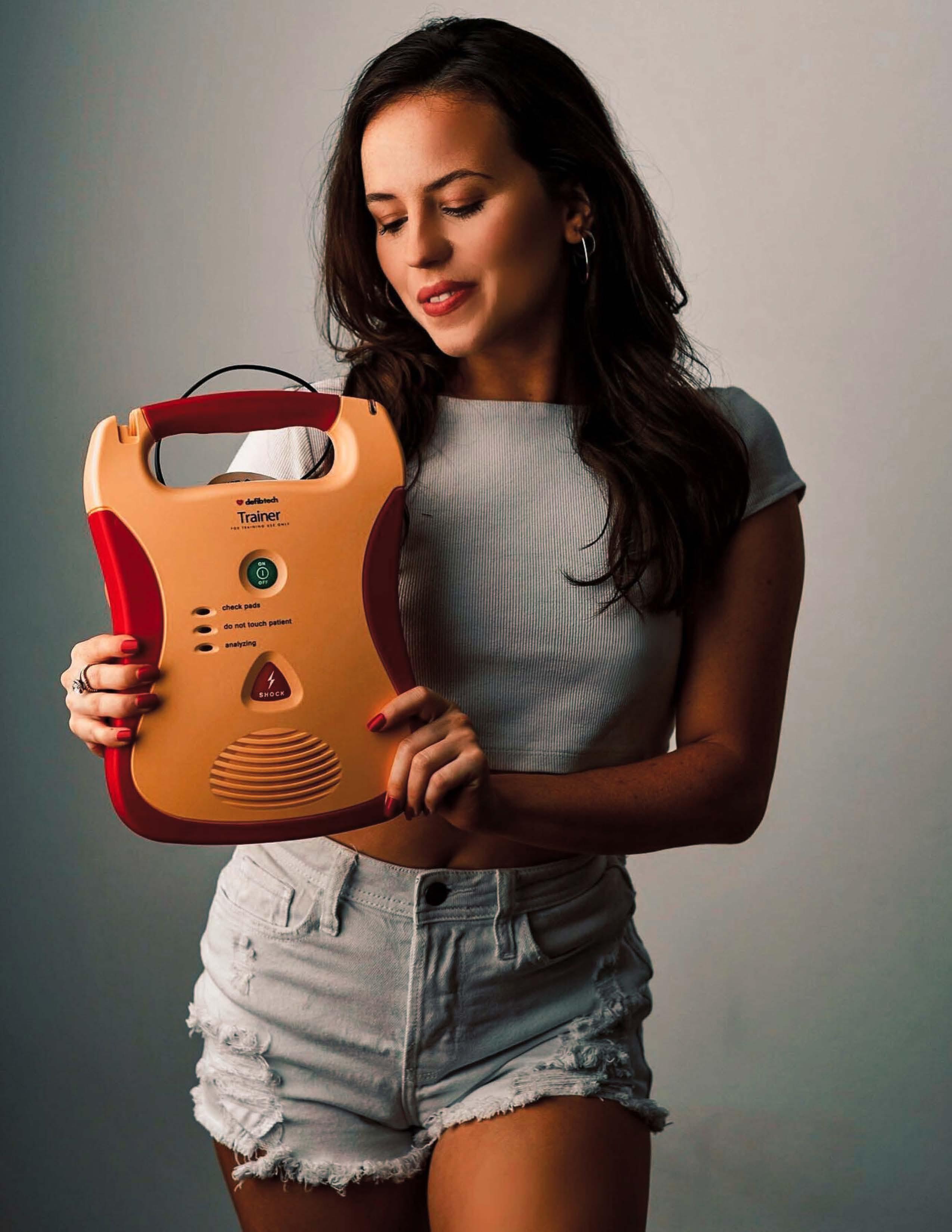
54
www.IamAwareNow.com
KEIME
We live in a society where we need to start normalizing it.
BETHANY
OF
AWARENOW / THE COMPASS EDITION
HEARTCHARGED
HANNAH: (continued) We’ve also been able to accomplish a lot with our AED music video. I am a fan girl of The Wiggles. The original Yellow Wiggle is also a survivor of sudden cardiac arrest. He wrote a song and asked us to make a music video. Like 100,000 people at least have been empowered to use an AED by watching it. As a filmmaker, that's why I wanted to make films -- to see people learn from it, to be able to see that accurate representation and learn from the film. So I feel very proud of what we've been able to do with our eclectic collection of content, being able to make it bite-sizable and entertaining to a general audience.
ALLIÉ: With the Heartspiracy, I think it's so smart the way you embodied it, to say this condition is a serial killer. And to be able to share the story that way and bend that narrative in a creative way. I think it was really smart. How about you, Bethany? What do you think?
BETHANY: Going back to the topic of ‘Flash The Boobs’, mine definitely would be the one where I pretended to be a news anchor and we called it ‘Flashing News’. I'm wearing a blazer jacket, and then I open up my shirt and have nothing underneath. But spoiler alert, there's a huge big black bar over my boobs. So nothing is shown, but I just love the power behind that. It was just crazy to see the response that we got and how many people clicked on it and shared it and viewed it and were like, "Oh my gosh, yes. What were we doing? Why have we not been thinking that?" It was amazing to see. We even had these world-renowned cardiologists come to us and they're like, "This is the best content we've ever seen addressing this topic.” It feels really powerful. I will say, unfortunately though, I did share a collaborative post on personal my page. And, of course, we had very narrow-minded people and people that were colleagues of mine telling me, "You need to take that down. That is almost pornographic in a sense." Which is unfortunate to hear because, again, we live in a society where we need to start normalizing it. This is to save somebody's life. It's not for anything else, but to help people understand that anybody can be affected by sudden cardiac arrest and we need to be ready to help them in any circumstance. That definitely has been my favorite.

ALLIÉ: In preparing for this interview with you two, I learned something. I learned lots of things actually. I learned that one in every 300 youths has an undiagnosed heart condition. I learned that four Florida youths will suffer from sudden cardiac arrest every day; only 9% will survive. I learned that sudden cardiac death kills an estimated 436,000 Americans every year. I learned all of this on your website in a section about the HeartCharged Act. Hannah, can you please tell us about Florida House Bill 263?
HANNAH: First off, Florida House Bill 263, both that bill and I died, but I came back, and hopefully, that bill will come back. The legislative session has passed unfortunately, and we were devastated… The bill didn't pass, but we're going to grab the nearest AED and revive it for this next legislative session. We created and wrote the law ourselves. It was about having cardiac emergency plans that would have K through 12 schools in every school in Florida because that's where we're based from. We would want something like this national, but we're starting in our backyard. K through 12 schools would have at least two cardiac emergency drills so that everyone from students, administration, teachers, and even people in the community would know what to do when someone goes into sudden cardiac arrest. They would know where the AED is, and how to use the AEDs. It also addressed having AEDs close that it's a three-minute retrieval because three minutes is very big in cardiac arrest. When someone goes unconscious, you have about three minutes that you would want that AED placed on them before they start suffering brain damage. So they would have enough AEDs that you could grab three-minute retrievals anywhere you're on the school grounds.
We had a big educational component with it that we would give out information to the parents, the students, and the community about warning signs of cardiac conditions. As you said, one in 300 people. This bill was going to change that 9% survival to 90% because that's the thing. If people know what to do, the survival percentage goes up so much. We very much believe the HeartCharged Act is empowering the next generation of lifesavers to know what to do. And it shouldn't be something that only selected teachers know where the AED is. Everyone should know where it is and learn how to use it. Like CPR, seven out of 10 times, you're doing it on someone you love. It's not like it's always going to happen at school, even though sudden cardiac arrest is the number one killer in schools. A way to remember the 263 is to say that 63 students a day nationwide who are affected by cardiac arrest, ages 18 and younger are affected by this.
55 www.IamAwareNow.com
AWARENOW / THE COMPASS EDITION


56 We have to start changing the narrative now. www.IamAwareNow.com BETHANY KEIME CO-FOUNDER OF HEARTCHARGED
AWARENOW / THE COMPASS EDITION
Photo Courtesy: Bethany & Hannah Keime
HANNAH: (continued) I survived sudden cardiac arrest at the age of 17. It's not something that's wild that you never heard of. It's just that we don't have enough press coverage of it. That's why it's not like a school shooting where it's all condensed in that school. It's one in Idaho, one here in Wisconsin, and scattered around. So people don't think of the weight as much. But if you'd heard two classrooms full of students died today, you would be shocked and you'd be like, "Oh my gosh, we need to do something.” That's how we felt since the moment we were diagnosed, seeing that people our age are dying from a preventable death. It could help them with a heart screening by detecting it. But this bill and this act was really to be in place for the AED is what's going to bring somebody back because the cardiac arrest is an electrical problem in the heart. It's only going to take an AED. It's empowering them to know what to do in case of an emergency.
Sudden cardiac arrest it is the number one killer of student-athletes, but I went into cardiac arrest not doing an athletic sport. It's more than just the athletes. Why wouldn't we save all the children when we get the chance? Why wouldn't everybody know this information? Hence why do we do free CPR and AED trainings. We believe that everybody should have the right to knowledge when it's lifesaving. There shouldn't be a price because the minute you put a price on it, the minute you're doubting whether or not you want to spend that money to learn that skill because we also help push initiatives to have ninth and 11th graders in high school learn CPR and AED to make it a requirement so that people would do it and hold to it. That's why we advocate for this legislative stuff because when it's law and it's enforced, it makes it easier for people to know that than just us sharing on social media or shouting to get everybody's attention of using both social media and the legislative process to cover everyone, as many people as we can to get this information out there. Because you would want to know if you could save a life.
Spoiler alert, an AED can be used by literally anyone. We train eight-year-olds on it. It's not anything to be scared or afraid of. We're going to bring back the House Bill and the Senate bill. Unfortunately, our sponsors were not as committed as we were. They lied to us. They're politicians. Are we shocked? We're just more disappointed. And then they wouldn't let us find new sponsors. They held onto it and wouldn't even present it to the first committee, which is something that has to be done. You have to have the same bill in the Senate and the House. It has to go to the committees that the bill is under and then passed to those committees and then voted on. Like the children, they let it die. We want to not thank Senator Bryan Avila for not even speaking with us or advocating or pushing for our bill. But as you see, we get back up and we're going to keep fighting for it and pushing for it because we know how important it is. No matter if we're not taken that seriously yet, we're going to make it happen.
ALLIÉ: It sounds like, in addition to being a filmmaker, you're just going to have to be a politician yourself and just go and get it done.

HANNAH: I gave up on politics though. I did want to be the president and then I said, "No, I enjoy making films better." I was like, I can't with the whole culture of politics. If need be, we'll just vote for Bethany.
ALLIÉ: With the work that you're doing, again, you don't know what you don't know until you know. I had no idea until I dove in and took a look and saw and listened to what you had to share. So for those like myself who are not aware about the severity and the prevalence of undiagnosed heart conditions, I'm wondering now that we're aware, what action do we take? A question for you both is if there's just one thing someone could do when it comes to this matter of the heart, where should we be starting?
57 www.IamAwareNow.com
“We believe that everybody should have the right to knowledge when it’s lifesaving.”
AWARENOW / THE COMPASS EDITION
Exclusive Interview with Bethany & Hannah Keime https://awarenow.us/podcast/heartcharged



HANNAH: It's a hard question because even in our journey, having a heart condition, for some, it's a one-surgery saves. For us, it's about lifestyle changes. It's something that you grow to learn to live with. For me, I would say get your heart screened. Check on yourself. It’s like when you're on a plane. Put that oxygen mask on yourself. Yes, we would love you to support and follow us at HeartCharged on Instagram. And if you know people who are affected by heart conditions, we made our Instagram as a patient-to-patient community. We're here to support. But go check on you first, make sure you're okay, and then come join our community and help us bring awareness.
Also, if you feel anything is off, go follow up with a specialist. We'll tell you that 60% of the time, pediatricians dismiss cardiac conditions in young kids. Especially if you're young, if something's off, it's hard, but stand up for yourself. Make sure you're taken seriously and looked after. Again, I would say get your own heart checked first and then come join us so we know that you're okay as well.


ALLIÉ: That's a great suggestion to start with your own heart. How about you, Bethany? Anything to add to that?
BETHANY: Well, Hannah already touched on it. Definitely, check your own heart, and then, of course, join us at HeartCharged. And if you ever want free CPR and AED classes, we teach them, but just to know and to be prepared... I think it's so important to make yourself aware of the warning signs of a cardiac condition: fainting, dizziness, rapid heart rate, abnormal heart rate, not being able to keep up with your peers, and family history. Those are important things to keep an eye out so that you're watching out for other people around you too because you never know. You could be that lifesaver. The other thing I was going to say is if you do end up getting diagnosed, don't forget that your life doesn't end with a diagnosis. ∎
58 www.IamAwareNow.com AwareNow Podcast HEARTCHARGED
TAP/SCAN TO LISTEN
Bethany & Hannah Keime on Instagram: @heartcharged
Follow
“Don’t forget that your life doesn’t end with a diagnosis.”
AWARENOW / THE COMPASS EDITION



60
www.IamAwareNow.com GABY MONTIEL SINGER & SONGWRITER AWARENOW / THE COMPASS EDITION
The courage to chase my passion in music did not come without its challenges.
PERSONAL STORY BY GABY MONTIEL



COURAGE REQUIRED TO KNOW YOUR HEART

Courage is not something that just appears when no one is looking. It is fought for and nurtured. It’s held onto and loved.
The courage to chase my passion in music did not come without its challenges.

I fought for it. I held on tight.
That is what it takes to know your heart. ∎
Follow Gaby on Instagram: @gabymontielmusic
TO WATCH NOW
CLICK, TAP OR SCAN
AWARENOW / THE COMPASS EDITION

62 www.IamAwareNow.com AWARENOW / THE COMPASS EDITION
HEAD HELD HIGH AWARENOW MUSIC LAUNCHES WITH CALY BEVIER


On August 18, AwareNow Music will launch with its inaugural event starring America’s Got Talent All-Star, Caly Bevier, in an exclusive one night performance at the historic Lebowsky Theatre in Owosso, MI.

After overcoming stage 3 ovarian cancer at the age of 16, Caly Bevier, went on to pursue her dreams as a singer and songwriter performing on America’s Got Talent, obtaining Simon Cowell’s very first gold buzzer. Moving from the midwest to LA to build her career as an recording artist, Caly was invited back on the AGT stage as an All-Star where she performed her original song, ‘Head Held High’, that left millions of viewers in awe.

From producing original songs in the studio to performing on stages and in stadiums across the country, Caly will now fly from LA to Owosso, MI, for a special one night performance to unveil AwareNow Music, a platform that uses artistry to raise awareness.
“While we serve a global audience with AwareNow Magazine and Podcast, we are proud to serve our local community with this event that is only just the beginning,” says Jack McGuire, Co-Founder of AwareNow Media. A series of performances is currently being planned, featuring both national and local talent. Each event will support a different cause and be paired with a community conversation.

www.IamAwareNow.com CLICK, TAP OR SCAN TO WATCH NOW FEATURE STORY WITH AWARENOW MUSIC & CALY BEVIER
AWARENOW / THE COMPASS EDITION
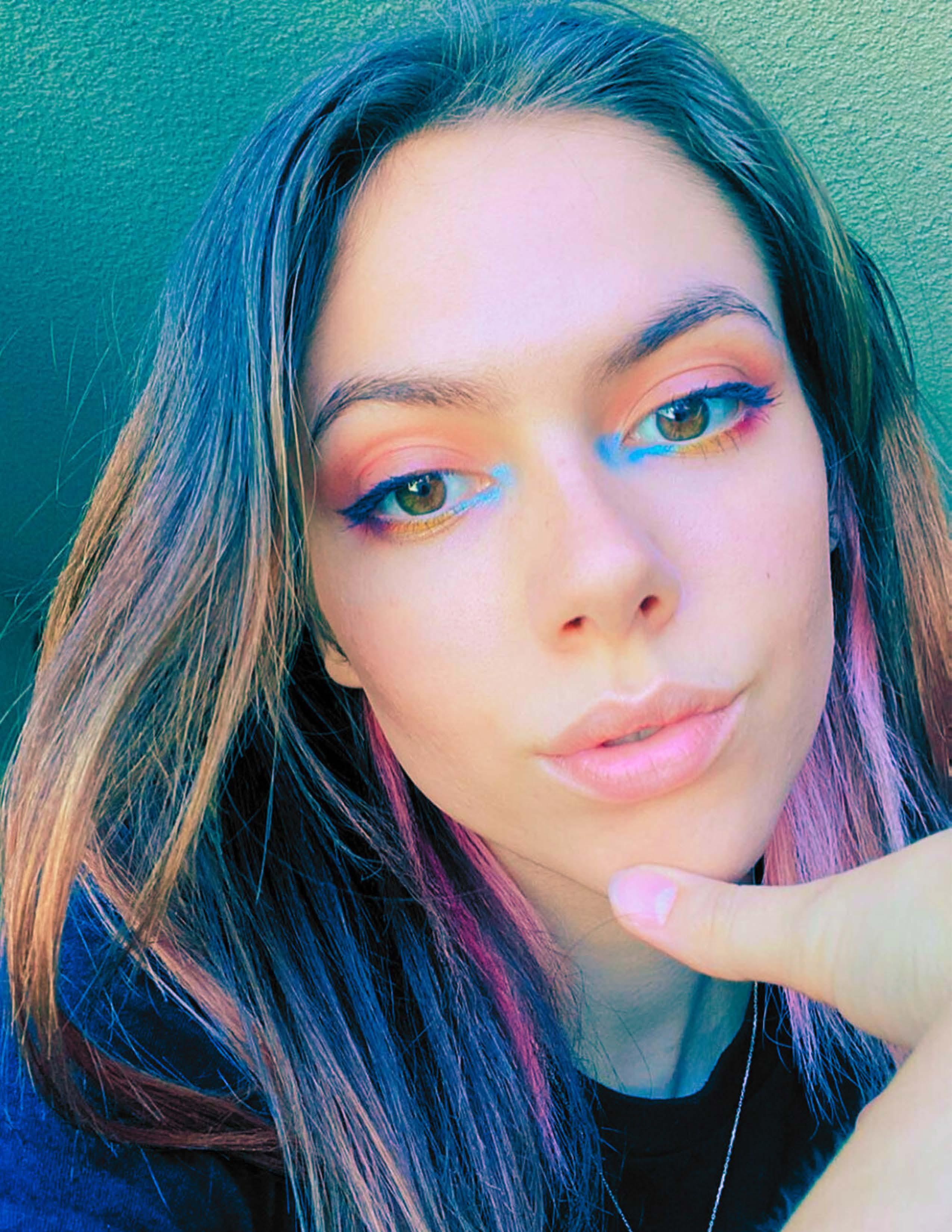

64 www.IamAwareNow.com
AWARENOW / THE COMPASS EDITION
We all need an escape and mine is music.
CALY BEVIER SINGER &
SONGWRITER
“It’s one of the most potent forms of storytelling that I know.”
In this live acoustic concert and storytelling event, entitled ‘Head Held High’, Caly’s original songs and personal stories will intimately address overcoming adversity and embracing our diversity. As a member of the LGBTQ community and a cancer survivor, Caly’s lived experiences will be spoken and sung, empowering us all to hold our heads high.
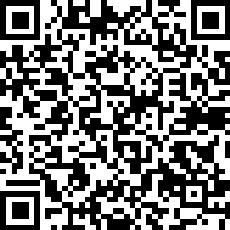


When asked why music was so important to her, Caly responded, “We all need an escape and mine is music. When the world seems like it’s spinning out of control, I pick up my pen and create my own peace. Now, I’m blessed to be able to share it.”
This inaugural AwareNow Music event will be filmed and produced as part of the ‘Head Held High’ documentary that will be submitted to film festivals in 2024, in alignment with AwareNow Media’s mission to raise awareness for causes one story at a time.
Supported by the community, for the community, ‘Head Held High’ is made possible with its Of ficial Partner, Round Midnight Records, and its Official Sponsors including Memorial Healthcare, Boxed Water, Rivals Taphouse and Artists For Trauma. Dakota Woodworth, Founder of Round Midnight Records shared, “Music is important to the community because it is ingrained… It’s part of every community, and it’s one of the most potent forms of storytelling that I know. I’m super proud and super stoked to be working with AwareNow Music to bring Caly Bevier to Owosso.”

www.IamAwareNow.com CLICK, TAP OR SCAN TO WATCH NOW
AWARENOW / THE COMPASS EDITION


66 www.IamAwareNow.com
When the world seems like it’s spinning out of control, I pick up my pen and create my own peace.
AWARENOW / THE COMPASS EDITION
CALY BEVIER SINGER & SONGWRITER
Proceeds from the event and film will go to support the Shiawassee YMCA, Owosso Pride and Lansing Pride. Performed and filmed at the Lebowsky Theatre in Owosso, MI, this is a community project that will support the local community on a number of levels.

“Music is a way for youth to connect to themselves and other people. I think it’s important that they learn the power that music can have in their life… I think it’s important that we expose our youth to a variety of different types of music and help them learn that its part of the social fabric of our country. If as a community we can have those shared musical moments, it’s something we can look on together and it becomes almost a part of a shared history here,” said Laura Archer, Executive Director of the Shiawassee YMCA. “We’re really excited to have AwareNow Music in our community. We’re looking forward to seeing Caly on August 18th at the Lebowsky. It’s going to be a great kick off to hopefully a series of really fun events that will bring our community together.”

67 www.IamAwareNow.com
“Music is a way for youth to connect to themselves and other people. I think it’s important that they learn the power that music can have in their life…”
AWARENOW / THE COMPASS EDITION
Photo Courtesy: Lebowsky Performing Arts Center


68 www.IamAwareNow.com AWARENOW / THE COMPASS EDITION
“She’s been on this journey with us as we work to raise awareness for causes one story… and one song at a time.”
In this performance, Caly gets raw and real performing original songs and sharing personal stories. She will be joined on stage by talented multi-instrumentalist Shawn Corchado on guitar. Poetic pauses will accent the evening with performance poetry presented by Allié McGuire.
“We’re honored to launch AwareNow Music with our very own Caly Bevier who has been with AwareNow since the beginning. She’s been on this journey with us as we work to raise awareness for causes one story… and one song at a time,” said Co-Founder of AwareNow Media, Allié McGuire. “As we add more texture to our storytelling tapestry, we are weaving in more ways to strengthen our human connection.” ∎

While seating is limited, there are still tickets available. To attend ‘Head Held High’ on August 18th at the Lebowsky Theatre in Owosso, MI. The show begins at 8:30pm, followed by an after party there at the Lebwosky Studio sponsored by Rivals Taphouse where a champagne toast will be provided. Get tickets here: www.awarenessties.us/head-held-high
To support this community event as a sponsor find details here: www.awarenessties.us/head-held-high-sponsorship

69 www.IamAwareNow.com
AWARENOW / THE COMPASS EDITION


70 www.IamAwareNow.com AWARENOW / THE COMPASS EDITION
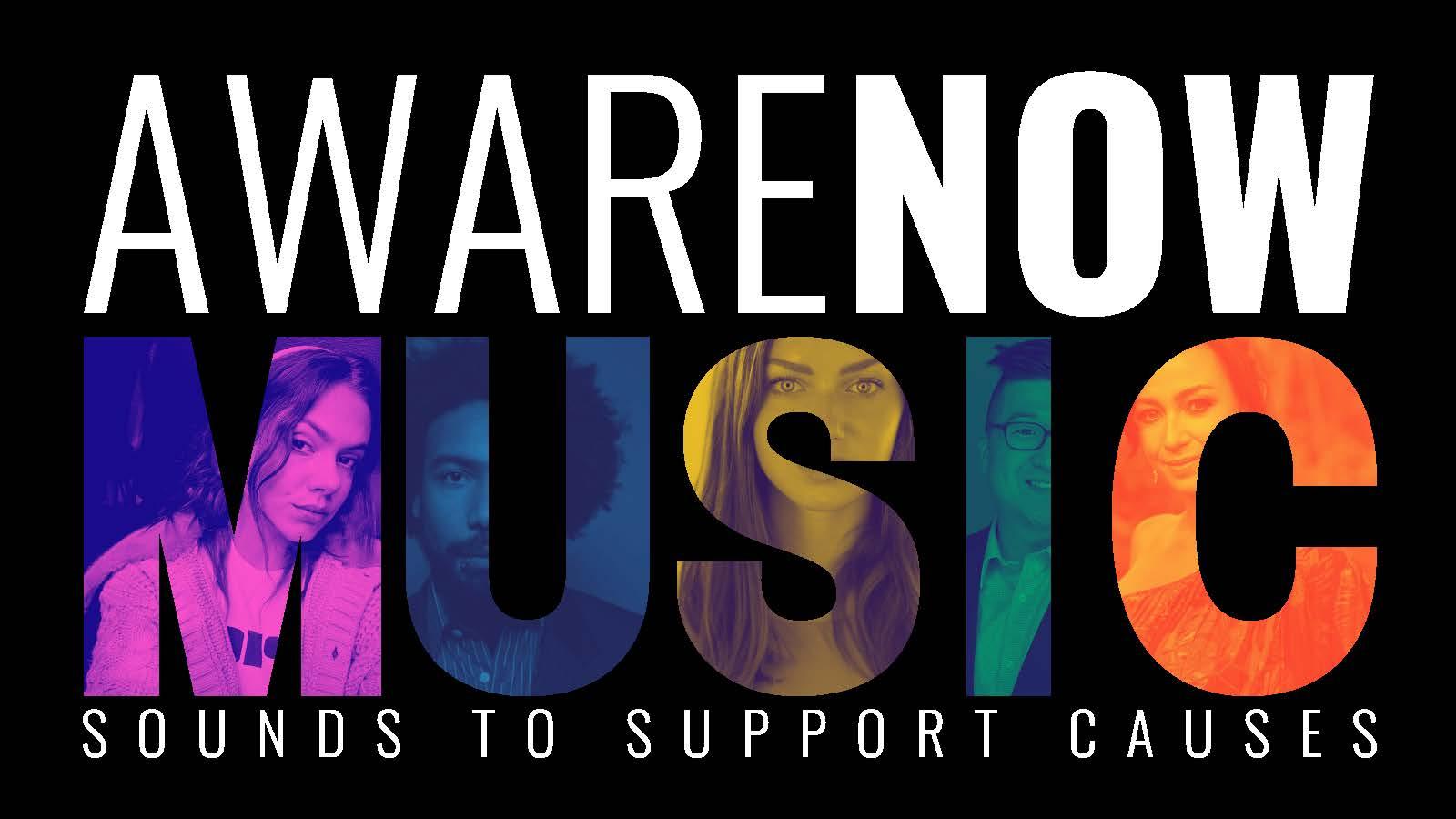
71 www.IamAwareNow.com AwareNow Media is proud to present AwareNow Music where sounds support causes. Through a series of concerts and storytelling events, artistry is used to raise awareness for causes and spark community conversations. Visit www.awarenowmusic.com to learn more. AWARENOW / THE COMPASS EDITION
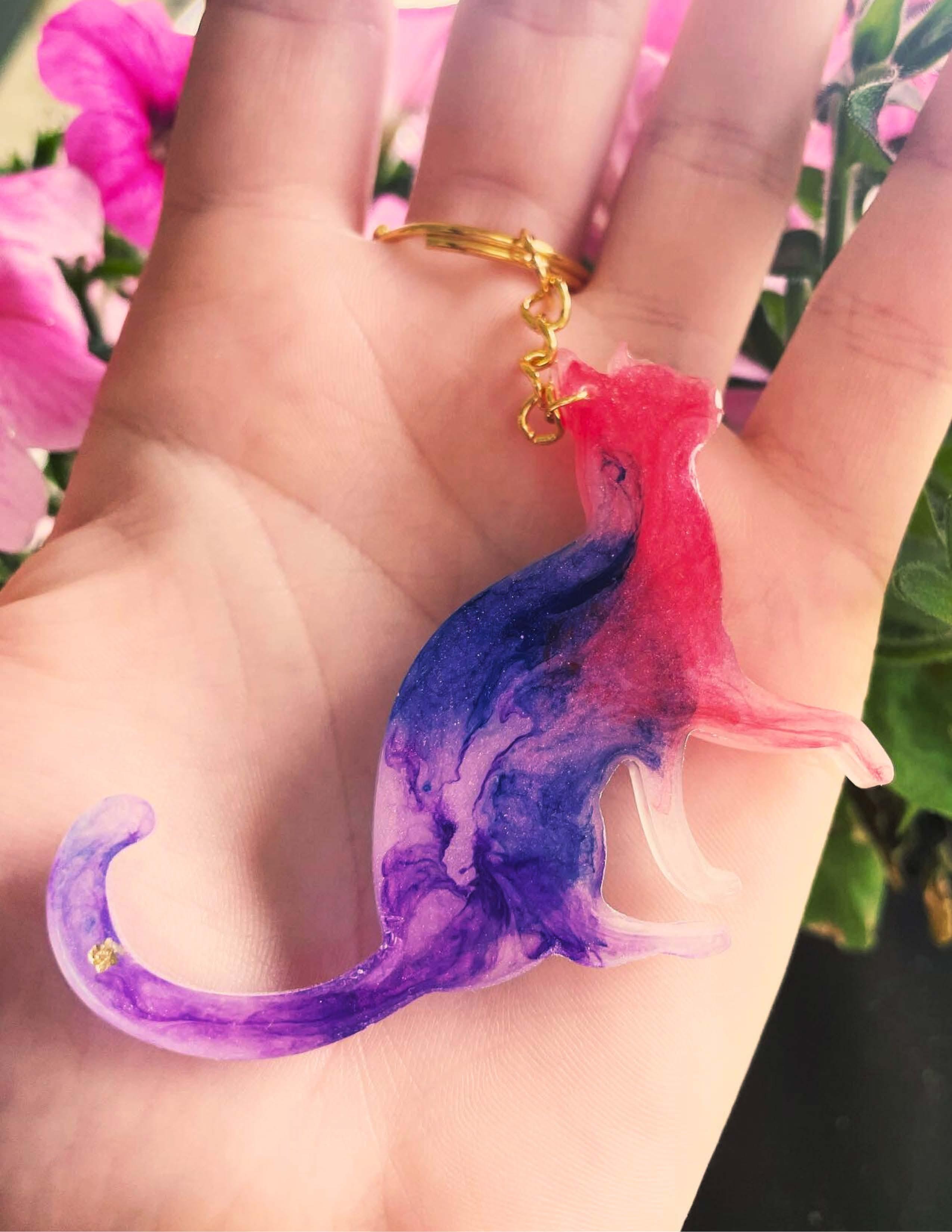


72 www.IamAwareNow.com
ABBIGAIL WADE ARTIST & FELLOW TRAVELLER
AWARENOW / THE COMPASS EDITION
Sharing my story isn’t just for me.
EVERY PIECE TELLS A STORY A STORY OF JEWELRY AND HEALING
Abbigail Wade lives with an invisible disability, dystonia 11. Days after undergoing brain surgery she shared her story in ‘The Brave Edition’ of AwareNow. In this second interview with Abbigail, the founder of Artists For Trauma, Laura Sharpe, goes deeper with a conversation about healing with artistry.



LAURA: Allow me to share with AwareNow readers what a gift and an honor it is to be back with you in this second interview for 'The Compass Edition'. This edition is focused on being aligned with intention. How appropriate and what a blessing it is to have this honor to interview you. We had that first interview with you regarding the brain surgery you recently had, which was phase one. Now you're in recovery. Share with us a little bit about how you are staying on course with pure intention, because it isn't always easy. We know that life shows up. It doesn't pause. It doesn't stop regardless of what's going on with us personally. So, how are you staying on course?
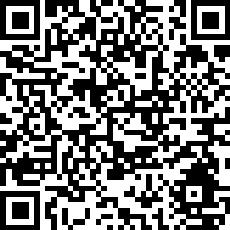

ABBIGAIL: Well, let me tell you, life has definitely tested me lately. Following my brain surgery, I had an after surgery complication, where I got two pulmonary embolisms in my lungs, and I had to be in the ICU for that for a few days. So

CLICK, TAP OR SCAN TO WATCH NOW
‘FELLOW TRAVELERS’ EXCLUSIVE COLUMN BY LAURA SHARPE
AWARENOW / THE COMPASS EDITION



74 www.IamAwareNow.com
ABBIGAIL WADE ARTIST & FELLOW TRAVELLER
AWARENOW / THE COMPASS EDITION
I started making jewelry right before I got my brain surgery…
ABBIGAIL: (continued) has been hard because I've had certain family matters that have been going on and everything. But I've just kind of drowned myself in my jewelry, making and figuring out stuff for my business and where I want to go with that.
LAURA: It's been said that every piece of jewelry tells a story. Of all the pieces that you own and create, some very beautiful ones recently that you've shared, which is your favorite? And what is the story behind it?
ABBIGAIL: Well, I mean, of course I like all my pieces. But I think lately I have moved on to those crystal earrings. And personally, those have been my favorite because it is so handmade. It takes a certain level of 'handmade'. You have to put every crystal on the necklace or the earring base and everything. I just feel like I put so much love into those pieces that it just kind of embodies me.
LAURA: I love that. There's such a connection between the tangible. Like you were saying, you have to put each piece of that crystal, or that bead, or that material on that piece of jewelry, and how intimate that is. That's really a powerful share and one where I relate with you as well. Your pieces are so beautiful. When you sent me the first photo, I said, "That's gorgeous, Abbigail," and absolutely, my soul took flight. I can only imagine what it was like for you to create it. I'm very excited that you're sharing this with the people who love and support you, and with new people as well. So, not only do you wear jewelry, you craft it. When did you start making jewelry? And what do you love most about making it?
ABBIGAIL: Well, I started making jewelry right before I got my brain surgery as a little way of forgetting about everything that's been going on and trying to raise money for dystonia and my cause... It's been stressful. Brain surgery is stressful and making jewelry is a little outlet for me to kind of forget about it. I don't really do it to make money. I don't do it for the business part of it. I just do it because I like to do it.
LAURA: Well, that is powerfully said and that's truly the healing through art component. Thank you for allowing us to share. I totally respect that it's not about the money. It's about the interaction with the healing through art medium. And it's beautiful. What you've been creating is beautiful. And I'm glad that you're finding it healing and that it has been helping you to raise funds for the dystonia, this rare condition that you are in treatment for. For some of the folks who have not seen the first interview, just share again briefly what the phase one of your brain surgery was for dystonia 11.
ABBIGAIL: I scheduled the brain surgery, and I had to cut my hair off.They did two incisions on the top of my head and drilled in my skull, where they put two wires in there. I don't exactly... I'm not a neurologist. I know they put them in there somewhere, and I know it took more than just placing them. It's a wire that they stapled to my skull, and it will continue to stay stapled there until the second part of my surgery, where they connect it to a battery.
LAURA: Well, thank you. As a layman, I think that you described that very well. I want to share with you that your first interview has been shared on the AwareNow Health Streams, digital stories viewable by patients of medical providers across the country. I'm going to share with you first and right now, Abbigail, we have so much gratitude for the courage that it has taken for you to walk through your long-term process and take action, to make this decision yourself to have this surgery, and then the courage to share this with us, with Artists for Trauma and the larger audience at AwareNow. It has been shared with other medical communities and fellow travelers, and people truly are resonating with your story. I just wanted to say thank you. By you sharing your story, people are finding relatability, inspiration and healing in it. I know for myself, and I would imagine for you, that this is gives a sense of gratitude to be able to pay it forward.

75 www.IamAwareNow.com
AWARENOW / THE COMPASS EDITION



76
www.IamAwareNow.com ABBIGAIL WADE ARTIST & FELLOW TRAVELLER AWARENOW / THE COMPASS EDITION
Make beautiful pieces that embody you.
ABBIGAIL: Sharing my story isn't just for me. It's for everybody else who goes through what I have to go through. People don't understand what I go through sometimes. Most times when I tell people about my genetic condition, they don't even know what it is. And I would just like for more people to know.
LAURA: It has always been for Artists For Trauma about empowering others through artistic expression, human connection, and collaboration. And for those who feel unconnected and unsure about where they are in their own health, what might you suggest?
ABBIGAIL: If anybody is struggling with the same genetic condition or similar, I would urge them to reach out to me. I would love to meet people that are struggling with the same thing I'm going through and give them inspiration. But if I'm not able to talk to them personally, I would recommend finding your little piece of art, no matter what it is, and make beautiful pieces that embody you.
LAURA: Well, that is a great share. Help remind everyone how they can connect with you. You are on Instagram.
ABBIGAIL: My personal Instagram is @abbigail_.wade, and then my business Instagram is @DystoniaWarrior.
LAURA: I also wanted to just applaud and share with the audience that you are growing your business on Etsy.
ABBIGAIL: Yeah. I mean, I don't have a lot of orders right now, but I don't feel that it's really about the orders.
LAURA: I thank you for joining us again in AwareNow for 'The Compass Edition'. Thank you for sharing with us how you're staying on course with pure intention. It isn't always easy, but you're doing it, and you're thriving. You're truly a gift to the world, Abbigail. ∎
Follow Abbigail on Instagram: @abbigail_.wade & @dystonia_warrior
View her work on Etsy: www.etsy.com/shop/DystoniaWarrior
LAURA SHARPE
Artists For Trauma Founder & Chief Executive Officer, Trauma Survivor & Artist

www.awarenessties.us/laura-sharpe
LAURA SHARPE contributes to AwareNow with her exclusive column, ‘Fellow Travelers’. Trauma, tragedy and miracle are all part of the life process. They do not discriminate nor are they fairly distributed. Simultaneously they occur across all diverse cultures, countries, colors, ethnicities, genders, religious beliefs, and dimensions of time and thought on planet Earth. In this process of life, birth and re-birth; decay and destruction are integral to creating new life. As fellow travelers, we are mindful, compassionate, and intentional through our attitude and actions to one another. We share our authentic personal story of survival or service to offer relatability, respect and hope to others who are navigating intense physical, mental and emotional life impact. Uncomfortably or joyfully, we share the range of human emotions related to our personal trauma or miracle. In the end or the new beginning, we learn we are all fellow travelers.

77
www.IamAwareNow.com
AWARENOW / THE COMPASS EDITION
DARREN MARGOLIAS EXECUTIVE DIRECTOR AT BEAST PHILANTHROPY


78
www.IamAwareNow.com
We thrive to have diversity in our projects to keep our audience engaged…
AWARENOW / THE COMPASS EDITION
‘ARTICLES BY ALEX’ EXCLUSIVE COLUMN BY ALEX TAYLOR


IT TAKES A BEAST A CONVERSATION ON DISRUPTING PHILANTHROPY
MrBeast (Jimmy Donaldson) is the fastest growing digital creator in the world, with an audience exceeding 175 million subscribers across his channels. Beast Philanthropy is used to amplify Jimmy’s positive messages of hope, kindness, and sharing. With his reach and influence over a massive and loyal audience, and a brand de fined by kindness and generosity, there is no one better positioned to have an impact on the scale of MrBeast. Beast Philanthropy is Jimmy’s vehicle to make kindness go viral, to inspire the best in a new generation, and to make the world a better place. Meet Darren Margolias, Executive Director at Beast Philanthropy.
ALEXANDER: Darren, can you tell us about your background and how you got involved with MrBeast's Foundation, Beast Philanthropy?
DARREN: I was the owner of a big real-estate development group in Atlanta. I sold many homes and was not exactly wealthy but made enough to have a very comfortable living. I found that I was unhappy with the work I was doing and found a great passion in supporting animals so I decided to form an animal shelter for dogs and cats in Atlanta. After this experience, I felt that I had a calling for social impact so I sold my real-estate portfolio and supported kids with autism in addition to my animal non-profit. One of my close friends worked with MrBeast’s Group. He asked if I would be willing to receive support from the YouTuber to have all my animals adopted from the shelter during the process of the YouTube recording. Following the success and support that I received, MrBeast and his team asked if I could take part in his broader mission of disruptive philanthropy and that is how Beast Philanthropy formed.
ALEXANDER: Could you share some details about the mission and goals of Beast Philanthropy?
DARREN: The original goal of Beast Philanthropy was to create food banks to help address the homelessness and food insecurity issue. Initially, we distributed our efforts to multiple rural communities that were at a higher state of need. This resulted in the establishment of 20 communities in Greenville, North Carolina. I began to realize that food insecurity was part of a broader societal issue, as the amount of still edible food thrown away in a land fill in the U.S. is three times more than the amount of people who are food insecure. As such, one of the biggest adjustments we made was reaching out to wholesalers who were not distributing certain food products because the final products were misshaped or close to being expired but were still perfectly edible. We therefore began to redistribute the wholesaler food to local food banks so they can be enjoyed and repurposed rather than thrown away. This disruptive approach to philanthropy has resulted in us providing over 120,000 meals a month not including our mobile distribution platform where we distribute 350,000 meals a month. Eventually, I realized the importance of tackling the issue of poverty, which is behind food insecurity, more systematically through education. So, we ended up working on empowering schools and providing school supplies to students in need. Today marks the three year anniversary of my time working with MrBeast and I couldn’t be happier. I am so amazed with all the impact we have been able to create.
79
www.IamAwareNow.com
AWARENOW / THE COMPASS EDITION
ALEXANDER: In your opinion, what sets Beast Philanthropy apart from other philanthropic organizations? What unique approach or strategies do you employ?
DARREN: One of the most unique things about Beast Philanthropy is that the majority of our revenue for donations comes from our YouTube channel including factors such as viewership, distribution and subscribership. This makes us very unique in terms of the flexibility in our approach to resolving issues. 95% of all program services are allocated for charitable use. I really emphasize extreme impact and low overhead in our philanthropic efforts.
MrBeast has a combined following and viewership reach of over 400 million people. Most of them are young people, Generation Z, and are still forming their opinions about the importance of social impact in giving back. Beast Philanthropy has the opportunity to help inspire an entire generation through its videos demonstrating social impact done right. Our YouTube videos of our efforts at Beast Philanthropy aim to provide an authentic experience to both the receivers as well as the viewership in ways that are respectful and empowering to both parties.


ALEXANDER: What are some of the notable social impact projects or initiatives that Beast Philanthropy has undertaken so far?
DARREN: Some of the notable projects that Beast Philanthropy has undertaken has included local as well as global initiatives. This includes creating food banks as well as supporting students with education via scholarships and/or school supplies. On a more global scale, we have been able to provide pairs of shoes to students in South Africa who did not attend school during certain parts of the year because they did not have any shoes, making it extremely uncomfortable to commute. We have also launched numerous support initiatives for Ukraine. Our goal by doing our social impact work while recording it on YouTube is to create a “passive inspiration” for the followers. This would serve
AWARENOW / THE COMPASS EDITION
DARREN: (continued) to not only create impact among the people receiving help in the videos but also inspire the hundreds of millions of people that view MrBeast’s work to be inspired to also help others. That is where real impact can be made. Beyond the great actions our donations make alone, videography allows our efforts to become part of a much bigger movement and platform. Some of our other projects at Beast Philanthropy have included: building an orphanage in South Africa, developing houses in South America, constructing homes for people who lost them in the Kentucky Tornadoes, paying for the operations of two prosthetic clinics, servicing over 2000 amputees in Cambodia, and supporting a children’s hospital. We thrive to have diversity in our projects to keep our audience engaged so that we may continue to positively influence and inspire young people.
ALEXANDER: What is a favorite mantra or quote you have that you use for yourself or team at Beast Philanthropy?
DARREN: I don’t particularly lead my team with any quote, I believe more so by leading by example. However, I do have a quote that I use for myself. It’s from ‘The Prophet’ by Kahlil Gibran. The quote is: "Is not dread of thirst when your well is full, the thirst that is unquenchable?". This is a reminder to me about how while greed is a pervasive force in our society, it is also very hard to satisfy. However, empathy and charity are stronger forces and have the capability of inspiring and empowering entire generations as we hope to do here at Beast Philanthropy. ∎
Follow Beast Philanthropy on Instagram: @beastphilanthropy
Learn more about their work online: www.beastphilanthropy.org
ALEXANDER TAYLOR Social Entrepreneur

www.awarenessties.us/alexander-taylor

Alexander Taylor is a social entrepreneur who empowers leaders to address societal, community, and environmental issues using the entrepreneurial method, in partnership with the United Nations and other international organizations. He is the Advisor for the Global Challenges Forum. His focus is the UN's social entrepreneurship program 1M2030. He has spoken at The United Nations, has a UN Traineeship, and has presented at The Global Peace Summit in Dubai.
He received the Mckinsey & Company Achievement Award in 2021, was on NBC for his efforts, and was the Claes Nobel (Nobel Peace Prize Family) Awardee & Scholar for 2022..
81
www.IamAwareNow.com
“Empathy and charity are stronger forces and have the capability of inspiring and empowering entire generations as we hope to do here at Beast Philanthropy.”
AWARENOW / THE COMPASS EDITION
How many roads are left to me?

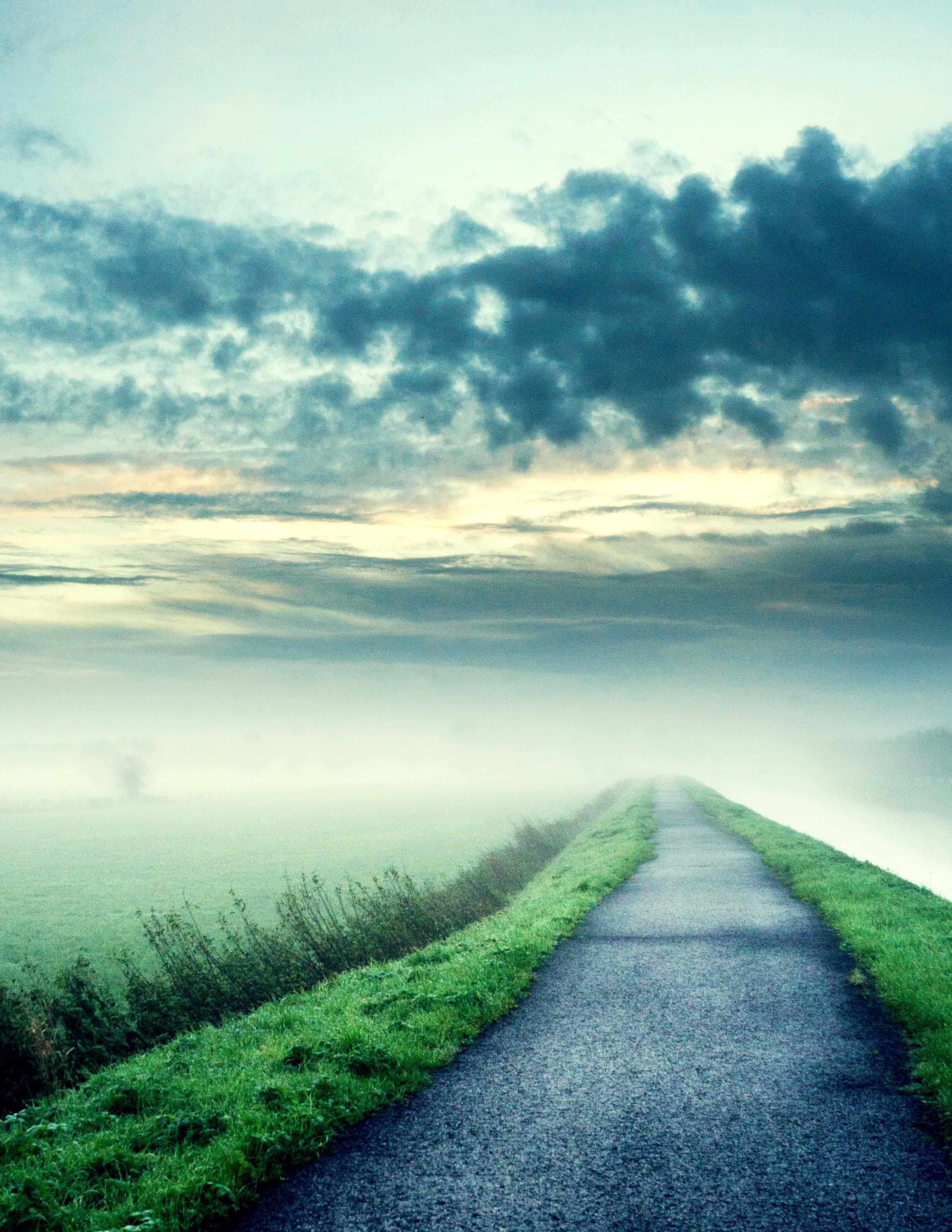
82 www.IamAwareNow.com BURT KEMPNER WRITER & PRODUCER
AWARENOW / THE COMPASS EDITION
‘JUST BURT STORIES’ EXCLUSIVE COLUMN BY BURT KEMPNER

THE BECKONING ROAD

I lived once in great contentment, surrounded by creature comforts and vast beauty. I shared my joy, I shared my bed and I had few regrets. Everything conspired to make me stay put, but one morning I glimpsed an unpromising road that whispered “Let’s go.”
Over and over again that humble, mysterious path has appeared to me when I allowed myself to grow fat and complacent and each time I answered the call. I‘m not even sure why. It’s how I’m made, I suppose. I am simply incapable of seeing one of Frost’s less taken roads without wanting to be on it.
Age has made my legs less agile and the hills seem steeper each spring. How many roads are left to me? When the last one appears, let my life have been such that my final words aren’t “No” or “Please,” but, softly, rapturously, “Let’s go.” ∎
Written and Narrated by Burt Kempner https://awarenow.us/podcast/the-beckoning-road


 BURT KEMPNER Writer & Producer
BURT KEMPNER Writer & Producer
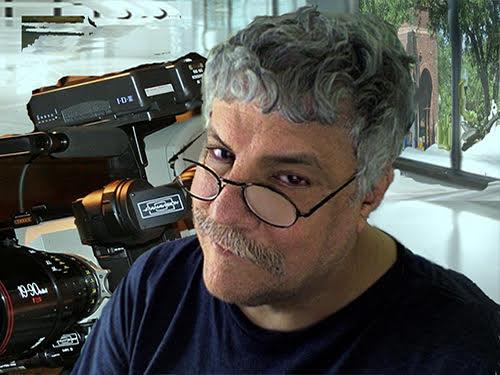
www.awarenessties.us/burt-kempner
BURT KEMPNER is a writer-producer who has worked professionally in New York, Philadelphia, Washington, D.C., and Florida. His work has won numerous major awards, and has been seen by groups ranging in size from a national television audience in the United States to a half-dozen Maori chieftains in New Zealand. Spurred by his love for inspiring young people, he started writing children's books in 2015. Learn more about Burt and his books at his website: www.burtkempner.com.

83
www.IamAwareNow.com
AwareNow Podcast THE
BECKONING ROAD
TO LISTEN AWARENOW / THE COMPASS EDITION
TAP/SCAN



84 Our places can be the most proud during times of greatest injury. www.IamAwareNow.com PHIL EICH MAYOR OF STORYVILLE
AWARENOW / THE COMPASS EDITION
Photo Credit: Phil Eich
‘STORYVILLE’
 BY PHIL EICH
BY PHIL EICH
TIMES OF GREATEST INJURY WHEN OUR PLACES CAN BE THE MOST PROUD
It was may 24th, 2020. This week, the Edenville and Sanford dams failed, releasing all 21 billion gallons of Wixom Lake into the village of Sanford and the city of Midland. A "once every five hundred years" flood caused not by Mother Nature, but by man.
Specifically one man, Lee Mueller, and the company he owns, Boyce Hydro.
Much will be said about Mueller and Boyce Hydro in the coming days. In 2011, the company drained Wixom Lake in order to make repairs, then demanded residents around the lake pay for the $83,000 bill. Taking the lake hostage, Mueller said if residents didn't pay, he would give up his operating license and permanently drain the lake.

In 2018, that license was taken away by the Federal Energy Regulatory Commission on the grounds that Boyce Hydro had "knowingly and willfully refused to comply with major aspects of its license." Its primary concern was the company's 14-year failure to address "inadequate spillway capacity" at its dams. If there was a major flood, the dams would fail.
There was, and they did.
While Boyce Hydro is based in Sanford, Mueller lists his address 2000 miles away in Las Vegas.
Out of sight, out of mind.
And now, Wixom Lake is out of water: dry down to the lake bed, exposing machinery left there when the dam was constructed.
The water evacuated the lake in an hour, destroying Sanford and putting the entirety of the Great Lakes Bay Region at risk. There are smart people saying that Wixom Lake will never return.
People will talk about who's responsible, who's going to pay, and whether their lake will ever come back. But that's not what the people of Sanford talk about now.
Walking into downtown Sanford, chaos and garbage line the road, windows and walls stand cracked and broken, dead fish caked into the mud on the grass and sidewalks.
Volunteers point out where buildings are now compared to where they used to be. Mangled Pontiac Fieros from the car museum are lined up in the road. A man talks about how his grandfather started his business and passed it down through the family.
People ask about how the Stay at Home order works when everyone's homes disappear.
85
www.IamAwareNow.com
EXCLUSIVE COLUMN
AWARENOW / THE COMPASS EDITION


86 www.IamAwareNow.com
AWARENOW / THE COMPASS EDITION
Photo Credit: Phil Eich


87 www.IamAwareNow.com
AWARENOW / THE COMPASS EDITION
Photo Credit: Phil Eich
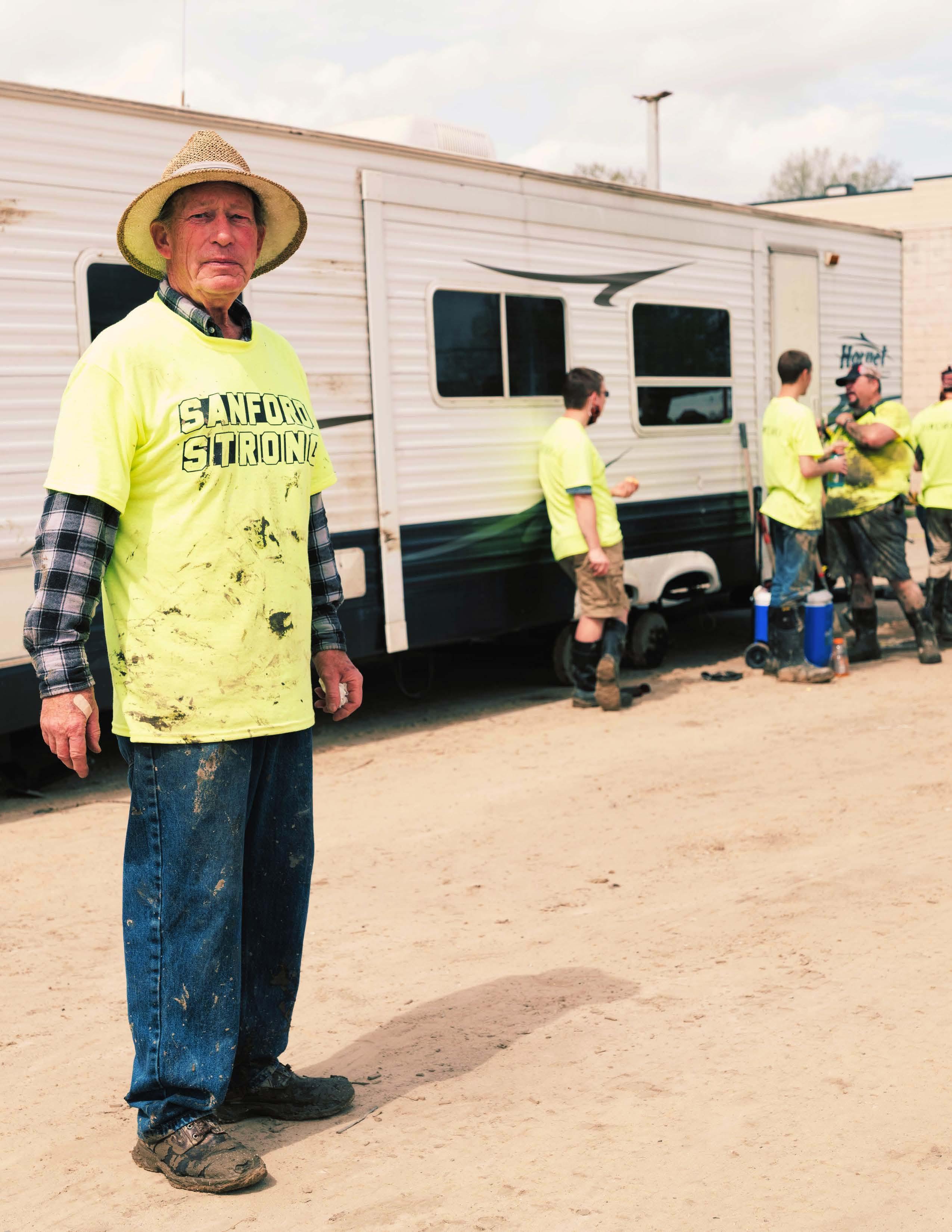

88 www.IamAwareNow.com
AWARENOW / THE COMPASS EDITION
Photo Credit: Phil Eich
They complain about the disaster tourists, walking around in clean clothes, fanny packs, holding a bottle of Coke. I ask them if they think I'm a disaster tourist. They say, "No, this story has to be recorded. People need to know.”
But they mostly talk about being proud to be from Sanford, how they had never seen so many people in their city. They talk about how 11,000 residents in Midland County were evacuated and no one died.
I say, "Sorry to bother you.”
They say, "Thank you for talking to us.”
They dig an American flag out of the mud and hang it over a door to a business in the center of town because to help people work together in a time when no one wants to work together. A business owner cries in the street as a cleanup he expected to take weeks took only the morning.
An older man laughs as he tries to surf on a pair of shovels in the dust. A young girl at a plastic table offers Gatorade and hot dogs. A man stands up in the bed of a truck and yells, "Free beer!" and the street explodes into cheers and laughter. A woman in a van hands him a bag of homemade cookies in return.
Our places can be the most proud during times of greatest injury. Sanford is at its most proud, forced to come together during a time where we are told to be apart.
I walk to the end of what used to be the main street in town and see a man wearing freshly pressed chinos and polo shirt. He works for an international disaster restoration company, and asks not to be named.
“I’ve never seen a town come together like this anywhere in the world,” he says.
Much can be said about a village that now has so little, but for now, there is simply too much to do.
With mud caked onto his face a man says, "We'll rebuild it. It won't be the same Sanford, but it will still be our Sanford.”
PHIL EICH Mayor of Storyville
www.awarenessties.us/phil-eich

Phil Eich is the founder of Storyville, an agency dedicated to telling the stories of our cities to cultivate community pride, support small businesses, and attract and retain talent and investment. Through interviews, writing, photography, videography, and podcasting, Storyville’s human-centered approach to civic marketing allows people to tell their own stories in their own words while shining a light on the greatest strength of our cities: our people. You can follow Storyville at storyville.substack.com

www.IamAwareNow.com
∎ Visit Storyville to watch the video that tells the tale: awarenow.us/story/times-of-greatest-injury AWARENOW / THE COMPASS EDITION
KATHERINE WINTER-SELLERY

FOUNDER OF THE CONSCIOUS PARENTING REVOLUTION

90
www.IamAwareNow.com
Intention, when harnessed with unwavering determination, transcends boundaries.
AWARENOW / THE COMPASS EDITION
‘CONSCIOUS PARENTING’ EXCLUSIVE COLUMN BY KATHERINE
WINTER-SELLERY
IN SEARCH OF ALUMINUM

A LESSON ON INTENTION, DETERMINATION & MANIFESTATION
In the world of business, success is often attributed to a combination of strategy, expertise, and the willingness to seize opportunities that are put in front of you. However, in my experience, there is an often overlooked force that can shape destinies and open doors that seemed impossible to breach: intention. The intention to succeed is the bedrock on which determination is built, without it, we would not have the imagination necessary to envision the impossible or the tenacity to actualize it.
My story begins in 1992, when my entire reputation was on the line. I had just established my own commodities trading business in Hong Kong, and was on the cusp of my first major deal: 3,000 metric tons of aluminum ingot.
To summarize a complex transaction, it was to ship from Krasnoyarsk Aluminium Works (at the time the largest Aluminum producer in the world) to Shanghai Jidian (a leading high-power semiconductor devices manufacturer) in China. After negotiations, contract signing, opening of letters of credit, I awaited a copy of the bill of lading, which would confirm the cargo was enroute. After weeks of radio silence on the shipment, I realized that I would need to travel to Russia for an eye to eye meeting with the suppliers.

In 1992, Russia was in turmoil after the fall of the Soviet Union. Information regarding travel and obtaining the appropriate visa was difficult to come by, and even more difficult to be certain of. Aeroflot informed us we could obtain a visa on arrival provided that we purchased RT flights and hotel vouchers. Upon arriving at immigration in Moscow, however, we were told “NYET” and realized we had been misled.
We spent the night on the floor of the airport unsure if we would receive the entry visa the next day, or be put on a plane back to Hong Kong. The US Embassy said they would make a call, but not to get hopes up! The next day, a KGB agent came and escorted us to an interrogation area and questioned why we would rely on Aeroflot for advice on Russian visa requirements…. After a very lengthy and uncomfortable discussion, we were told to “repurchase our hotel vouchers” from this official directly (at an exorbitant price), clearly an ‘under-the-table' bribe had been built in. At last, we were escorted from the airport and arrived at the smallest and most expensive hotel room in Moscow! Finally, we could attend to the reason for our trip! We immediately went and met the aluminum supplier. It became overwhelmingly clear that, while they were undoubtedly proficient in their engineering work, the payment of their fees in Aluminum ingot had not transpired and they had no clue how to cover their position and honor their contract to me.
As a metals trader the only value we bring to a deal is to ensure we ship by the date specified, to the destination specified and the quality specified. SO, if my supplier defaults, that doesn’t mean I do! I cover my position, buy it from someone else (regardless of the cost to cover) and honor my obligation under the contract! My reputation is on the line, so even if the cost to cover exceeds the sales price, you cover. I can elect to litigate my supplier's breach of contract, and all the losses that flowed, which I eventually ended up doing and succeeding, but, my immediate priority was finding 3000 metric tons of aluminum ingot to deliver to my client! I call this chapter of my life: In Search of Aluminum.
91
www.IamAwareNow.com
AWARENOW / THE COMPASS EDITION
I wouldn’t leave Russia without it. As an up and coming name in the business, if a deal of this magnitude were to fall through it would almost surely sink my company, and put my entire livelihood at stake. Armed with nothing other than my daily declared intention, I rented a small room in the home of a local Russian woman, hired a man named Sergei Kudesheve (who had his PhD from Moscow University in Applied Mathematics!) to be my translator, and I adopted a mantra, “‘I’m not leaving Russia without my aluminum.”
Days turned into weeks, each day a slow and relentless grind. Every morning Sergei and I would work our way through the yellow-pages, contacting one aluminum producer after another, setting up meetings to discuss the possibility of doing business together. We took every meeting we could get our hands on, talking to every person we possibly could, until one day we finally got our break.
While waiting for a meeting with the supplier, I struck up a conversation with an exceptionally kind gentleman in the lobby. It turned out, quite serendipitously, that he was a seasoned business man in Russia, and took me under his wing. He suggested we meet with Transworld Metals Moscow office, he explained that they were the London arm of Krasnoyarsk.
Sergei made the appointment and we went there the next day. UNBELIEVABLY Transworld Metals had sold 3000 metric tons of aluminum ingot, the same grade I required, shipped to the same destination I required a n d t h e i r b u y e r HAD BACKED OUT OF THE DEAL!!
AND YET, IT’S TRUE

Lynne McTaggert wrote a book called The Intention Experiment published in 2007, 15 years before that my personal experience had revealed what her research was later to uncover. All we need is unwavering intention. It’s not about the mechanism, it’s not about the how or even the who. The universe tested just how committed I was to my intention, I got to commit and recommit to it and take the steps which occurred to me that would bring me closer to realizing it.
I had NO IDEA the how, or the when, or even the where I would find my 3000 metric tons of aluminum. I only knew that I wasn’t leaving Russia without it. At times the uncertainty was cripplingly painful. I wanted to go home, I missed my husband, I was alone, and crestfallen. And I just kept doubling down on my intention and commitment that I wouldn’t leave Russia without my Aluminum. What I came to realize was that life had co-conspired with me to co-create my declared outcome.
At its essence, this narrative speaks to the universal human capacity to overcome challenges, break barriers, and manifest dreams. It reminds us that intention, when harnessed with unwavering determination, transcends boundaries and empowers individuals to “find their aluminum”. ∎
KATHERINE WINTER-SELLERY Founder of the Conscious Parenting Revolution
www.awarenessties.us/katherine-winter-sellery
For over 20 years, Katherine has taught and coached thousands of parents, educators, social workers, and medical professionals in half a dozen countries through her popular workshops and coaching programs. Katherine is a 3x TEDx Speaker, and Amazon best selling author of “7 Strategies to Keep Your Relationship With Your Kids from Hitting the Boiling Point” as well as her workbook A Guidance Approach to Parenting. She has been featured on local television shows across the US and a guest on over 40 podcasts. In addition, she is also a trained mediator, is certificated in different trauma models, teaches a breathing meditation modality with the Art of Living Foundation, ran her own commodities-trading business in Hong Kong for 30 years, and is on the Board of Directors for the International Association for Human Values (IAHV). IAHV has held special consultative status with the United Nations Economic and Social Council (ECOSOC) since 2002, and contributes to the 17 Strategic Development Goals of the UN.

92
www.IamAwareNow.com
A NEEDLE IN A HAYSTACK IMPOSSIBLE BEYOND BELIEF IMPROBABLE UNLIKELY
AWARENOW / THE COMPASS EDITION


94 www.IamAwareNow.com
AWARENOW / THE COMPASS EDITION
Featured Artwork by: @sagegallon
ART STREAMS ARTISTS WITH A CAUSE
What
if screens could sustain artists and support causes while engaging audiences around the world with playlists of art? Soon they will, as we prepare to unveil AwareNow Art Streams.

While some stories are told with words, others are shared with art. AwareNow Art Streams , a digital art subscription service, will bring playlists of artwork to venues around the world with a platform that supports artists and causes.
Subscribers will choose an artist collection or cause category. The playlist of art, along with selections of music from our AwareNow Music Library , will be streamed to their screen via the AwareNow Stream Player . Simply plug the device into your screen’s HDMI port and it becomes a digital gallery experience. With AwareNow Art Streams, we bring collections of artwork to your audiences, providing access to pieces that inform and inspire.
A revolutionary model for art distribution, what we are building will sustain artists and musicians with revenue from subscription fees, artist exhibitions and cause installations. The narrative needs to be rewritten. As opposed to ‘starving artists’, we need to have ‘sustaining artists’.
Stay tuned for more details as we curate a community of artists and build a platform to serve causes and sustain the arts. ∎


95
FEATURE STORY WITH AWARENOW
STREAMS
ART
AWARENOW / THE COMPASS EDITION

96 www.IamAwareNow.com
AWARENOW / THE COMPASS EDITION
Featured Artwork by: @sagegallon

97 www.IamAwareNow.com
AWARENOW / THE COMPASS EDITION
Featured Artwork by: @sagegallon


98
www.IamAwareNow.com
If we cannot see what is projected on us, we succumb to these devices becoming a conduit, a superspreader of negativity.
AWARENOW / THE COMPASS EDITION
DR. TODD BROWN FOUNDER OF THE INSPIRE PROJECT & CO-FOUNDER OF OPERATION OUTBREAK
PROJECT’ EXCLUSIVE COLUMN BY DR. TODD BROWN
IT’S NOT ME
IT’S DEFINITELY YOU


Sticks and stones may break my bones, but words can never hurt me. Whoever the f**k said that was a god***n idiot. Sorry, are you offended by my language? Well, that's your fault. What if I throw in a few 'jokes' about people with AIDS or sprinkle in some homophobic slurs? Hey, I'm not being offensive. You are the one being offended. Okay, sorry. I was only trying to follow in the footsteps of comedians like Ricky Gervais and Dave Chappelle, who think their commentary cannot be inherently offensive.
Where did I get that idea? I recently watched a snippet of a Ricky Gervais interview in which he discussed the arrogance of people thinking that they deserve to go through life without being offended. I don't want to misquote him, so below is the full quote from Mr. Gervais:
“How arrogant are you to think that you deserve to go through life with no one ever saying anything that you don't agree with or like? I want people to stop saying that jokes are offensive. I want them to start saying I found it offensive. Because that's all it is. You're just telling me how you feel about it. There's nothing intrinsically offensive about this joke. It's trying to make I'm offended sound important. It's no different than saying I've got a pain in my leg. I believe you, but it has nothing to do with me. But you shouldn't hurt people's feelings. Well, you can if their feelings are wrong. You know, if you don't like the facts, don't change the facts. Change the feelings. You don't have to pave the jungle. You can just grow a pair and have a laugh about it.” (1)
That's an interesting point of view, especially coming from a wealthy, straight, cisgender white man. After watching the segment, I went outside to my porch and sat in my thinking chair. Sitting there listening to the birds, I began thinking about Mr. Gervais' one-sided reflections and how his statements permit people to shirk accountability for what they say. At its core is victim blaming.
First, he insinuates that comedy equals fact. I understand that comedy is rooted in subjective social commentary based on what will sell tickets, especially his brand of comedy. GLAAD has called his humor ‘dangerous’. "We watched the Ricky Gervais' comedy' special on Netflix. It's full of graphic, dangerous, and anti-trans rants masquerading as jokes. He also spouts anti-gay rhetoric and spreads inaccurate information about HIV." (2). So much for facts. But hey, Mr. Gervais, kudos to you for your Ben Shapiro impression.
Let's take a quick peek at whom Mr. Gervais is making fun of, shall we?
• 45% of LGBTQ youth seriously considered attempting suicide in the past year.
• 58% of LGBTQ youth reported experiencing symptoms of depression.
• 36% of LGBTQ youth reported being physically threatened or harmed due to their sexual orientation or gender identity.
• 37% of transgender and nonbinary youth reported being physically threatened or harmed due to their gender identity.
• 73% of LGBTQ youth reported that they had experienced discrimination based on their sexual orientation or gender identity at least once in their lifetime.
• 71% of transgender and nonbinary youth reported that they had experienced discrimination based on their gender identity. (4)
99
www.IamAwareNow.com
‘THE INSPIRE
AWARENOW / THE COMPASS EDITION
Maybe none of this would happen if those people would 'just grow a pair’. Hilarious, right? I wonder if his view would be the same if he ridiculed the African American population relentlessly using the N-word. I'm sure they would "grow a pair and have a laugh about it”. Mr. Gervais also laughingly jokes about "God giving babies AIDS in Africa." Maybe those babies will grow up and find it funny one day, but something tells me they won’t.
"Jokes cannot be offensive" is also an interesting statement. 'Jokes' are intended to be lighthearted statements in which the wording is an individual's observations. Not only do Mr. Gervais and several other performers continually veil their racism and homophobia behind a curtain of 'jokes,' they are then passing the blame for what they have decided to say to the audience by stating, 'I want them to start saying I found it offensive. Because that's all it is.' Mr. Gervais is ridiculing marginalized communities. That's all it is. By masking his sentiments as funny, ha-ha's, he not only furthers the marginalization but also normalizes it. Making fun of someone's lifestyle becomes okay because it's just a joke. Mr. Gervais doubles down when saying people are 'just trying to make I'm offended sound important.' Clearly, the person making the offensive statements isn't the problem. The person on the receiving end is the problem. After all, if I throw a brick at you and you get hit, it's your fault.
Many people have said, "Well, if you don't like it, don't watch his specials, or don't go to his shows." The statement is a perfect example of entirely missing the point. Of course, people that find his jokes offensive will not take part. But who WILL take part are the people that find his marginalization and bigotry entertaining. His 'jokes' will only reinforce their opinions, furthering the lack of acceptance for people in society who are only trying to live their lives. Unfortunately, the purpose is to line comedians' pockets while helping cultivate the next generation of bigotry.
As discussed in previous writings, language holds incredible power over us. It can shape our today and motivate us for tomorrow. It can also manipulate us. Speech and social behaviors are cyclical, like horrible fashion that never actually goes away. It just hides until a new generation discovers it. People like Ricky Gervais shake off responsibility and hide behind the art of performance. But at what point should people be held accountable? While some statements are just harmless opinions, it is a slippery slope. We are all entitled to our opinions, but we should also understand the impact of such views. If one of my children says something hurtful to another, I must explain why they should not do that because it is hurtful. But not only do comedians make a living doing it (some more than others), they get a free pass because it's 'only a joke.' To flip the words of Mr. Gervais, how arrogant are you to think you deserve to go through life with no accountability for what you say?
I know that some readers will object, saying that his behavior and commentary are meant to be funny, but I disagree: Our internet-driven, hyperconnected society means that the kind of people who admire Ricky Gervais' comedy already know where to find him. Mr. Gervais knows this too, which is why he continually is trying to capitalize on shock value that results in victim blaming because "it has nothing to do" with him.
We all have differences, but understanding the importance of living harmoniously benefits everyone. We must recognize that division is true to some degree, but we should call out those who amplify it for personal gain. If we cannot see what is projected on us, we succumb to these devices becoming a conduit, a superspreader of negativity. We can all benefit by holding those accountable who try to run away from their words. And that’s no joke. ∎
References
1. https://www.youtube.com/watch?v=27ACpn779PY
2. https://www.theguardian.com/culture/2022/may/25/ricky-gervais-netflix-special-condemned-by-lgbtq-groups-for-anti-transrants-masquerading-as-jokes
3. https://www.hsph.harvard.edu/news/hsph-in-the-news/transgender-youth-at-risk-for-depression-suicide
4. https://www.thetrevorproject.org/survey-2022
DR. TODD BROWN
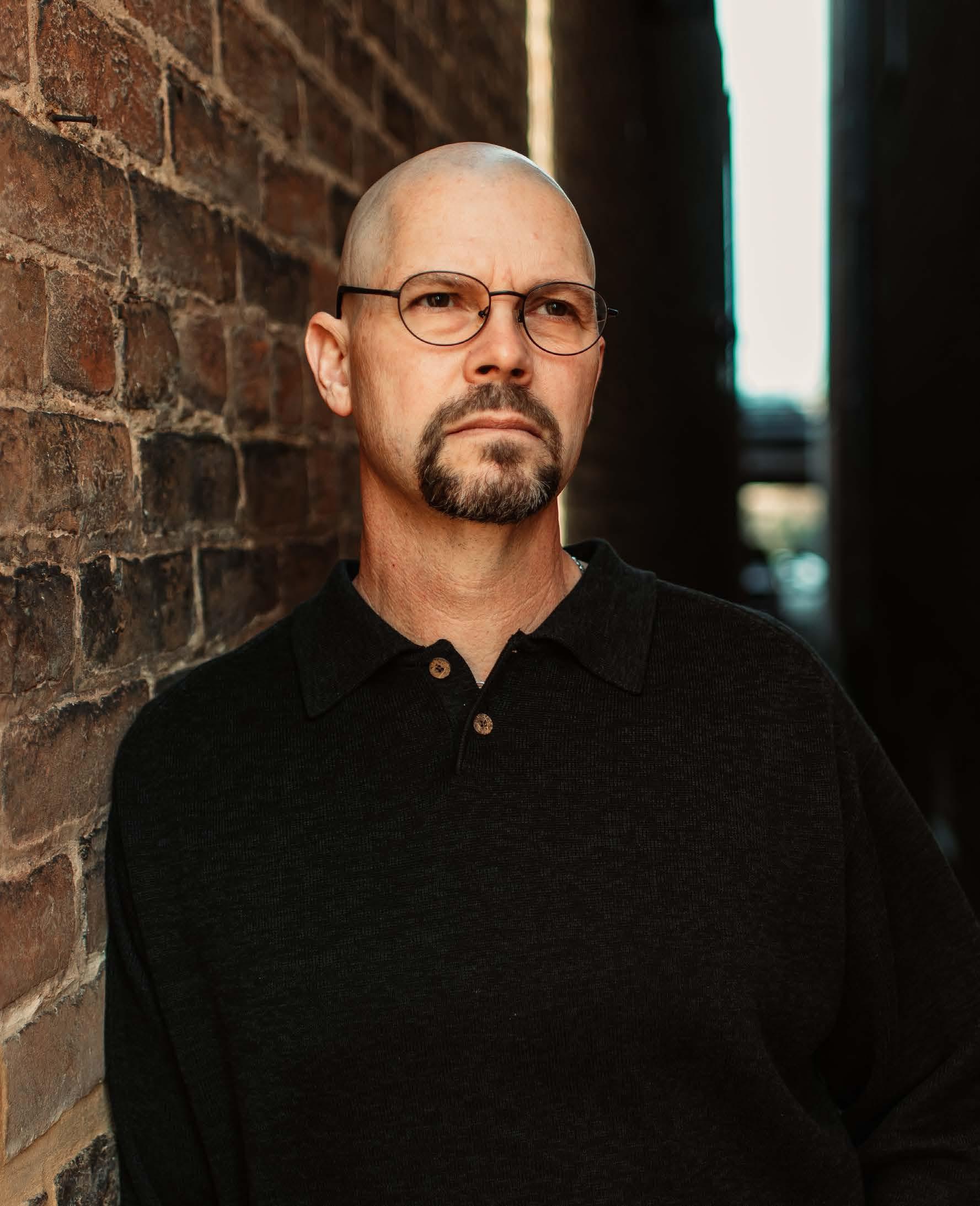
Education Ambassador for the United Nations and the Center for Disease Control (CDC)

www.awarenessties.us/todd-brown
Brown is a winner of multiple education awards, including the U.S. Congressional Teacher of the Year Award, U.S. Henry Ford Innovator Award, Education Foundation Innovator of the Year, and Air Force Association STEM Teacher of the Year. Dr. Brown is the creator and founder of the Inspire Project and cocreator of Operation Outbreak, which was named the Reimagine Education Award for Best Hybrid Program in the world. He is also an Education Ambassador for the United Nations and an Educational Ambassador of the Center for Disease Control (CDC).
www.IamAwareNow.com
AWARENOW / THE COMPASS EDITION



102
www.IamAwareNow.com
They said I could donate and asked if I wanted to proceed. I said, “Of course, I do.”
AWARENOW / THE COMPASS EDITION
BRIAN MARTINDALE FOUNDER OF KIDNEYS FOR KIDS
EXCLUSIVE INTERVIEW WITH BRIAN MARTINDALE



KIDNEYS FOR KIDS THE GIFT THAT KEEPS ON GIVING

Brian Martindale launched Kidneys For Kids, after becoming a living kidney donor in 2013 to a 10 year old girl who he did not know prior to seeing her story. Since then, Brian has advocated for many others, as Kidneys For Kids continues its mission of seeing children receive life saving kidney transplants.

ALLIÉ: Driven to find 100 kidneys for 100 kids, Brian, you're going to drive across the country to save the lives of children you've never met. Your search for 100 kidneys and 100 donors is a result of a 10-year-old girl and a kidney donation that you made. Would you please share with us Jessica's story?
BRIAN: Well, Jessica's story actually begins a little before Jessica. In 2010, because of a clothing brand I owned called Karma Inc Apparel, I was introduced to a young man who needed a kidney not for the sake of donating. He was a big fan of the band, Tantric, and Tantric was playing in Bay City. I had approached them and other musicians about our clothing brand that my son and I designed. We like the same types of music, so we were approaching different musicians, "Would you consider wearing our shirts on stage?" At the time, we gave 10% of the proceeds to charity. Kevin Figueiredo, Tantric's drummer at the time, wore one of my shirts and invited me to the show. And that's how I
CLICK, TAP OR SCAN TO WATCH NOW AWARENOW / THE COMPASS EDITION



104 I get a gift every time I see Jessica. www.IamAwareNow.com BRIAN MARTINDALE FOUNDER OF KIDNEYS FOR KIDS AWARENOW / THE COMPASS EDITION
Photo Courtesy: Brian Martindale
BRIAN: (continued) Brent had needed a kidney at that time for about three to four years. He didn't have health insurance and was trying to get into the program at U of M and driving back and forth 100 miles each way and needing health insurance. He needed financial help. So, Kevin's idea from Tantric was to help raise money for him using our shirts. Then they would give their band's design, and we would make a combined band shirt to sell for Brent's benefit.
After the concert, I got to know him pretty well over the next six months. I'd never seen what anybody went through on dialysis up close who needed a kidney. Seeing everything he had been through, all the sicknesses he suffered, the big fistula in his arm that looked like an extra bicep, and knowing what he was going through every day... I decided. I researched the U of M program that he was in and found out about peer exchange, where if you don't match somebody, you can donate either in a voucher program or in a peer program, let's say. Your kidney can go to somebody you never meet, and in exchange, you're getting a credit for the person you want to help, and the next available kidney that matches them would go to that person. That's what I was going to do for Brent.
I tested anonymously without him knowing, and I found out I was cleared. I was able to donate, but unfortunately, he was dismissed from the U of M program by a doctor's mistake in early 2012. At that point, he had given me his blessing and said, "Brian, it looks like it's going to be years before I may requalify to get a kidney. If you can help somebody that you see, please do.”
And lo and behold, in September of that year, I was building a physical store for our online clothing brand. We had this little experiment in downtown Bay City. And on the last day of building, I ran out of chewing gum. I've told this story hundreds of times, but it's all true. I have a knack for chewing gum. Years ago, I was a smoker. Fortunately, I stopped and took up chewing gum. So I ran out and had to walk three blocks to the party store in downtown Bay City, and on the counter in front of the register was this little girl's face. I took the paper back and read the story at the store privately. Her mother had stood in front of Walmart with the big pink sign saying, "My daughter's in kidney failure, I can't lose her. Please help." And I answered.
I was just moved to call, first of all, her mom anonymously to make sure I was a blood type match and we were. Then I contacted the University of Michigan, and I asked to be retested specifically for Jessica Schwerin. I went through the testing again over a few weeks period. And they didn't give the results to me until late October or early November that I was cleared. They said I could donate and asked if I wanted to proceed. I said, “Of course, I do.”

Then Jessica and her mom weren't notified until the day before Thanksgiving of 2012. Stacy said in an interview right afterwards that she screamed so loud, I should have heard her because we live four blocks away, but we had not met. At that point, the day before Thanksgiving, they knew they had a donor.
A friend of mine from Detroit, who had formerly been a reporter for CNN, knew I was going to donate. I kept it pretty quiet except for family members and a few friends. She had seen Jessica's stories already in the newspaper and they knew there was a donor, but they didn't know who. She asked if she could do an introducing interview between the two of us. She approached them and myself. She interviewed them first and then brought me out, did it right in my store. So we met in early December for that interview. And then the second time we met was January 11th, 2013. Then we rode together in a donated limousine down to U of M. We talked for an hour and a half and I went off.
There's an inn at the University of Michigan for patients going to surgery. They didn't have room at the end for me. They sent me over to the Holiday Inn next door. So I was alone that night with just my thoughts, and I didn't sleep. I waited until 5:00 in the morning until they took me to prep me. At 7:00 in the morning on January 11th, 2013, I became her kidney donor. That was on a Friday. They wheeled me over to Mott Hospital because it's connected to the transplant center by a bridge on that Sunday, 48 hours later. And the little girl I had ridden down with who was very white and pale and thin was now full of color and looked totally different than I'd seen her 48 hours ago.
105 www.IamAwareNow.com AWARENOW / THE COMPASS EDITION


106
www.IamAwareNow.com
The trip is meant to give life to children’s stories and to expose them to possible living kidney donors.
AWARENOW / THE COMPASS EDITION
BRIAN MARTINDALE FOUNDER OF KIDNEYS FOR KIDS
ALLIÉ: Thank goodness that you ran out of gum.
BRIAN: Yeah, it's true. I've experienced so many things since I donated, that connected me with other people who needed kidneys by chance. It introduced me to family members that needed kidneys that I've advocated for. It can be like Jessica and I were just around the corner, four blocks away, and probably even walked by each other several times or many times over the years. I lived in that location for probably about three years. And to never meet somebody that close and then become part of her life... We'd have an annual pizza party every year at our favorite Roma's Pizza in Bay City. We grew close over the years until now my wife and I consider it as if she was like a daughter to us. She's at Eastern Michigan University studying to be a neuroscientist. She's also the secretary of our Board of Directors for Kidneys for Kids.
ALLIÉ: That's amazing. So, in addition to saving Jessica's life with your own kidney, you are now dedicated to saving the lives of children needing life-saving transplants. Right now, I want to talk about Kidneys for Kids. This is the nonprofit that you founded. How is it that you help these children and their families?
BRIAN: Well, first and foremost, I should say our mission at Kidneys for Kids is to provide financial assistance. If a family has a child going through a transplant or going through treatments such as dialysis and they have bills that are unpaid by insurance, kidneys for Kids covers those, with right now, small micro-grants to start. But we actually, after being an official nonprofit for less than seven months, just gave our first grant last Friday. That is our continuing mission is to support families financially. I've advocated over the years since I donated several times for mostly adults. Last year, I successfully advocated for an adult friend. I got her story on TV5 in Bay City and got it heard. I saw the response to that story and I thought, "Well, why couldn't I do something bigger? Why couldn't I do something nationally?” As I researched more, I found there are 1,100 children on the transplant list who need a kidney today. There are about 9,800 other children who are on dialysis, who might or probably will need a kidney in the future. When I found out about those statistics, I geared everything towards children. I still, on this trip, will be doing some advocating interviews for adults. I can't avoid the fact that there are 96,000 adults right now who need a kidney, and 13 people pass away every day waiting for a kidney.
ALLIÉ: 13 every day?

BRIAN: Every day. And those are just people that are listed. That doesn't count people that haven't made the list or are medically ineligible that passed. So, there are more than 13 a day.
ALLIÉ: The need is real. I want to talk to you about this cross-country trip that you are planning. Your course is set. You've got a mission. 100 donors. So, tell me more. I need to know more details about this trip. What are you going to be doing on this trip?
BRIAN: The trip is meant to give life to children's stories and to expose them to possible living kidney donors. That's my job is to be a messenger. We're scheduling hopefully up to 50 different cities with the timeframe we have this summer in the electric vehicle. We hope to carry up to 50 different TV interviews, and most will be with families with a child who needs a kidney transplant. I'll be there to advocate and tell people that I'm 10 years out, I'm 61 years old, and I do everything. I run around like a 30-year-old just like I did when I had two kidneys, with one. And you can do the same thing. You can live a healthy life like I do, a productive life, and share your spare with somebody else. And that's what we call it, "share your spare" and save their life.
107
“I found there are 1,100 children on the transplant list who need a kidney today.”
www.IamAwareNow.com AWARENOW / THE COMPASS EDITION
ALLIÉ: Share your spare. I love that.
BRIAN: The complicated part is trying to string together different states because we have four children, for example, in Texas. We have a couple of children in California. We have three children in Florida. And then we have some states where we know there are children, but none that have come forward and asked, could you help get our story out? So in some of the cities that I get to like that, we'll be visiting transplant centers to carry out maybe multiple stories of children and a combination of adult stories. But the goal is, with my national exposure, I hope to get, on average, only one in 50,000 people to become a living donor. That's why I have to reach such a large audience across the United States if I have hopes of actually spurring 100 people to donate a kidney to a child or an adult.
ALLIÉ: Let's pause for a moment here, because you're going to find all of these adult donors, but for child patients. I guess I wasn't aware that that was possible.
BRIAN: Yeah, and that's a big message that I'm sharing with people. Most adults can't fathom that as an adult you can donate a kidney to a child who is as young as two. Actually, sometimes younger than two depending on height and weight. For example, last year when I visited the Pfaff family in Norfolk, Virginia. Their son Cooper needed a kidney at that time and we got a story done on him. Ultimately, his father became the best match. And in December, he became his son's donor. Cooper was 20 months at the time, 21 months at the time he received the kidney. But he was big enough when I was there at 18 months. At transplant, the kidney is placed in a stomach pouch. In a child, that's small, sometimes a kidney has to be removed. Most times, the kidneys are left in place. And then the third kidney is just put right here, and then the connection is brought over to it. That's why I'm getting adults to fathom that yes, you can save this little baby's life with your full-size kidney.
ALLIÉ: That's just wild to me. I do have another question that I have to ask. For the gift of life that you gave by donating your kidney, what kind of a gift did you get in return?
BRIAN: I get a gift every time I see Jessica. Seriously. I mean, I've got to see her go through her teenage years that she wouldn't have had normally or been on dialysis through and lived a very isolated life like some children I'm trying to help this summer do now. And seeing her go through high school; we went to high school plays with her. Seeing her get her college scholarship, and being there to be involved. And when she comes home and when we visit, we talk on Zoom, every time I see her, I truly do get a gift get knowing that she came from that little girl. She's as tall as me now and just beautiful and so smart and doing everything she promised me she would. That's the gift I get.
ALLIÉ: It truly is a gift that keeps on giving.
BRIAN: Yeah, it does every day. ∎
Follow Brian’s journey on Instagram: @kidneysforkids
Learn more about Kidneys For Kids online: www.kfork.org

108
“Most adults can’t fathom that as an adult you can donate a kidney to a child who is as young as two.”
www.IamAwareNow.com AWARENOW / THE COMPASS EDITION
 KATYA ARMISTEAD ASSISTANT VICE CHANCELLOR AND DEAN OF STUDENTS, UCSB
KATYA ARMISTEAD ASSISTANT VICE CHANCELLOR AND DEAN OF STUDENTS, UCSB


110
www.IamAwareNow.com
You deserve to be here.
AWARENOW / THE COMPASS EDITION
YOU BELONG HERE FEATURING DR. KATYA ARMISTEAD
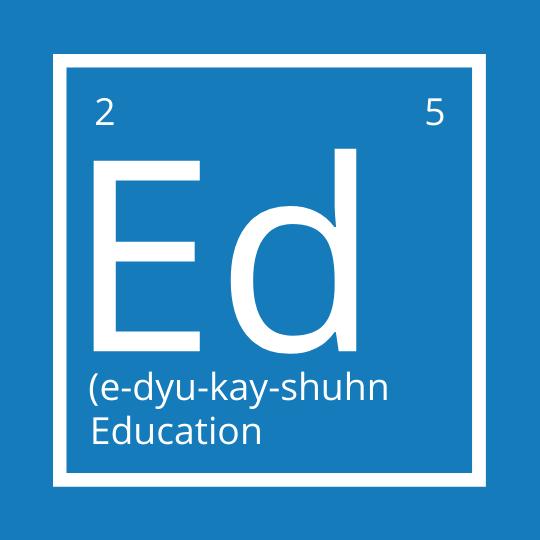
In the realm of higher education, there are individuals who go above and beyond to ensure that education is both accessible to everyone, and a place where students’ voices are heard to meet their needs. One such remarkable student-focused leader is Dr. Katya Armistead, whose tireless efforts and unwavering dedication have made her a prominent advocate in creating belonging at UC Santa Barbara. Even in the face of the most controversial events, Dr. Armistead follows her compass of ensuring that all students feel supported and a part of a community. Her north star is a mantra, “You deserve to be here. You belong here.”
Currently as the Assistant Vice Chancellor and Dean of Students at University of California, Santa Barbara, Dr. Armistead has utilized her position to create an environment that fosters student engagement and activism. She has played a pivotal role in amplifying students' concerns and ensuring that they have a platform to voice their opinions. It’s personal to her.
Growing up, education was hard on Dr. Armistead. With a learning disability, she experienced more disappointments than celebrations. Not being able to spell, write or read well, learning became a negative experience. She did discover one thing she enjoyed though. In high school, she volunteered as a tutor for younger kids with disabilities. Every time she witnessed one of her students celebrate the smallest lesson learned, Dr. Armistead felt joy. And she felt something else too – hope that education was for everyone.
When Dr. Armistead decided to apply to college, she knew that her academic credentials weren’t competitive compared to her peers. When she was admitted to UC Santa Barbara, she knew that people took a chance on her. Access to higher education for Dr. Armistead was offered through the affirmative action policy that the University of California held. That access ignited her path in education, both as an educator and as an advocate.
When Dr. Armistead worked in the admission office at UC Santa Barbara when affirmative action was dismantled, it was the most painful time for her. However, she only stayed disappointed for a moment until a colleague reminded her that it was time to roll up their sleeves and do the work. She led the Campus Visit Program and designed an outreach program targeting underserved high schools in Los Angeles and Kern counties where most students were from low income households and the first to consider a college education.
“You deserve to be here. You belong here.”
During college tours, Dr. Armistead would make sure that current students, faculty and staff with similar backgrounds connect with them to share their experiences of becoming successful college students.

“You deserve to be here. You belong here.”
Students raised in family and community environments where access to college was the norm have been told most of their lives that they belong on a college campus. They are given stories, tips, guidance and endless advise on how to navigate their lives as college students. By the time they arrive, they can hit the ground running. On the other hand, students in underserved communities are not given the consistent exposure of what college is, what resources are offered to them, and how to navigate a college campus. As college students, they feel a lack of belonging, embarrassed and afraid to ask for help. For Dr. Armistead, she learned that access to college was only half the battle. The other half was continuing the access throughout college life, which increased her advocacy work.
111
“Education is life, both informal and formal. It is learning how to skateboard, and finding the right people to help you make a decision. It is sitting in a classroom listening to a teacher, and the healthy debates you have with peers over lunch time. We watch, listen, try it on, and practice until we find the things that inspire us. This is why I only see education through personal stories.” – Dr. Katya Armistead
www.IamAwareNow.com
‘THE DECIDED HEART EFFECT’ EXCLUSIVE COLUMN BY SONJA MONTIEL
AWARENOW / THE COMPASS EDITION


112 www.IamAwareNow.com AWARENOW / THE COMPASS EDITION
One of Dr. Armistead's key achievements has been the establishment of various forums and platforms for students to engage in meaningful dialogue with university administration. She understands that students possess valuable insights and perspectives, which can contribute to the enhancement of educational policies and practices. She recalls the first time she was inspired by students’ idealism and justice, “UCSB students were having a hunger strike to push administration to require an Ethnic Studies course as a graduation requirement and to have more Ethnic Studies course offerings for electives. Their fight was super impressive.”
Walking alongside her students, she has also witnessed black students fight to open the Office of Black Student Development, and took on the brunt force of students from the Sexual and Gender Diversity Group who yelled at her and other administrators to create immediate change around campus safety. Dr. Armistead shared, “Having to sit in the space, hold that, absorb that, and work with them to make necessary changes was challenging and uplifting. I knew that sitting in their emotions was the first step in building trust to create the change they sought out.” Historically, the foundation of college education was created for wealthy white males, then poor white males, then women. Never has college education been changed enough to create space for students of color. Changes that have been made at universities were by the students themselves. They had to fight for their place in higher education.
As Dr. Armistead continues to find spaces to connect with students, listen to their needs, and teach them that they are the only ones who can rely on to create a world of belonging, she anchors to her service. Her dedication to nurturing student organizations has resulted in the emergence of powerful grassroots movements that have successfully influenced institutional policies and positively impacted the lives of students.
Looking ahead, it is evident that Dr. Armistead's work will continue to shape the future of student advocacy. With her visionary leadership and unwavering commitment, she will continue to take on new challenges and navigate the evolving landscape of higher education. By engaging with emerging issues such as mental health, campus safety, and equity, Dr. Armistead will undoubtedly leave an indelible mark on the field, ensuring that students remain at the forefront of educational policies and practices.
To learn more about Dr. Katya Armistead: studentlife.sa.ucsb.edu/about/meet-katya-armistead www.linkedin.com/in/katyaarmistead www.thedheffect.com/consulting www.equitypraxis.com/our-team
 MONTIEL Co-Founder of The Decided Heart Effect
MONTIEL Co-Founder of The Decided Heart Effect

www.awarenessties.us/sonja-montiel
SONJA MONTIEL has served more than twenty-one years in the college admissions profession, having extensive experience in the areas of freshman, transfer, and international admissions. During her time working with thousands of teens and young adults worldwide, she began to witness many societies creating an unhealthy college-bound culture that misguides our young people in their pursuit of living a life of ful fillment. In 2021, Sonja met Hilary Bilbrey to begin something amazing. They created The DH Effect – The Decided Heart Effect with a mission to guide individuals, schools, and organizations to build high-trust relationships and belonging through self-discovery and personal accountability.
113
SONJA
www.IamAwareNow.com
“Having to sit in the space, hold that, absorb that, and work with them to make necessary changes was challenging and uplifting.”
“You deserve to be here. You belong here.” ∎
AWARENOW / THE COMPASS EDITION


114
www.IamAwareNow.com
Little did she know, the only reason she was able to visit was because they did not believe I was going to make it.
MICHAEL PINGLE HUSBAND, FATHER & COVID SURVIVOR
AWARENOW / THE COMPASS EDITION
Photo Courtesy: Michael & Suzette Pingle
PERSONAL STORY BY MICHAEL PINGLE
BLESSED HEALING DESPITE THE ODDS
I was a normal, healthy, 57-year-old guy. I had no real underlying conditions outside of mild hypertension and hyperthyroidism. My daily medication consisted of a low dose water pill and cholesterol med. I loved the outdoors, hunting, hiking, working in the yard and cooking. I went to work every day at the same manufacturing company for the last fifteen years as a quality inspector.
March 9th, 2021, I tested positive for Covid 19. I remember having a sore throat, cough, and a fever. I was quarantining upstairs while my wife was downstairs. Our teenage daughter went to stay with family. By March 14th, I remember feeling like I was going to die. I don’t remember anything beyond this point. That same day, my wife was starting to feel sick. She called our primary care doctor, Dr. Norine Tracy, to see if there was anything she could do for me or if I should go to the hospital. Dr. Tracy called in 50,000 units of Vitamin D and Zithromax, for both my wife and me. She also prescribed cough medication with codeine for me. She told my wife to monitor my oxygen, and if it dropped below 88 to take me to the hospital. Our friend Barb dropped off a pulse oximeter in our mailbox, and my wife went and picked up the prescriptions through the pharmacy drive through.


While my wife was gone, my oxygen dropped down to 84 and would not come back up. I called her, and she hurried home and took me to the Memorial Emergency department in Owosso. Upon our arrival, I could no longer support my weight to walk. My wife went to get a wheelchair and get help. The emergency staff helped transfer me to the wheelchair, but would not allow my wife to come in due to Covid protocols. They told her she could call in about an hour for an update. Since we lived a half hour away, she waited in the parking lot checking in every hour until they told her they were admitting me. Three hours later she went home, not knowing what was going to happen. The next morning I texted my wife, and asked her to bring some things from home. The hospital said I would be there for about three days. My sister Patty dropped off my things from home, because my wife had now tested positive for Covid as well.
My wife texted and called me later that day checking on me. She was so worried when I didn’t answer that she called the hospital. It was then that she found out that my lungs had collapsed, and I was having difficulty breathing. They put a chest tube in to drain the fluid from my lung. The next morning, I was able to send her a picture of myself on oxygen with a message saying I was very tired and having a hard time breathing. That was the last thing I was able to send.
Two days later, my wife got a call from the ICU stating that they had placed me on a ventilator, and that I had given them consent to do so. My lungs were still collapsed, and I was still testing positive for Covid. I continued to have difficulty breathing on my own. She called daily for updates, and asked them to play my Christian music on my phone so I could listen to it and not be alone. Two weeks later, she had to make the decision to place a peg tube for feeding and a tracheostomy for the ventilator, so I could be more comfortable. At this time she was able to see me for the first time since I had been admitted. She was gowned from head to toe, wearing a mask, goggles and all. I was totally sedated and unconscious. Little did she know, the only reason she was able to visit was because they did not believe I was going to make it. It was for her to see me and say goodbye. This happened twice in the next week. The second time was after I had several blood clots in all my limbs. One was from my foot to my hip. Later, this one broke off causing two strokes. One caused left sided weakness, which resolved for the most part. The other caused right sided peripheral blindness in both eyes. They later placed a screen to block any further clots from breaking off and getting through. I know it had to have broken her to see me with chest tubes keeping my lungs inflated, in addition to the trachea, feeding tube, and ventilator. She said she held my hand and prayed over every part of my body.
115
My name is Michael Pingle, and in March 2021 my life was changed forever.
www.IamAwareNow.com
AWARENOW / THE COMPASS EDITION




116
www.IamAwareNow.com
We were told by the doctors I would most definitely need a double lung transplant.
Photo Courtesy: Michael & Suzette Pingle
AWARENOW / THE COMPASS EDITION
MICHAEL PINGLE HUSBAND, FATHER & COVID SURVIVOR
Our daughter Maliyah graduated from high school and came to visit me in her cap and gown. I felt so proud…
My 4th week at Memorial Hospital, I coded 5 times. It happened every time they tried to move me. Since Memorial does not have a heart surgeon, and they thought I may need a pacemaker placed, I was airlifted to Sparrow Hospital. Prior to getting on the helicopter, one of the ICU nurses, Carmelita, did CPR on me twice. Then, she prayed over me, and told me to behave myself and not to code anymore. Upon arriving at Sparrow, I was admitted to the ICU and observed. moving forward from this day, my heart never stopped once.
I was in and out of ICU several times for various reasons. Pneumonia, blood infections, blood transfusions, high fevers, infections, and my lungs continued to collapse. At one point my wife was called by a nurse and told there was nothing else they could do, and she needed to come and say goodbye. One of my sisters and brother-in-law came with her. Once again, she got all gowned up. The difference here was that she had to wear more like a HAZMAT suit with air blowing into the helmet from the sides. They told her she could visit for one hour.
One month later, I was moved out of the ICU and onto the step down floor. I was allowed to have two visitors added to my visitation list. So, my daughter Maliyah, and my wife were added and visited daily. I do not remember this at all. I slowly recovered and moved onto the rehab floor. You could say I was a bit of a stinker. I was told I had pulled out my peg tube, my trache, and my chest tubes. My poor wife was getting calls in the middle of the night giving authorization for them to be replaced. I don’t remember doing any of this.
I finally moved into Sparrow Hospital’s rehab. I was one more step closer to going home. Here, I was able to get mail from family and friends. My cabinets were covered in pictures of my loved ones. My counter was full of cards with prayers and thoughts. My wife and daughter would read them to me daily. I felt so blessed to have so many praying and caring for me. Our daughter Maliyah graduated from high school and came to visit me in her cap and gown. I felt so proud of her and her accomplishments during such a difficult time. My daughter Paula, who lived in Connecticut, was able to come visit me for a week that July.
Finally, the day had come when I was slowly introduced to soft foods. Oh to eat food again was the best! I didn’t care what form it came in. At first it was puréed foods, then small bites. Then on to more solids. I was so happy! Then it was all taken away again. Too much excitement led to aspiration which lead to pneumonia. I had to go back to the ICU for a short stay. This time when I went back to rehab we took the food more slowly, and I had to be watched and reminded to slow down. I stayed on the ventilator for a total of three months. I was slowly weaned off and moved onto 4 liters of oxygen. When all the sedations and pain medications started coming off, I tried to ask questions and talk, but with a trachea in place you can’t talk, so my daughter and my wife read my lips. They did the best they could until I was strong enough to write again.
I had no clue what had happened to me and had asked my wife if my truck was ok. I initially thought I was in an auto accident. I did not remember getting Covid. She had to explain to me what had happened, but did not fill me in yet on how long I had been in the hospital. Shortly after being in Sparrow rehab, they gave me a speaking valve for my trachea so I could actually talk and make sound. This took a lot out of me and I could only wear it for short periods of time. It was nice to be able to talk and be heard. I was able to join in virtually with my family to celebrate my parent’s anniversary.
We were told by the doctors I would most definitely need a double lung transplant. I had severe scarring in both lungs, and this does not heal. A referral was placed to the University of Michigan hospital for this consult once I was discharged from rehab.

117 www.IamAwareNow.com
AWARENOW / THE COMPASS EDITION


118 www.IamAwareNow.com
AWARENOW / THE COMPASS EDITION
Photo Courtesy: Michael & Suzette Pingle
From Sparrow Hospital rehab I moved to Burcham Hills rehab. I still had a chest tube in place for my lungs to drain into. Here I learned to walk again. I was able to walk to the bathroom with a walker and assistance. This is where I learned I really had no sensation in my feet. I was able to eat full meals, and began to gain some weight back, as I had gone from 220 down to 150. I did one hour of physical therapy and occupational therapy daily. I had regular visitors, even though I really don’t remember that much at all. I attended my daughter’s graduation party virtually which was nice. I was there all day and could rest when needed.
Then one day my chest tube was flushed instead of my peg tube. I knew right away this wasn’t right and called my wife who called someone in charge. I was started on precautionary antibiotics and a chest X-ray was completed. The next day I was found on the floor breathing but non responsive. They thought I had a stroke or something, and I was taken to Sparrow. My wife met us there. While there, my wife said I was jerking and didn’t know who she was. I couldn’t answer any questions and kept saying numbers. She called my sister, who is a neurologist, and told her. She thought I was having myoclonic seizures. Nurses were in and out of the room hooking me up to IVs when I went into a grand mal seizure. This is when my seizures started. I was admitted back into the hospital for four days, then back to Burcham for continued rehab. August 19th, I was discharged home!

They had to do so much to get ready for me to come home. My best friend Dave, and my brother Jim, completely renovated our bathroom making it handicap accessible with a roll in shower and widened the door. They remodeled a room downstairs with new windows, wood floors and widened the door so that our upstairs bedroom could be moved downstairs. My sons built me a wheelchair ramp. My wife had cameras set up so she could watch and talk to me if needed while she was at work. We had help with funding for the renovations from friends, family and our church. My sons also got me the best chair ever. It lifts, massages, heats and reclines. It also has a phone charger.
My wife picked me up, and we drove home. My daughter Maliyah, my buddy Dave, his wife Barb, my brother in law Jeff, my sister Margaret and brother Jim were all there finishing up last minute things. They were busy putting together shower chairs and attaching shower heads.
My dogs! Oh my, how I missed my boys! I was greeted by one at a time while they were leashed, and I was in my wheelchair. The excitement was overwhelming. They missed me as much as I missed them. My wife and daughter prepared a big turkey dinner for my homecoming. My family and friends were able to stay and celebrate. It was a good day indeed.
I had my first appointment at the University of Michigan Transplant Center. After testing was completed, we sat down with a doctor who talked to us about the transplant. His told us he wanted to see us back in 6 months. Two months later, I had pneumonia again. After an x-ray and urgent care visit, I was advised to go back to the emergency room. So back to the emergency department we went. It was packed! So packed they were doing labs on patients and then putting them back in the waiting room. My wife went to the desk and asked to be moved someplace less crowded due to my underlying conditions. We then walked down crowded hallways with full hospital beds, to another hall that had lounge chairs back to back with a number above each like a room number. This is where we were placed. It was less crowded than the alternative. When it was our turn to be seen, we were pulled into a utility closet for privacy and then placed back in the hall until we could get an actual room. These doctors and nurses were working so hard to make the best out of what they had to work with. I applaud them. I was x-rayed, treated and admitted for a few days with pneumonia, then back home.
119 www.IamAwareNow.com
“These doctors and nurses were working so hard to make the best out of what they had to work with. I applaud them.”
AWARENOW / THE COMPASS EDITION
Something that should never heal is healing!
MICHAEL PINGLE HUSBAND,

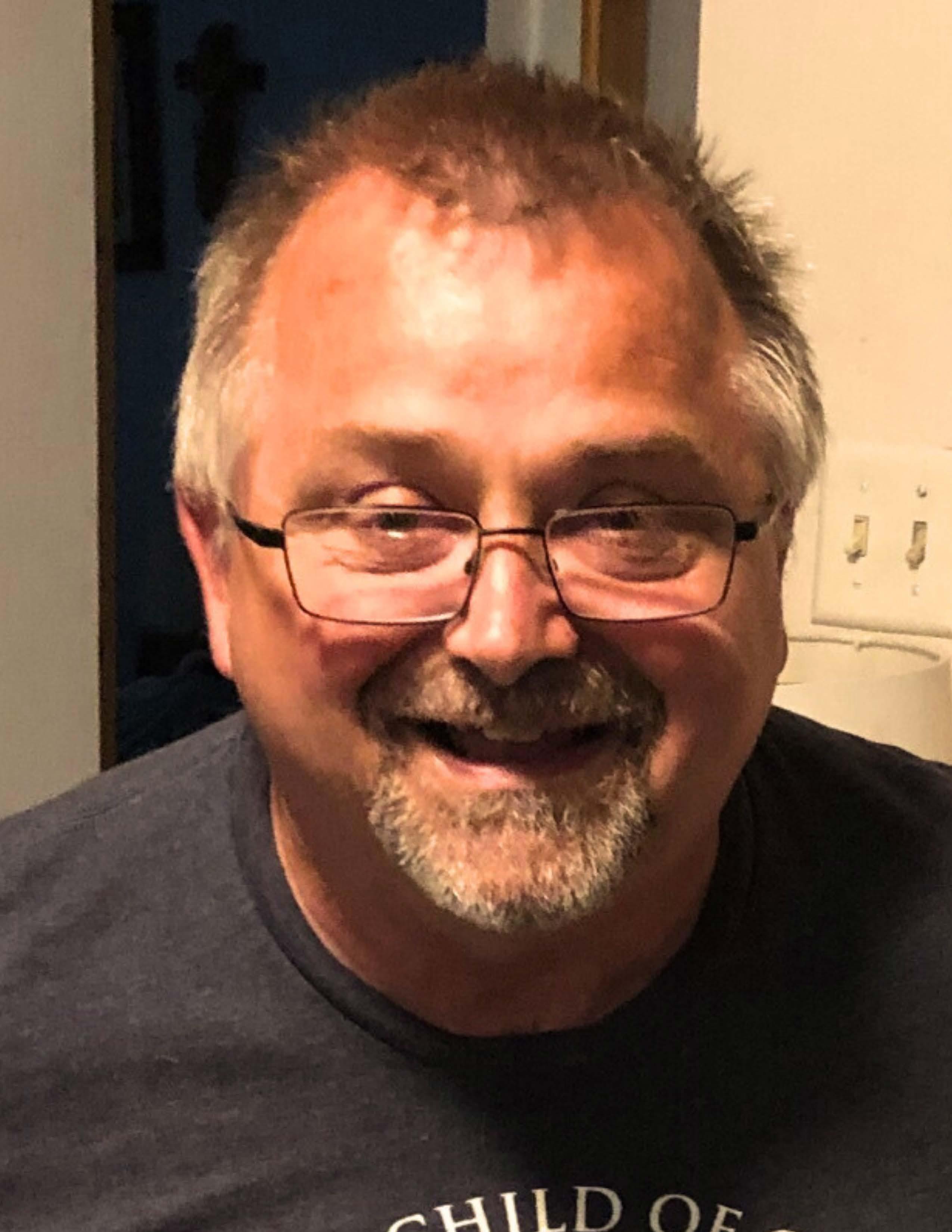
120
www.IamAwareNow.com
Photo Courtesy: Michael & Suzette Pingle
AWARENOW / THE COMPASS EDITION
FATHER & COVID SURVIVOR
It took several weeks to get physical therapy, occupational therapy, speech therapy and nursing in our home. This was all supposed to be handled at discharge, but unfortunately, who they referred us to did not participate with our insurance. Due to Covid, every place was short staffed and would not be able to accommodate the needs I had. Thankfully, Memorial Healthcare was able to help us. We lived just within the boundaries they travel to. They had the best staff that came in, and soon I went from wheelchair to walker to cane.
March 2022, I was watching TV and the words seemed jumbled. I was unable to read them. I thought I was having a stroke. I called my wife at work and told her. She called an ambulance, and my sister called my brother who was nearby. She and our daughter met us at the hospital. They did stroke work up, all negative. My wife went to get her phone charger from the car and when she returned I could no longer talk. I made noises, and grunted. She ran to get help and I was immediately hooked up to an EEG which showed I was having seizure after seizure for four hours straight. I stayed in the hospital for two days and then came home.

I have been staying pretty healthy since that last stay. My wife had Alexa set up to remind me to take my medications and to drink water every hour. I was able to get out and go hunting this past deer season with the help of my buddy Dave. I am able to cook dinner for my wife almost every day and mow the lawn on a riding lawnmower. It’s been a long almost two years, but I have come a long way.
I’ve worked hard with my team of Memorial doctors and all their staff (Dr. Saeed, Dr. Pruitt, respiratory therapy, physical therapy, occupational therapy, and speech therapy). I walk and exercise every day. I have walked as far as five miles twice, but typically walk around two miles with my dogs. Now that the weather has gotten nice, I can be outdoors. I am no longer even a candidate for a lung transplant! Something that should never heal is healing! I rarely use oxygen, and when I do it’s at 1 liter and is mainly for sleep. My memory is a work in progress. My vision will never come back, nor will the sensation in my feet. I will always have seizures. I can never drive again…but I am still blessed! I’m blessed with my wonderful wife, family, friends, God and my doctors. ∎
121 www.IamAwareNow.com
“My memory is a work in progress. My vision will never come back, nor will the sensation in my feet. I will always have seizures. I can never drive again…but I am still blessed.”
AWARENOW / THE COMPASS EDITION
Everyone
PHOEBE COLES

FOUNDER OF VICINUS AND BUBBLE OUT


122
www.IamAwareNow.com
has value. Everyone can contribute to our communities in a positive way.
AWARENOW / THE COMPASS EDITION
A HUMAN RIGHTS HERO A CONVERSATION WITH PHOEBE COLES


Phoebe Coles is a 26-year-old British Cypriot activist and youth leader, passionate about peace building, human rights, and youth action in Cyprus and the UK. She’s Founder of two social action groups, Vicinus and Bubble Out. She has raised money for victims of forest fires, domestic abuse survivors, refugees and migrants in Cyprus. Additionally she is passionate about raising awareness for human rights issues, particularly women’s rights and empowerment.
TANITH: Phoebe I love how passionate you are about youth action. When did it start for you and what was the catalyst?
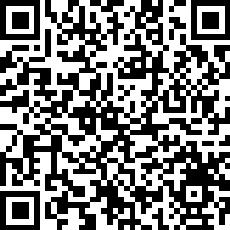

PHOEBE: Youth are the future and it's easy for young people to feel disillusioned and not heard given the current political climate. Together we can have a loud voice and make a difference regarding a whole plethora of issues and topics. When I was younger, I was involved with my local youth council and helped create events for young people. We created surveys to ask them what were they passionate about and what issues were important to them. We had things like knife crime, really important issues that we worked together to help solve. This started my passion for youth engagement in the UK. I realised many young people, including myself, were written off and labelled negatively, called lazy, self absorbed and told that we don't care about issues and current affairs, in fact, I experienced the exact opposite. I found that when young people were given the resources, opportunities and platform to discuss issues we are passionate about, we turn up, we stand up and we speak out. I'm half

www.IamAwareNow.com CLICK, TAP OR SCAN TO WATCH NOW
Cypriot and after school in the UK, started university in
‘GLOBAL GOOD’ EXCLUSIVE COLUMN BY TANITH HARDING
AWARENOW / THE COMPASS EDITION
PHOEBE: (continued) Cyprus. This time in my life was the most inspiring and impactful for me regarding youth action and activism. I wanted to learn more about my separate culture and heritage. I became inspired by the passionate and creative Cypriot activists who are fighting for a peaceful and prosperous united Island and for human rights and equality for all. I found this inspiring and was honoured to be part of it. I started following a few social media pages and I've not looked back. We are a beautifully diverse island located at the crossroads between Africa, Asia and Europe. I found it a beautiful thing in Cyprus to witness young people from diverse backgrounds coming together for a common cause. We're adding value with fresh perspectives to projects and campaigns and that is something I've loved. That's what got me so excited about youth engagement.
TANITH: What was the very first project that you worked on and what were the outcomes?
PHOEBE: My first project was a social action group in Cyprus with me and a few other students at university. It was to support refugees at a camp called Coffee New. In our humble beginnings we collected donations of clothing, non perishable foods, toys and educational books. We were inspired to create this project because we visited the camp during a school project, and saw dire conditions of human suffering. We felt compelled to make a difference. From that project we had great outcomes which inspired us to get more involved. We collected bags of quality winter clothes and, more importantly, a great amount of menstruation products, which was in high demand at the camp. We also collaborated with the local basketball team who donated a basketball. We created an area for children at the camp to have playtime because they have a lot of trauma, and they don't have a place for them to be kids. We were really happy to see them smiling and actually having fun. Since then we've expanded our work to raise awareness for human rights issues raising money for domestic violence shelters on both sides of the island. We hosted a gender conference relating it to youth engagement. That conference provided an opportunity for young people to present their gender research to leading NGOs on the island. We also raised money for toys for a children’s hospital and much more. I want to inspire any young person that a small idea can lead to much greater things. Never feel you're too insignificant or not influential enough to make a difference. Everyone has value. Everyone can contribute to our communities in a positive way.
TANITH: Your main project is ‘Bubble Out’ tell us more about it?

PHOEBE: It’s a multi communal social action group focused on providing a safe space for young people across the island who have experienced mistreatment to share their story anonymously or otherwise in a safe space, usually with a certified psychologist, or through a number of events that we host. We had a young leaders and action programme in Cyprus with the British Council and United Nations that was a peace building project. The reason we're multi communal is because we had the chance to work with different groups on the island. Why is it called bubble out? It was conceived by the idea that we often stay in our own unique bubbles. We don't always reach out, support or learn from other communities and we wanted to encourage facilitation and build bridges between the diverse communities in Cyprus. The division of the islands and the violence that we've experienced by multiple generations in Cyprus. We have a shared trauma and a unique experience. By talking about these taboo subjects we're hoping to bring people together increasing empathy and understanding and contributing to peace building. Young people are often not financially independent and when they speak about mental health or try acquiring services, they often face stigma and a lack of support. In a patriarchal society, women often face oppression regarding their safety and many obstacles when talking about their experiences. Our project aims to give a voice and empower women, youth and other marginalised groups with solidarity and support for free. We've established this platform to share stories and provide support from peers and professionals. We were inspired by our own experiences and what we hoped we would have had at that time that we needed it. A platform to freely speak of how we've experienced discrimination or mistreatment on the island. We hosted our first online drop in event in April last year with a certified psychologist called ‘Share Your Story Online. We managed to reach people normally excluded from the conversation regarding mistreatment. Many refugees joined and we gained valuable insight on key issues they highlighted including racism, sexism, xenophobia and homophobia and how a lot of discriminations are interlinked. Last year we co-organised with an NGO called Queer Cyprus Association, a thematic discussion called ‘In it Together, Let's Talk About Pride and Hate Speech’. That event, moderated by a certified psychologist, participants discussed the effects of hate speech and online harassment. At the time it was really important because, in north Cyprus, we just had an LGBT Pride event. There was a lot of backlash and hate speech online. We wanted to provide a safe space for people to share concerns for their safety and well being. We have an upcoming event with the university in Cyprus and we're going to create a roundtable discussion event about racism and racial discrimination in Cyprus.
TANITH: You won a Global Youth Award for your amazing work in 2022 for Empowering Change. How did it feel to gain recognition through the awards and what would you say to anyone thinking of nominating a young person this year?
PHOEBE: I was really shocked and surprised to win such a prestigious award. I feel so grateful and honoured to be recognised for my voluntary work but also humbled to be in the same category as so many incredible young people
124 www.IamAwareNow.com
AWARENOW / THE COMPASS EDITION



126 AWARENOW / THE COMPASS EDITION
Miles to go before we sleep…

www.IamAwareNow.com
Photo Credit: Adil

THROUGH THESE STORIES WE SHARED I AM AWARE NOW. www.IamAwareNow.com READ, LISTEN & WATCH The Magazine, The Podcast & The Talk Show




































 CHIEF OGIMAA
CHIEF OGIMAA


































































































































 KATYA ARMISTEAD ASSISTANT VICE CHANCELLOR AND DEAN OF STUDENTS, UCSB
KATYA ARMISTEAD ASSISTANT VICE CHANCELLOR AND DEAN OF STUDENTS, UCSB




 MONTIEL Co-Founder of The Decided Heart Effect
MONTIEL Co-Founder of The Decided Heart Effect














